
Bahrain BD 1.50 Kuwait KD 1.50 Oman OR 1.50, Saudi Arabia SR 12.00 UAE DH 10.00 UK £ 3.00, US $ 3.00 VOLUME 20 ISSUE 2 16 th FEBRUARY 2023 20 YEARS Rs. 50
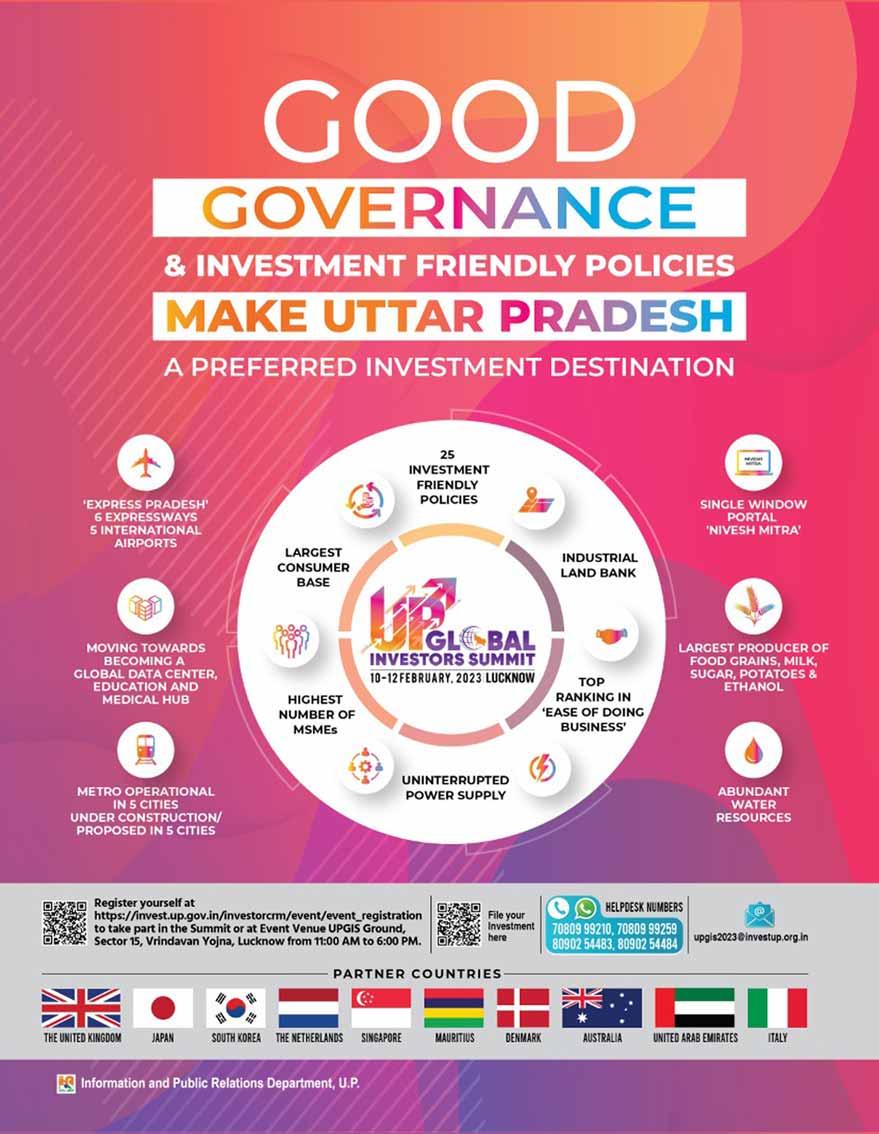
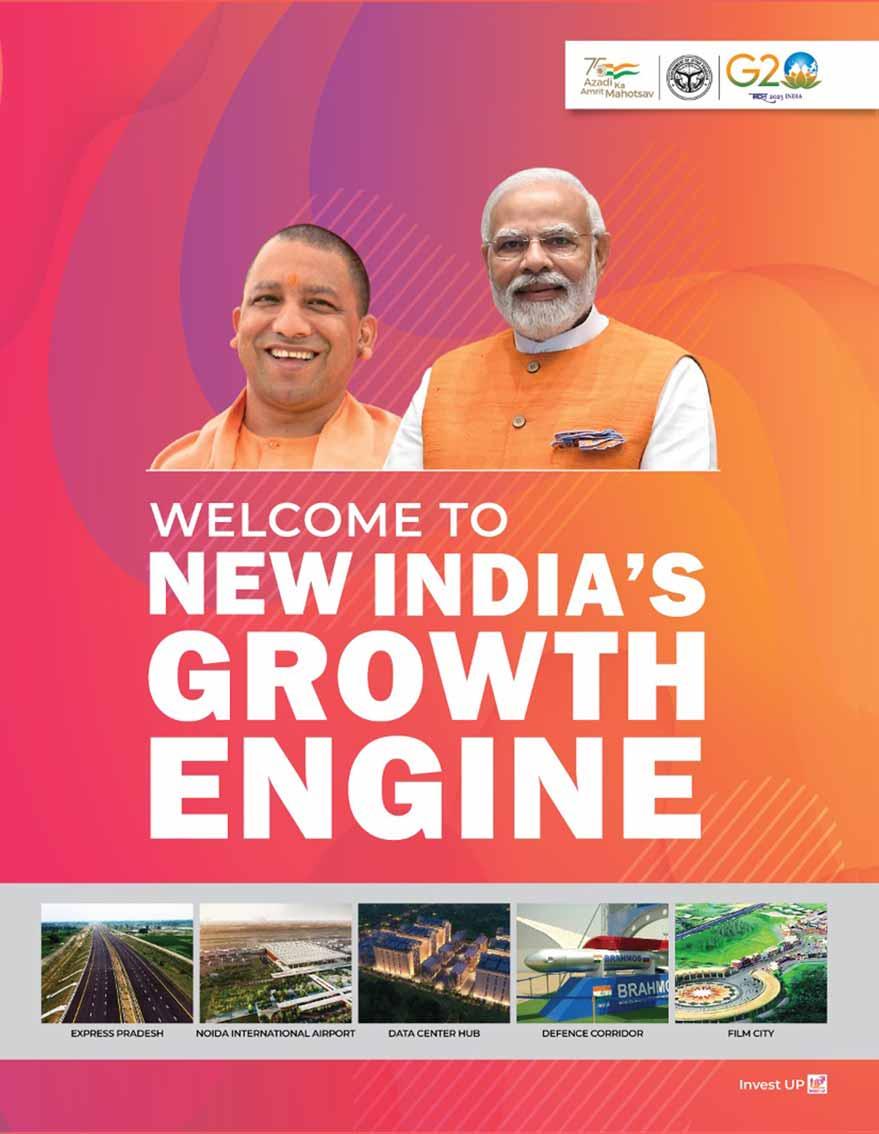

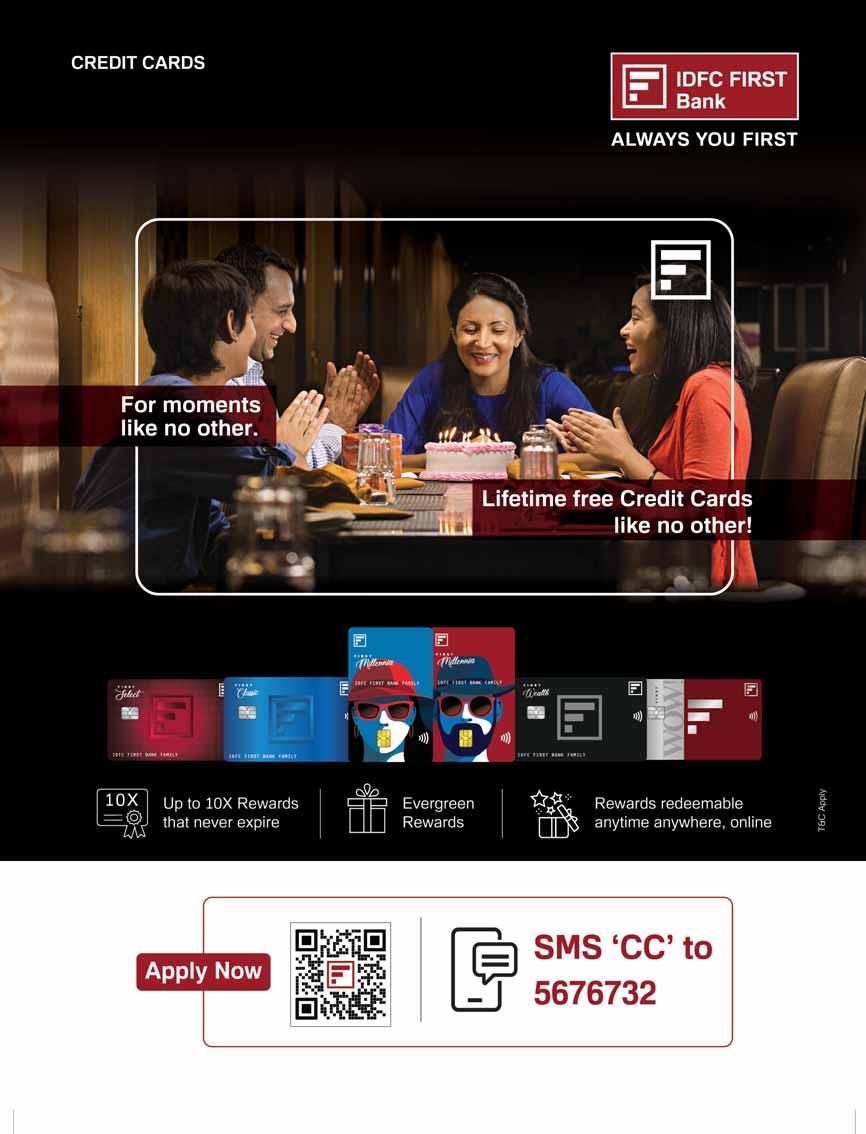
www.seasonalmagazine.com
Managing Editor
Jason D Pavorattikaran
Editor
John Antony Director (Finance)
Ceena
Associate Editor
Carl Jaison
Senior Editorial Coordinator Jacob Deva
Senior Correspondent
Bina Menon
Creative Visualizer
Bijohns Varghese
Photographer
Anish Aloysious Office Assistant Alby CG
Correspondents
Bombay: Rashmi Prakash
Delhi: Anurag Dixit Director (Technical)

John Antony
Publisher Jason D Pavorattikaran
Editorial & Business Office
Cochin: 36/1924 E, Kaloor-Kadavanthra Road, Near IGNOU, Kaloor, Cochin-17.
Ph:0484- 2345876, 2534377, 2340080 Mob. 09947141362
Delhi: H.No: P-108, Uppal Southend, Sector 48, Sohna Road, Gurgaon, Haryana – 122018 Ph: 9891771857|099471 41362
Mumbai: 202, Woodland Heights Building, St. Martins Road, Bandra West, Mumbai400 050 Mob: 919947141362
Bangalore: House No: 493, Block 3 3rd Main, HBR Layout, Bangalore-4209731984836, Email:skmagazine@gmail.com www.seasonalmagazine.com
UK Office: “CRONAN”, Boundaries Road Feltham, Middlesex, UK TW13 5DR Ph: 020 8890 0045, Mob: 00447947181950 Email: petecarlsons@gmail.com

Reg No: KERENG/2002/6803
BIG TECH’S BIG THEFT
THE WORLD IS GOING GAGA OVER CHATGPT, THE ARTIFICIAL INTELLIGENCE BASED CHATBOT DEVELOPED BY OPENAI, FOR ITS STUNNING CAPABILITIES. BUT WHAT IS THE REALITY?

There is a word that is almost used as a synonym for ‘innovation’, ever since the startup culture caught on. Yes, it is ‘disruption’ itself, and how it came to be a positive word despite its quite negative meaning is a feat that only Big Tech could manage on this planet.
It is said that angel investors and venture capitalists have made disruption an important yardstick while assessing the ‘innovative potential’ and ‘scalability’ of startups. For a startup idea to click big-time it should ideally disrupt the lives of the incumbent players and the people they employ. But of course, all for the common good.
Maximum the disruptive potential, maximum will be the scalability. The logic? It is quite simple to understand, and can be explained with two real world examples. Uber has to first disrupt the lives of millions of cab drivers across the world, so that this huge segment will have no option but to enrol for Uber. Or Oyo has to disrupt the lives of lakhs of hotels and lodges, so
Subscriptions Available on iPhone/iPad & Android All health related articles are for first information purposes only. Always consult your doctor before taking any decison affecting your health.
MAGAZINE
Seasonal
Printed & Published by Jaison D on behalf of PeteCarlson Solutions Pvt. Ltd. at Cochin. Printed at Rathna Offset Printers, Chennai-14. All Rights Reserved by PeteCarlson Solutions Pvt. Ltd. No part of this publication may be reproduced by any means, including electronic, without the prior written permission of the publisher. MEMBER EDITORIAL
SEASONAL MAGAZINE
that they will have no option but to enlist themselves for Oyo. But all for the common good.
In olden days when more commonsense prevailed, people would have cried foul that these are nothing but the forcible creation of monopolies, and invited regulatory action. But it doesn’t happen these days, as seemingly there will be ready competitors too, though in reality there will be only one major competitor emerging - an Ola for an Uber or a Swiggy for a Zomato - which makes them powerful duopolies, but which is enough to keep regulators at bay. Again, all for the common good.
What is this kind of disruption really? It is nothing but violent theft, if not looting by broad daylight. To understand this, you should speak to the millions of cab drivers and small hotel owners who were ‘forcibly’ enrolled by these tech aggregators and later left in the lurch. One silver lining amidst this grim scenario is how more and more restaurant owners are now coming out of the shackles of the food delivery aggregators.
But all these hard facts about these disruptive tech aggregators were mentioned here to just show what poor lambs they are compared with the really Big Tech firms, which have been carrying on a grand theft at a much grander scale for decades now.
Remember the time when hundreds of thousands of text bloggers used to live off advertising programs like AdSense? But then Google introduced the innovation of showing snippets from the web pages in the search result itself, which meant that only if the snippets failed to satisfy a reader, will they need to go to a webpage. And Google continued to strengthen the snippets with
more and more features, like the current almost endless Q&A style, which makes sure that no one will find any need to visit the source web pages. But remember, all for the common good.
Wikipedia is another seemingly harmless operation that has amassed other people’s content and made it their own, even while not paying a dime to the content creators. Of course, you will get a citation to your webpage if you are lucky - as per the whims and fancies of that wiki page’s editor - but which is a citation that delivers poor to no value to the content creator. But can you complain? Of course not, as it is for the common good.
Now, artificial intelligence chatbots like ChatGPT take this kind of content theft to an unprecedented scale. ChatGPT being very efficient at understanding user queries as well as in generating answers in its own words, is leaving no trail even of its large-scale theft! High quality content creators who have painstakingly created complex and knowledge-class content are suddenly at the mercy of this AI beast. But no complaints, as it is all for our common good.
ChatGPT’s cousin in graphics and design, DALLE, by OpenAI itself, is similarly being flagged by artists and designers across the world, as their works are being taken without permission or credit and made into DALL-E’s intelligent creation.

One may ask that can’t the content creators prevent this from happening? Oh, yes, they can, but for that a content creator will have to ‘opt-out’ of all such programs one by one - from Google, from Wikipedia, from ChatGPT, from the upcoming Google Bard, and another dozen such grand theft AI schemes coming their way. By default we all have been forcibly ‘opted-in’ into these services. Big Tech reserves such big rights for themselves. All for our common good.
In case you didn’t know it yet, even before ChatGPT recently launched a professional account that costs a hefty $42 dollar a month per user, they have been valued at $29 billion dollars, which is one of the fastest accelerations in value creation ever in this planet’s history.
It is high time that ‘disruption’ is restored to its correct meaning in the English language. At least that, for our real common, collective good.
John Antony
SEASONAL MAGAZINE


CONTENTS
BHAGWANT MANN LEADS PUNJAB

IN INCLUSIVE & BALANCED GROWTH
Much like how the AAP government was a refreshing change in the state when it came to power 10 months back, the first investors summit under Chief Minister Bhagwant Mann’s leadership is showing some refreshing changes already in the run-up to the event.
10 PROVEN WAYS TO LEARN FASTER, FOR CHILDREN AND ADULTS ALIKE

Modern socioeconomics is demanding that both children and adults learn more and more new things, faster. Thankfully, neuroscience has taught us a lot about how our brains process and...
HOW TO FIND YOUR LOST KEY, LIKE HOW A NAVY FINDS A LOST SUBMARINE

Everyone has misplaced something from time to time, be it a phone, wallet, or set of keys. When something extraordinarily valuable, like a nuclear submarine, is lost,
WHY YOU OFTEN NEED TO BE UNHAPPY TO BE SUCCESSFUL
If you make happiness your primary goal, you might miss out on success as well as the challenges that give life meaning. In 2007, a group of researchers began testing a concept that seems, at first blush,

3 RULES TO COMMUNICATE MORE EFFECTIVELY

Actor and science communicator
Alan Alda shares his three rules of three for effective and empathic communication. Whether you are a public speaker or having a heart-toheart, it can be challenging..

HOW GRATITUDE DRIVES HAPPINESS
It really is that simple to make yourself a little happier. And yes, you can get happier in just 3 minutes each day.
THE SECRET HEALTH BENEFITS OF HUMMING

Experts explain why the simple act of humming is so good for the human body.
WHY UNION BANK IS FIRING ON ALL CYLINDERS
The Union Bank stock which had already been on an upswing since July, recently shifted to overdrive after the second quarter results were announced. The recent vertical climb was of course prompted by the overall good numbers recorded by the bank in Q2, but there is also more to it than catches the eye. For instance, under its new MD & CEO A Manimekhalai, who took charge only in June this year, Union Bank has outperformed the entire banking system’s credit growth..

SEASONAL MAGAZINE
FIFTH PROGRESSIVE PUNJAB INVESTORS SUMMIT
WORLD CLASS ACHIEVEMENTS AT GALGOTIAS UNIVERSITY
With over 96% placements including in some of the world's largest firms, during the last five years, including the most troubling pandemic years, the Greater Noida based Galgotias
WHY SATHYABAMA IS IN A WORLD CLASS LEAGUE
The world’s best universities are outpacing the rest of the pack on two key domains - research projects and startup incubation. Chennai based Sathyabama Institute of Science &

SIMPLE BRAIN HACKS FOR BOOSTING YOUR MOOD

You can boost your brain's 4 happy hormones - dopamine, serotonin, endorphin and oxytocin. Here's how to do it naturally.
HOW THE JAPANESE ETHOS OF WABI SABI CAN HELP YOU

THE MAGIC OF COMPOUNDING: WHY SMALL STEPS LEAD TO BIG GAINS

Compounding isn’t just useful in finance. It is a principle that applies to all of life. Brad Stulberg researches and writes on sustainable excellence and wellbeing, explains its magical
WORLD CLASS FEATURES OF ICFAI FOUNDATION FOR HIGHER EDUCATION
ICFAI Foundation for Higher Education (IFHE), the flagship deemed University of ICFAI Group at Hyderabad, and its constituents ICFAI Business School (IBS),
ACCELERATING FORTUNES AT INDIA'S LARGEST DEFENCE SHIPBUILDER


Unlike many PSU stocks, Mazagon Dock Shipbuilders' stock has risen steadily. That was until July of this year, after which the stock shifted to an exponential gear. The stock has doubled during the last 12 months and it is no wonder really as MDS is eyeing Rs. 1.59 trillion worth of orders from Indian Navy, after having launched its stealth frigate..
PRESTIGE ESTATES IS READY FOR AN EVEN BETTER FY’23
FY’22 had gone down in India’s real estate sector, with a unique change in the pecking order. Noted Bengaluru headquartered developer, Prestige Estates Projects had zoomed past sector leaders DLF, Macrotech (Lodha) & Godrej Properties by way of sales booking in the last quarter of FY ’22. If anyone thought it was a one-off or anomaly, Prestige has proved that they are wrong, in Q1 of this fiscal. Despite the significant headwinds by...
SRM GROUP ACHIEVES WORLD CLASS PLACEMENTS, TOP OFFER OF RS.1 CRORE FROM AMAZON, GERMANY
SRM Institute of Science & Technology (SRMIST), the flagship deemed university of




Perfectionism is on the rise and its consequences for mental health can be devastating. The Japanese philosophy of wabi sabi helps us appreciate our imperfections. By accepting our faults as part of our journey toward improvement, we can..
WHY YOU NEED TO BE BAD FIRST AT ANYTHING
Christine Carter PhD is a writer, speaker, coach and sociologist, as well as a Senior Fellow at the Greater Good Science Center. Here she explains a simple yet profound idea that why we need to be bad at all goals first before we can be good at it eventually. From TED’s ‘How to Be a Better Human’ series.
SPARKLING IN RESEARCH AND ENTREPRENEURSHIP

JSS Academy of Higher Education & Research is fast growing to be a powerhouse in basic and applied research as well in entrepreneurship development and startup..
OVER 5000 FAILURES BEFORE WINNING BIG!
James Dyson Created 5,127 Versions of a Product That Failed Before Finally Succeeding. His Tenacity Reveals a Secret of Entrepreneurship, says Aytekin Tank, the Creator of Jotform Tables, one of the notable technology startups in recent years.

SEASONAL MAGAZINE
BHAGWANT MANN LEADS PUNJAB IN INCLUSIVE & BALANCED GROWTH
BHAGWANT MANN LEADS PUNJAB IN INCLUSIVE & BALANCED GROWTH
MUCH LIKE HOW THE AAP GOVERNMENT WAS A REFRESHING CHANGE IN THE STATE WHEN IT CAME TO POWER 10 MONTHS BACK, THE FIRST INVESTORS SUMMIT UNDER CHIEF MINISTER BHAGWANT MANN’S LEADERSHIP IS SHOWING SOME REFRESHING CHANGES ALREADY IN THE RUN-UP TO THE EVENT.
 FIFTH PROGRESSIVE PUNJAB INVESTORS SUMMIT
FIFTH PROGRESSIVE PUNJAB INVESTORS SUMMIT
SEASONAL MAGAZINE
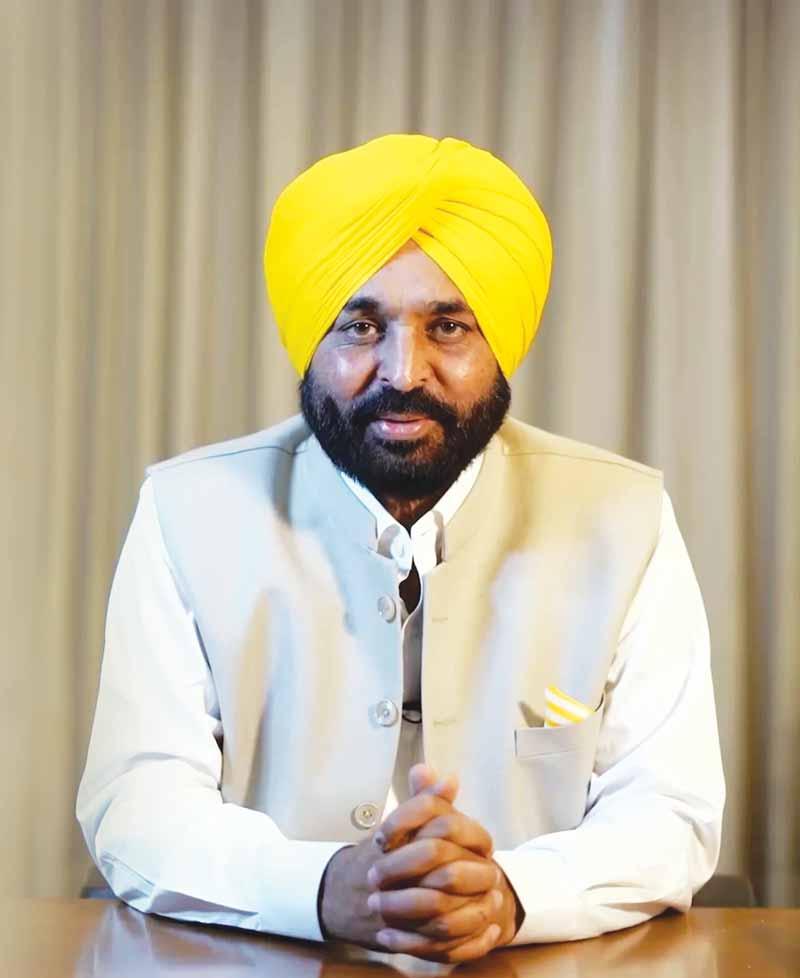
SEASONAL MAGAZINE
This is the fifth time that Punjab is going for its investors summit. But the 5th edition of the Progressive Punjab Investors Summit is the first time this event is being held under the AAP government that was voted to power almost a year back.



During the first 11 months of his rule as the Punjab Chief Minister, Bhagwant Mann has led the state in attracting Rs. 38,175 crore in new investments with a potential to create 2.43 lakh jobs. While this is similar in scale to other best performing states in India, CM Mann’s achievement is noted for its geographic inclusivity, well balanced growth across buzzing sectors, employment generation, and above all its transparency.
The young and dynamic chief minister had recently come out with the finer details of the investments so far attracted under his rule. The real estate, housing and infrastructure sector has received investment proposals worth Rs. 11,853 crore, which will generate 1.22 lakh jobs.
In the manufacturing sector, which is a traditional stronghold of the state, investment proposals worth Rs. 5,981 crore have been committed and will

generate 39,952 jobs. Alloy steel and steel sector has attracted investments of Rs. 3,889 crore and will be creating 9,257 jobs.
Another buzzing sector of the state is textiles, technical textiles, apparels & made-up sector which has firmed up investments worth Rs. 3,305 crore and comes with a commitment of creating 13,753 jobs.
The state which is most famous for agriculture will see its agri, food processing and beverages sector attracting investments worth Rs. 2,854 core that will provide 16,638 jobs. The remaining investments worth Rs. 2157 crore is from the healthcare sector which will generate 4,510 jobs. The new projects will also take investments into every nook and corner of Punjab, and not just in its largest cities like Ludhiana, Amritsar, Jalandhar & Patiala. For instance, Mohali has attracted investments worth Rs. 9,794 crore which will generate 68,061 jobs, while Ropar has bagged investments worth Rs. 9,319 crore that will deliver 3,172 jobs.
The investors summit itself will be hosted in Mohali
PUNJAB HAS RECENTLY BEEN SELECTED AS A ‘TOP ACHIEVER’ IN THE ‘EASE OF DOING BUSINESS IN INDIA’ INDEX.
SEASONAL MAGAZINE
at the Indian School of Business (ISB) campus, during February 23rd & 24th. The summit will include exhibitions on the achievements and potential of various sectors in the state including Textiles, IT, ESDM & Startups, Healthcare, Green Energy & Sustainability, Tourism & Hospitality, and Entertainment.
While his detractors were surprised by CM Bhagwant Mann’s achievement of attracting Rs. 38,175 crore in new investments so far with a potential to create 2.43 lakh jobs, this former actor, comedian & satirist has asserted that this is just the pre-monsoon shower and that a full-fledged monsoon awaits the state during the 5th Progressive Punjab Investors Summit. Even his enemies would have to grudgingly agree as the state has recently been selected as a ‘Top Achiever’ in the ‘Ease of Doing Business in India’ index. During the first eleven months of its rule, the AAP

Government has been successful in giving government jobs to over 26,000 people in the state. The focus that CM Bhagwant Mann has on employment generation is seen also in his other welfare measures. Recently, he had led an initiative to shut down several toll plazas on Punjab’s highways that have been keeping on collecting tolls for several years now. According to the CM, this will amount to more than Rs. 10 lakhs in daily savings for the people of Punjab.
And keeping true to his AAP roots, CM Mann had earlier overseen the launch of 500 Mohalla Clinics in Amritsar. Mohalla Clinics that offer free or heavily subsidized treatments to the people has been a trump card of AAP in Delhi, where it first stormed to power in India. He has also shown his unique nationalistic trait when he categorically made it clear that Punjab won’t be doing any new business initiatives with Pakistan, come what may. The reason the Chief Minister cited for it was quite persuasive - that Pakistan was daily trying

SEASONAL MAGAZINE
DURING THE FIRST 11 MONTHS OF HIS RULE AS THE PUNJAB CHIEF MINISTER, BHAGWANT MANN HAS LED THE STATE IN ATTRACTING RS. 38,175 CRORE IN NEW INVESTMENTS WITH A POTENTIAL TO CREATE 2.43 LAKH JOBS.
to push massive quantities of narcotic drugs into his state.
Indeed, in recent years, Punjab has been reeling from an onslaught of drugs, and this is the first time a Chief Minister has unequivocally taken such a massive stand against India’s troublemaking neighbour, with whom the state has a long and treacherous border.

The CM has also been lobbying hard with the Central Government for meeting his state’s vital needs. Coal, for instance, is an industrial fuel that Punjab is heavily dependent upon, and the timely access to coal supply has been an Achilles heel in Punjab’s development.
After studying this issue in-depth recently, the CM has now demanded for trains to be allotted to Punjab for ferrying coal into the state in a timely manner, which is a facility that many other states in India enjoy with regard to coal.
The CM who held a review meeting on February 16th for the Progressive Punjab Investors Summit 2023, had several directives for the top-level officers from all concerned departments. These included making fool-proof arrangements as several global delegates of VIP stature are expected to attend.

He exhorted the officers to make sure that Punjab’s entrepreneurs are facilitated with group as well as one-to-one meetings with the visiting international experts and delegates. He also directed the officers to uphold Brand Punjab in everything they do. His team takes up such suggestions earnestly as the Chief Minister himself had made it a point to lead from the frontlines by meeting industry leaders during his visits to various cities, including Bangalore, Mumbai & Hyderabad, to seek investment in the state.

He seems to have made a special rapport with the Telengana CM during his visit. Apart from learning about Telengana’s success spree in attracting massive investments, CM Mann also made it a point to study about the state’s noted irrigation reforms, which will come in handy for him while leading his state which still has a sizeable agrarian economy.
Under the leadership of Bhagwant Mann, several poll promises like free electricity, Aam Aadmi Clinic, farmer welfare, international training to teachers, reasonable and affordable sand for construction, employment opportunities for youth, ensuring the dignity of martyrs and ensuring corruption free governance have been implemented, during the 11 months it has been in office.
UNDER THE LEADERSHIP OF BHAGWANT MANN, SEVERAL POLL PROMISES INCLUDING FREE ELECTRICITY, AAM AADMI CLINICS ETC HAVE BEEN DELIVERED WITHIN THE 11 MONTHS THE AAP GOVERNMENT HAS BEEN IN OFFICE.
SEASONAL MAGAZINE
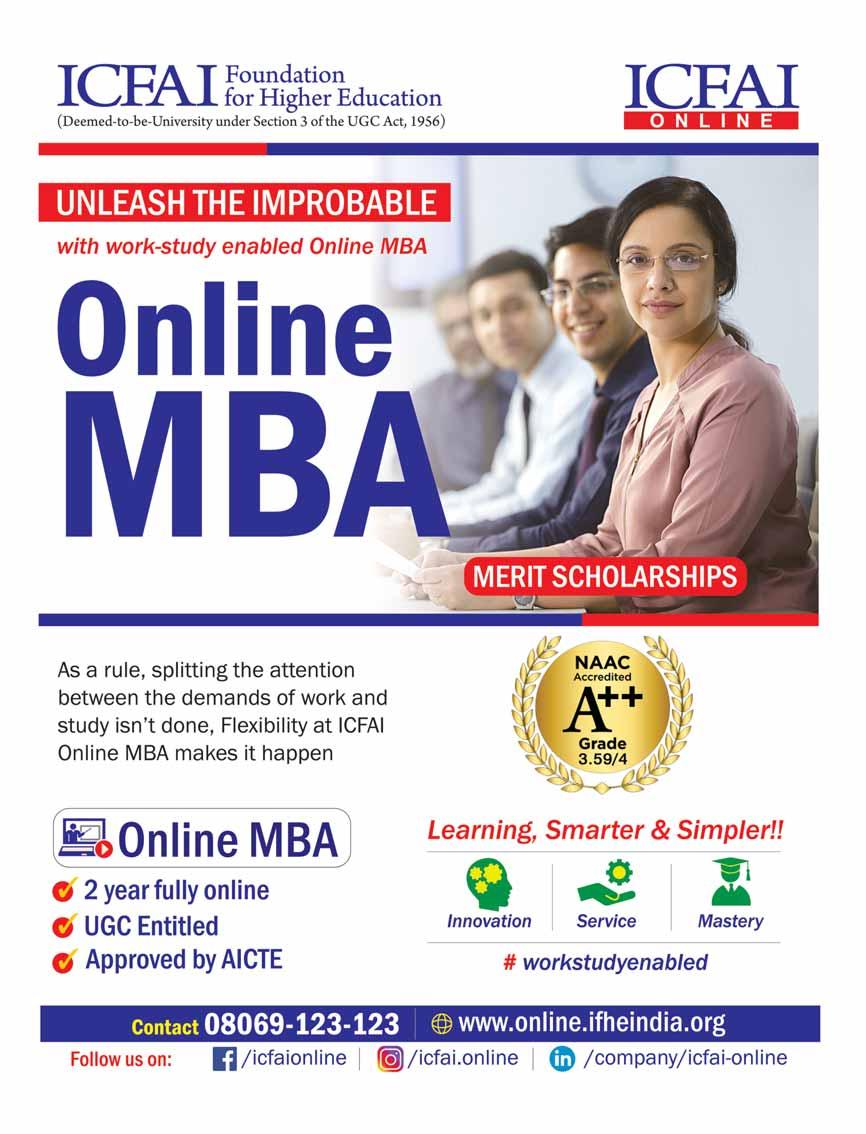
CHINA LOCKS DOWN AREA AROUND WORLD'S LARGEST IPHONE FACTORY OVER COVID OUTBREAK
China has locked down area around the world's largest iPhone factory in Zhengzhou over a COVID-19 outbreak. The lockdown will last until November 9, the local government said in a statement posted on its WeChat account. No vehicles are allowed to operate except for those carrying necessities, the government further said.
SRK WOULD SPREAD A CLOTH & SLEEP ON FLOOR IF VANITY VAN WASN'T READY, RECALLS ADITYA
On the occasion of Shah Rukh Khan's birthday, Aditya Narayan recalled shooting with him for 'Pardes'. He said, "I remember he was shooting for another film, he used to come to sets, vanity van wouldn’t be ready. He would...pick a corner in the room, put his bag, spread a cloth on the floor, and sleep….No complaints and no ego."

PUNJAB STARTS ENTREPRENEUR SCHEME IN 31 GOVT SCHOOLS AS PILOT PROJECT
Punjab Minister of School Education
Harjot Singh Bains on Tuesday launched the "Business Blasters Young Entrepreneur Scheme" as a pilot project in 31 government schools across Punjab. "We aim to launch it in all senior secondary schools next year," he tweeted. Under the scheme, the students of Class 11 will be provided seed money of ?2,000 to start a business.
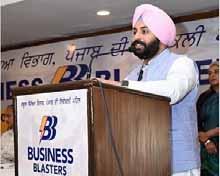
UPL FOUNDER RAJJU SHROFF STEPS DOWN AS CMD, JAI SHROFF NAMED CHAIRMAN

Global crop protection products manufacturer UPL announced that its Founder Rajju Shroff has stepped down as Chairman and Managing Director (CMD). Shroff, 90, will become Chairman Emeritus of the Board, effective from December 1, 2022, the company said in its filing. Jai Shroff, a Non-executive Director has been designated as the Chairman of the Board with effect from December 1.
INDIAN-ORIGIN FORMER EMPLOYEE ADMITS CHEATING APPLE OF RS 140 CRORE


Dhirendra Prasad, a former Apple employee, has pleaded guilty to fraud that led to a loss of more than $17 million (?140 crore) to the company, according to a statement from the California Department of Justice. Indian-origin Prasad said he began to defraud Apple back in 2011 by inflating invoices, stealing parts and charging Apple for services it never received.
ELON MUSK ANNOUNCES $8 PER MONTH PRICE FOR BLUE TICK ON TWITTER
Twitter's new owner Elon Musk confirmed the microblogging website will charge $8 per month if anybody wants the 'blue tick', and tweeted, "Power to the people! Blue for $8/month." He added, "Price adjusted by country proportionate to purchasing power parity." Musk called Twitter's current policies for who has or doesn't have a blue checkmark "lords & peasants system" and "bulls**t".

LARGEST WHALES CONSUME 1 CRORE PIECES OF MICROPLASTIC DAILY OFF CALIFORNIA COAST: STUDY
A study published in Nature Communications found that blue whales, the largest animals on the planet, off California's coast are consuming about 1 crore pieces of microplastic every day. A whale that feeds mostly on fish consumes about 2,00,000 pieces a day, the study found. Some microplastic consumed by the whales are even smaller than 5 millimetres, the study added.

NEWS-IN-FOCUS
SEASONAL MAGAZINE 18
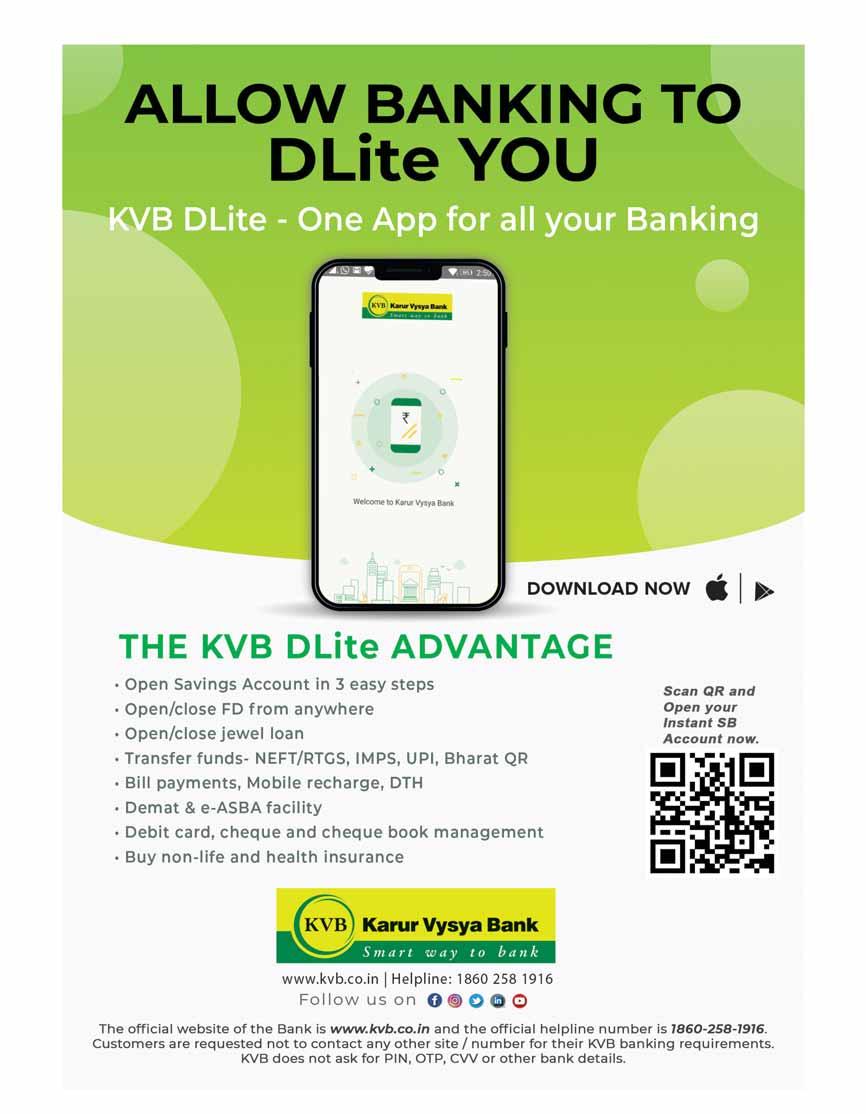
PERSONAL DEVELOPMENT
UNHAPPY TO BE SUCCESSFUL

If you make happiness your primary goal, you might miss out on success as well as the challenges that give life meaning.
In 2007, a group of researchers began testing a concept that seems, at first blush, as if it would never need testing: whether more happiness is always better than less. The researchers asked college students to rate their feelings on a scale from “unhappy” to “very happy” and compared the results with academic (GPA, missed classes) and social (number of close friends, time spent dating) outcomes. Though the “very happy” participants had the best social lives, they performed worse in school than those who were merely “happy.”
The researchers then examined a data set from another study that rated incoming college freshmen’s “cheerfulness” and tracked their income

nearly two decades later. They found that the most cheerful in 1976 were not the highest earners in 1995; that distinction once again went to the second-highest group, which rated their cheerfulness as “above average” but not in the highest 10 percent.
As with everything in life, happiness has its trade-offs. Pursuing happiness to the exclusion of other goals–known as psychological hedonism–is not only an exercise in futility. It may also give you a life that you find you don’t want, one in which you don’t reach your full potential, you’re reluctant to take risks, and you choose fleeting pleasures over challenging experiences that give life meaning.
The way to understand the study above is not to deny that happiness is good; rather, it is to remember that a little bit of unhappiness has benefits. For instance, gloom has been found to aid in problemsolving. The author Emmy Gut argued in 1989 that some depressive symptoms can be a functional response to problems in the environment, leading us to pay appropriate attention and come up with solutions. In other words, when we are sad about something, we may be more likely to fix it. Psychologists call this the “analytical rumination hypothesis,” and it is supported by research. Obviously, this is not to argue that clinical depression is good — misery can quickly render people incapable of
SEASONAL MAGAZINE 20
solving problems. Nor am I saying that depression passes a cost-benefit analysis. Rather, the analytical-rumination hypothesis is evidence that getting rid of bad feelings does not necessarily make us more effective in our tasks. And if these emotions can help us assess threats, it stands to reason that too much good feeling can lead us to disregard them. The literature on substance use suggests that this is so: In some people, very high degrees of positive emotion have been connected to dangerous behaviors such as alcohol and drug use and binge eating.
An aversion to unhappiness can lead us to forgo a meaningful life. Indeed, as one group of researchers that surveyed college students in 2018 found, fear of failure is positively correlated with meaning derived from romance, friendship, and (to a lesser extent) family. When I talk with people about their fear of negative outcomes in life, their true source of fear in many cases centers on how they will feel about having failed, not about the consequences of the failure itself. This is similar to the way discomfort with uncertainty causes more anxiety than guaranteed bad news. To avoid these bad feelings, people give up all kinds of opportunities that involve the possibility of failure.
But bringing good things into your life, whether love, career success, or something else, usually involves risk. Risk doesn’t necessarily make us happy, and a risky life is going to bring disappointment. But it can also bring bigger rewards than a life played safe, as the study of happiness, academic achievement, and income suggests. Those with the highest performance at work and school made decisions that were probably unpleasant at times, and even scary.

None of this is to say that we should shun good feelings, or that we’re foolish for wanting to be happy. On the contrary, the desire for happiness is natural and normal. However, making the quest for positive feelings—and the fight to banish negative ones—your highest or only goal is a costly life strategy. Unmitigated happiness is impossible to achieve (in this mortal coil
at least), and chasing it can be dangerous and deleterious to our success. But more important, doing so sacrifices many of the elements of a good life. As Paul Bloom, a psychologist and the author of The Sweet Spot: The Pleasures of Suffering and the Search for Meaning, has written, “It is the suffering that we choose that affords the most opportunity for pleasure, meaning, and personal growth.”
Happiness itself would lose its meaning were it not for the contrast that we inevitably experience with sadness. “Even a happy life cannot be without a measure of darkness,” Carl Jung said in an interview in 1960. “The word ‘happy’ would lose its meaning if it were not balanced by sadness.” You can take Jung’s words to heart by committing to a regular practice of gratitude in which you give thanks not only for the things that make you happy but also for the ones that challenge you. It feels unnatural at first, but it will come easier each day.
Some of the most meaningful parts of our lives are a direct result of negative feelings that slipped through, despite our best efforts to block them out. For example, I am the father of three young adults; it was not long ago that my wife
and I were going mano a mano with three teenagers. We lost a lot of sleep then, but I wouldn’t trade away a moment of those experiences (now that they are safely behind us). Some people take these lessons to lengths that might seem unimaginable. One is Andrew Solomon, the author of The Noonday Demon: An Atlas of Depression. “If one imagines a soul of iron that weathers with grief and rusts with mild depression, then major depression is the startling collapse of a whole structure,” he wrote. But as he told an interviewer several years ago, he eventually found a way to love his depression. “I love it because it has forced me to find and cling to joy,” he said.
This, in a nutshell, is the paradox of being fully alive. To strive for relentless positivity is to aim for the dimensionality of a Hollywood movie or children’s book. So though suffering should never be anyone’s goal, each of us can strive for a rich life in which we not only seek the sunshine but fully experience the rain that inevitably falls as well.
(By Arthur C. Brooks for The Atlantic Daily)
SEASONAL MAGAZINE 21
ACTOR AND SCIENCE COMMUNICATOR ALAN ALDA SHARES HIS THREE RULES OF THREE FOR EFFECTIVE AND EMPATHIC COMMUNICATION.


Whether you are a public speaker or having a heart-to-heart, it can be challenging to express your thoughts clearly. Alan Alda recommends making no more than three points, explaining difficult ideas in three ways, and repeating key points three times. However, these strategies will fall flat if not paired with an honest desire to connect with other people. Maybe this sounds familiar: You’re expressing a difficult idea, thought, or feeling, and at the moment, it seems to be going well. Your audience is nodding at the appropriate beats. Your cadence has an uncharacteristic flow and eloquence. You even snuck in the world profligate and are 90% sure you used it properly. (Well, 80% sure. Definitely going to look it up later.)
You take a deep breath, ask what everyone thinks, and realize that you’re getting the look. You know the one: mouths slightly agape, heads tilted in anticipation, and a squint like everyone just endured the world’s most strenuous eye exam. Everyone is more confused now than before you began talking. Whether from public speaking or just having a heart-to-heart, life is full of these types of conversations. You’ve been there, I’ve been there, and Alan Alda has been there.
Though best known for his role on the 1970s sitcom M*A*S*H, Alda is a public speaker, science enthusiast, and long-time advocate for better science communication. He has interviewed scientists as the host of Scientific
American Frontiers, won the AAAS Kavli Science Journalism Award, and founded the Alan Alda Center for Communicating Science at Stony Brook University. In that time, he has developed a playbook of strategies to help people engage in conversation and voice their ideas clearly. If these tips can help biologists explain genetic drift, physicists Hawking radiation, or linguists anything about Chomskyan linguistics, then chances are they can help us express our thoughts and feelings when we need others to understand them the most.
1. Make no more than three points
1. Make no more points
1. Make no more than three points
1. Make no more than three points
1. Make no more points
The human brain can only store so much information in short-term memory. The oft-repeated number is seven items (or chunks). That number comes from
SPEAKING SEASONAL MAGAZINE 22
PUBLIC
research in the 1950s and has been reinforced in our collective subconscious by the fact that so many things happen in sevens. Consider that before the advent of cell phones, people spent lots of time memorizing seven-digit phone numbers.
However, follow-up research suggests that short-term memory is far less robust, maxing out at a meager three to five items.
If you’re old enough to recall memorizing phone numbers, you’ll recognize some truth in this. No one digested every digit at once. Instead, they broke the number into smaller chunks which they learned separately — most often, area code (three digits), prefix (three digits), and subscriber number (four digits). Only with time, repetition, and application would a number enter long-term memory as a single entry in someone’s mental Rolodex.
Short-term memory performs no better with ideas or thoughts than telephone numbers. It can only hold so many topics and tangents, and once it’s at capacity, it needs to erase old information to upload anything new.
Alda agrees. He advises you to limit your conversation points to no more than three, allowing you and your partner to focus on the thought at hand while avoiding disruptive additions.
2. EXPLAIN DIFFICULT IDEAS IN THREE DIFFERENT WAYS
As Alda said in his interview: “If I have a difficult thing to understand, if there’s something I think is not going to be that easy to get, I try to say it in three different ways. I think if you come in from different angles you have a better chance of getting a three-dimensional view of this difficult idea.”
One way to tap into this strategy is through metaphor. When Barbara Oakley was writing her book A Mind for Numbers, she reached out to professors who were highly ranked for their teaching skills. She discovered that across disciplines, the best professors were metaphor tacticians. They analogized key concepts or difficult ideas to better explain them.
According to Oakley, metaphors work by building on existing neural patterns
established from previous learning. Those existing patterns then help create new neural networks for incorporating the new information. A physics teacher, for example, may explain the mindboggling concept of the expanding Universe by comparing it to how raisin bread expands as it bakes. Such a metaphor helps students connect the cosmologically large with something previously experienced on Earth.
This strategy doesn’t dumb down the concept but instead makes it relatable and therefore easier to understand — getting at that “three-dimensional view” Alda champions. Other useful strategies can include examples, visuals, changing the frame of reference, and providing a this-not-that comparison.
3. MAKE IMPORTANT POINTS THREE
TIMES
Repetition is a powerful communication tool because it helps us identify key information and transfer it from shortterm to long-term memory.
When it comes to learning, the best kind of repetition is spaced out. Whether you’re memorizing a phone number or a complex physics equation, revisiting and applying the information over several weeks cements it in your brain by developing and strengthening the neural patterns where the information is housed. This process explains why flashcards are such an effective studying tool.
In some close-knit relationships, spaced repetition is a phenomenal tool. Teachers, parents, psychiatrists, or team
managers can use it to return to and reinforce difficult ideas across many conversations.

But time is more limited in other relationships. Even so, repetition is still a useful tool. Anytime you repeat something, it signals that this information is important, so pay attention. It’s why song, speech, and soliloquy writers use repetition so liberally. Think Martin Luther King, Jr.’s “I Have a Dream” speech, the many soliloquies of Shakespeare, and, of course, Beyonce’s “Single Ladies.”
Express your thoughts clearly through connection
But Alda warns that tips only take you so far and may harm your efforts if you try to script your conversations like a formula to replicate someone else’s masterwork. Instead, Alda suggests that the true heart of communication is connection. Your goal shouldn’t be to enthrall your audience with a creative metaphor, meaningful pause, or witticism. That’s rhetoric, not communication.
“A tip is just an intellectualization of that, which might be okay to give somebody once they’ve got the grounding in the ability to connect, but it ought to come out of the connection. It shouldn’t be a checkbox that you tick off,” Alda said. Ultimately, we have to build a connection deep enough for communication strategies to work. These connections then help you understand when you need to slow down, repeat a key idea, or explain things from another angle.
(Credit: Big Think)
SEASONAL MAGAZINE 23
By Dr. Leif Hass
10 WAYS FOR WORK-LIFE INTEGRATION
WHEN WORK AND LIFE FEEL LIKE THEY'RE IN CONFLICT, WE CAN SET BOUNDARIES AND TAKE STEPS TOWARD BETTER WORK-LIFE INTEGRATION.

“So, “So, “So, “So, Dr. Hass, let me tell you about how it really started,” said an elegant but frighteningly thin 85 year old, Ms. E. “Things really started to fall apart when my husband was diagnosed with cancer a couple of months ago.”
I squirmed in a hospital room chair. “I want to get to the real reason you have lost all this weight and ended up in the hospital, but I can’t give it the time it deserves now,” I said as I got up and hurried to the door. “Let’s talk about it tomorrow.”
People often ask what the hardest part of my job is as a hospital-based doctor. Telling people about a cancer diagnosis? Resuscitations that don’t go well? Honestly, it’s interactions like the
one I had with Ms. E—when I can’t have the conversation that would build our connection and lead to the heart of what ails my patient. Because, often, having those conversations—which are both healing for the patient and meaning-making for me—means missing priceless moments with my family.
That day, I got out of the hospital as soon as I could and jumped into my car. My youngest daughter was graduating from high school that weekend…and I had somehow ended up working through most of it. I had screwed up again, or had I? Perhaps I’d been screwed again by my amazingly rewarding, but at times amazingly painful, job. Driving home to join my
family, I realized I needed to give my work-life balance deeper thought.
I have learned that I am not the only one struggling. A recent study by Tait Shanafelt and his colleagues showed that after a slight dip in 2020, burnout rates in my profession increased by almost 100%, with 62.8% of physicians having at least one symptom of burnout and almost half unhappy with their work-life balance. The data are equally dismal in nursing, teaching, and mental health services. In our alwaysconnected world, even those with a “9 to 5” can’t always “leave it at the office” either. Women, especially those with children at home, and people of color tend to suffer more than others.
This is a good time to ask, yet again:
LIFE SEASONAL MAGAZINE 24
How can we find ways of balancing the needs of people at work, the needs of those at home, and our own needs for both connection and alone time?
Work-life conflict arises in a couple of ways. We suffer when our tasks (like seeing my patients) and our values (like valuing time with my family) are misaligned. That was me walking away from a patient who wanted to talk and stressing to get to my family party before the end of the day!
I don’t like the word “balance” in this context because it suggests tradeoffs: We must take from life to give to work. With balance, there is the implication that life and work are in opposition and that “life” happens outside of work. But, for many of us, work is an important, generative, meaning-making part of life. The struggle is how to integrate work with our other roles and responsibilities—both those we must do and those we want to do. That’s why I prefer to think in terms of work-life integration, not balance.
Work-life integration suggests there can be a blending of work and life and even possible synergies across aspects of life, such as family, work, community, and personal well-being. In my view, our goal should be an alignment of our personal values and our priorities—the tasks we must complete—in terms of our allocation of time and energy.
Conflict can also arise with loss of control of boundaries. Constructing those boundaries needs to be highly individualized. Reading for work in the evening after coaching your child’s team might be a good form of integration for some—but, for others, evenings might be non-negotiable downtime. The goal is to set clear boundaries so we can be present and productive in the tasks we are engaged with.
How exactly to create these boundaries might be easy in principle but tricky in practice; getting it right requires careful thought and repeated revisions. Not getting it right leads to feeling overwhelmed; the resultant stress leads down the road to burnout. So, how should we work toward a
state of integration?
What’s most important to you?
Cory Pitre and his colleagues at the University of Indiana developed a great program to help their medical staff with this process. I’m going to borrow from their work in order to suggest steps you can take toward better work-life integration.
One of the first steps in their program involved asking participants to sit down and first write down their values. According to the program, these should be more philosophical; they should be about what guiding ideas we want to live by, such as love, time with family, service to community, wisdom, or self-care.
Then we must identify our most important roles and responsibilities in home, work, and our personal life. These should be specific, such as a yoga class, earning money, caring for kids, patient care, the big project at work, time with friends.

It has been said that “the key is not prioritizing your schedule but scheduling your priorities.” Once you have given some thought to your most important responsibilities and values, you can use that information to guide your schedule-making.
When done in small groups, this exercise leads to durable improvements in work-life integration. Similarly, individual coaching on this improves integration and reduces burnout, according to a 2019 study. Not every organization and individual can afford such coaching, of course, but we can answer these questions on our own and even just with friends who are struggling with similar issues.
Many people have offered plans to allocate our time and energies to improve our work-life integration, but they tend to be about efficiency rather than addressing the cognitive conflicts. For example, telling yourself that you are done with work doesn’t necessarily stop your thoughts about work. Nor do they include strategies for coping with
SEASONAL MAGAZINE 25
the work-life conflicts that will arise in a busy, purposeful life. This is where a Greater Good-informed work-life integration (WLI) framework can help us, drawing on research that this publication has covered for years. Here are some steps you can take.
1. It starts with self-awareness. Simply recognizing the need for WLI requires awareness; making a habit of noticing where our minds are going and what our body is telling is key to make sure we are on the right path with our plan. Our boundaries are not solid like a stone wall. A defined time frame and locations can help, but in the end the boundaries must be cognitive, too. Our mind is apt to wander to places we would rather not have it go, like back to work! Mindful self-awareness is our best method to investigate why this might be and then work on solutions.
2. Articulate your priorities, plot out your boundaries, and make your schedule. Look at the exercise above and let it inform you as you plan. Weekly or even daily planning is time well spent. As you schedule, plan to take on your important work tasks first when you are at your sharpest. Schedule in time for yourself and those you most care about, too. Put good boundaries around your personal life’s “musthaves.”
3. Hone your time-management skills. Find tech “hacks” to help with planning and coordinating those plans with
others, like using and sharing Google Calendar at home as at work. Turn transition times such as commuting into productive time; reflect on your successes and failures as you review your time-management strategies.

4. Delegate. At home this means hiring things out, if you can afford it, and getting those you live with to do their share. At work this means operating at the top of your skill set while empowering others to take on tasks when appropriate.
5. Maximize your attention by taking breaks and working in bursts. Do the tough work in bursts; avoid disruptions and multitasking. You will be more productive and creative if you take breaks that use other parts of your brain. Also note that being outside and vacations make you more productive!
6. Work fluidly but be mindful of your boundaries. It might be OK to take calls when cooking dinner, but only if it gets you time you really want away from work and the work thoughts don’t stay with you all night. You need to know yourself for your boundaries to hold up.
7. Be your authentic self as you connect with others. Essential to WLI is being “the real you” at work; you will be happier, better at your job, and better able to advocate for changes you need to fine-tune your WLI.
8. Communicate. Try talking with
family, friends, and colleagues about what’s most important to you. Ask them about their own values, needs, and responsibilities. You might discover what you have in common with your coworkers. At home, you can find out from your loved ones if your idea of WLI works for them.
9. Draw strength from your sense of purpose. Finding meaning in our work and personal life helps affirm our values and provide strength to buffer against the stress that arises when we run into inevitable boundary issues.
10. Go easy on yourself. Stuff happens, the best-laid plans go awry, and most of us don’t have the most realistic expectations. Your house might not be as clean as you like, and your kid’s hair might be better brushed, and not all your work products will measure up. Keep an eye on your values, keep making time to organize—and see what might need to change! Also be sure to give yourself a little love and be thankful for your rich and dynamic life.
Work-life integration won’t look the same for every person; it depends on your personality and type of employment. For those on the computer at home, or for “digital nomads,” the challenges will be around “when am I off work?”—and perhaps about meaning and connection when not regularly in the company of others. For those of us in the people professions, the challenges will be around managing the suffering of others while dealing with misaligned incentives and a lack of control.
Personally, I learned that not thoughtfully working on work-life integration is a form of passive acquiescence to work that can take much more than you’re able to give. I can miss some important events—like that weekend of my daughter’s graduation. Addressing this requires some mindful self-reflection and some bigger conversations about what I need from work and what work needs from me. I suspect delving into worklife integration will provoke similar thoughts in just about everyone.
SEASONAL MAGAZINE 26
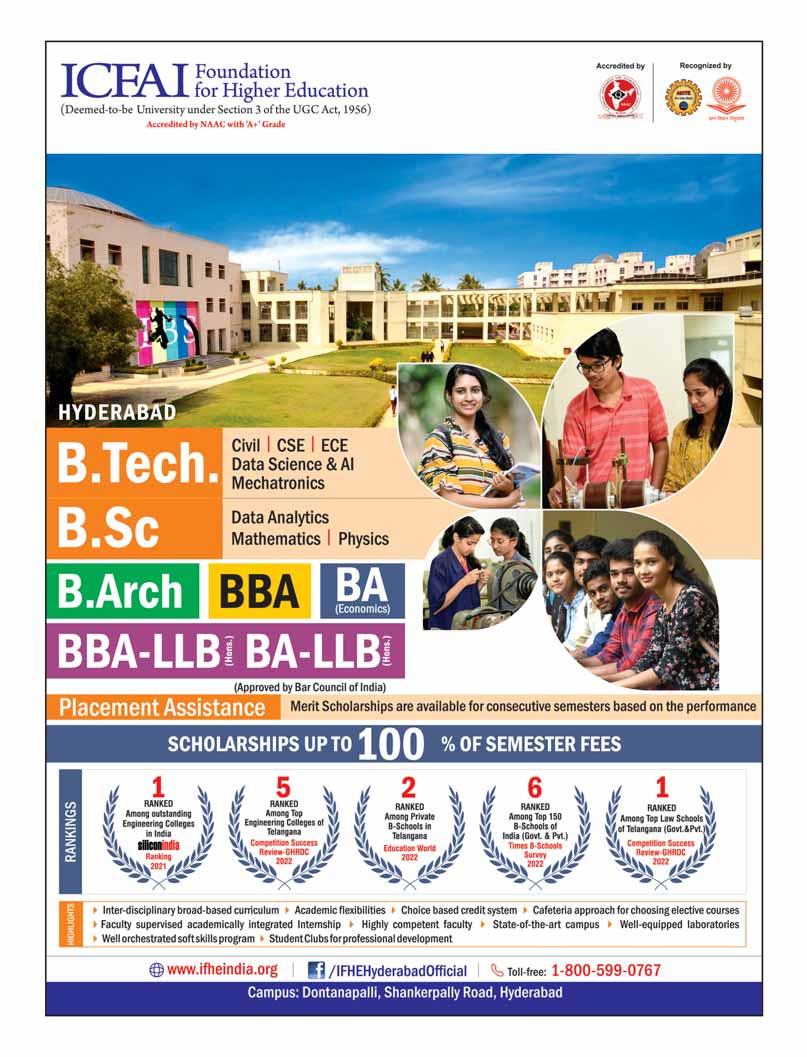
HOW TO FIND YOUR LOST KEY, LIKE HOW A NAVY FINDS A LOST SUBMARINE

EVERYONE HAS MISPLACED SOMETHING FROM TIME TO TIME, BE IT A PHONE, WALLET, OR SET OF KEYS. WHEN SOMETHING EXTRAORDINARILY VALUABLE, LIKE A NUCLEAR SUBMARINE, IS LOST, A MATHEMATICAL SEARCH TECHNIQUE CALLED BAYESIAN SEARCH IS OFTEN USED TO FIND IT. THE TENETS OF THE TECHNIQUE ARE SIMPLE ENOUGH TO UNDERSTAND AND DEPLOY IN OUR EVERYDAY LIVES.
hen you lose your phone, wallet, or keys, you may resort to a few tricks to relocate them. Maybe you’ll retrace your steps. Maybe you’ll look in each of the locations that you typically put them. Or perhaps you’ll try to remember every unusual place you’ve been lately. Each of these choices makes logical sense. When an entity with vast resources loses something extraordinarily valuable, like a nuclear submarine, they call in the big guns of Bayesian search theory to help. Fortunately for the rest of us, the basic concepts are simple enough to distill for finding those everyday items. Even if your missing item is worth merely hundreds of dollars, this mathematical process can streamline the logic of your search, saving you time and money.
The probability that a lost item is found in one place versus another is an intuitive concept that can be turned into a mathematical object. A simple map, divided into a grid, with each section assigned a probability of containing an item, is a form of probability density function. Let’s say that you left your car in a parking lot with 100 spots, and now you have forgotten where you parked. The most basic parking lot probability density function shows one box for each space, each with a probability of 1/100 (or 0.01).
Let’s further assume that you’re not disabled, and there are ten spaces for disabled people. Now the probability density function looks more like 0.011 in 90 of the spaces and 0.001 in each disabled space. (We are further assuming a 10% chance that you made a mistake parking.)
Let’s bring in some more data. The ten
parking spots furthest from the store are empty. The chances of your car being there are zero. Now your density function looks like 80 squares with a probability of ~0.0125. If you tend to drive around and around the lot to find the space closest to the door, then the spaces nearer the store have somewhat higher probability, and the spots further out have somewhat lower probability. The point is that each time you acquire more information, the probability density function changes. So, in this way, you can narrow down and speed up your search, beginning with the spots with the highest probability of containing your car, and working your way down the probability list, checking the lowest probability spots as a last resort.

PUBLIC SPEAKING SEASONAL MAGAZINE 28
The first map is good, but a second map is even better. This second map contains, for each search area, the chance that you would actually find the item if it were in that spot.
To demonstrate, let’s construct a slightly different metaphor. If your homework has disappeared, it would be easier or harder to find in various places you might look. If the homework is on an empty desk, you’re sure to see it there. If you left it on a cluttered desk, covered with piles of paper, your chances are lower. If it could have blown out the window, the chance it might still be in the yard is much smaller because of the wind. If the dog ate it, your probability of finding it goes to zero.
Now, take these two probability distribution maps and multiply them together. Any search area that is both likely to contain the item and has a high likelihood of you finding it if it’s there will be represented by a relatively large number. These are good places to begin your search. Areas where either the item is easy to spot but unlikely to be, or likely to be but hard to spot, have a smaller number. These are a lower search priority. Areas where it isn’t likely to be
and you can’t easily spot it — the dog comes to mind — are relegated to the very last resort.
Finding a fugitive Finding a Finding a fugitive Finding a Finding a fugitive
As you search the areas with the greatest combined likelihood, you should reevaluate your assumptions and update your probability map as you go along. Let’s introduce a third metaphor. Now you’re searching for an escaped convict. Your pack of tracking hounds can smell where he has been recently. Near the prison is a road leading to a bus stop. The probability that he would run up the road to catch a bus is relatively high, and your chances of spotting him if he is near the open road (as opposed to, say, the woods) are high as well. The glass-walled stop where buses only appear sporadically has a similarly high combined probability.
If you are searching the road and the hounds pick up no scent, then the probability that he is at some location further up the road is greatly diminished. The bus stop is now a lower probability location, too. On the other hand, if the dogs do smell something, the bus stop probability has increased.
If this all sounds relatively
straightforward, that’s because it is. The trick to the method is to use intelligent reasoning in your probability distributions, including how you modify them as you go. The probability density function of where the object might be located particularly requires serious thought. The best way to form such a function is not to guess, or presume random chance, but to develop a series of hypotheses about why it disappeared and map out where it is most likely to be as a result. Across the search area, assign a probability to each square for each hypothesis, and then multiply those probabilities together.
In the case of a missing ship, several probability fields could be constructed by starting with a hypothesis and following its probable conclusions. The first hypothesis might be that the most probable location is centered near where the last radio contact was made, and the probability decreases the further you get from that location. Another hypothesis might be that if a hurricane passed through the area, the path of the eyewall of the storm is the most likely place for the ship to have sunk. If a piece of debris is found floating in one area, then the probability the shipwreck lies nearby goes up, and the probability it is far away goes down. If there is a strong current flowing through the area with the debris, then the upstream path of that current acquires a higher probability, extending back as far as it has flowed since the ship was lost. The areas downstream drop in probability. Bayesian search is a distillation of smart common sense, formalized and made more rigorous with relatively simple mathematical concepts. If you’re looking for a billion-dollar lost treasure, you might sit down at a computer to map out many probability distributions and mathematically combine them. If you’re on an hour-long search for your wallet, a quick and dirty mental implementation of the Bayesian search method can save you time and increase your chances of success.

SEASONAL MAGAZINE 29
(Credit: Tom Hartsfield, PhD, for Big Think)
BILL MURPHY JR. IS THE AUTHOR OF ‘HOW TO RAISE SUCCESSFUL KIDS’ WHICH IS IN ITS 7TH EDITION NOW. HERE HE SHOWS WHAT IT TAKES TO RAISE SUCCESSFUL KIDS, ACCORDING TO SCIENCE WHICH SAYS THESE 4 HABITS MATTER, BIGTIME. STUDIES SUGGEST THAT IF YOU WANT TO DO RIGHT BY YOUR KIDS, YOU SHOULD PROBABLY DO THESE THINGS.

There comes a time in some people's lives when their aspirations for their children begin to rival or even exceed their aspirations for themselves.
It's happened to me since I've become a parent myself. As a result, I've been on a years-long mission to collect as much science-based advice as possible regarding how to raise successful kids. Here are five of the most interesting and useful strategies I've found and highlighted recently. The science suggests that if you want to do right by your kids, you should probably do these things.

1. Make them do chores.
1. them do chores.
1. Make them do chores.
1. them do chores.
Researchers at La Trobe University in Australia recently set out to determine whether children who do chores at home would develop better working memory, inhibition, and other success-predicting behaviors.
They broke chores into three categories: self-care, other care, and pet care. Writing in the peer-reviewed Australian Occupational Therapy Journal, they said their studies showed that kids who did self-care and other-care chores were in fact more likely to exhibit better academic performances and problemsolving skills.
But pet-care chores did nothing either way for the kids' later development. Why not? Maybe it's because pet care chores aren't as strenuous as other chores, or maybe because the kids didn't really view the kinds of things you have to do to take care of a pet dog (walk it, feed it, etc.) to be work.
The bottom line, however? Make your kids do chores. They might not love the idea to start with, but you've got science on your side.
Teaching kids to say "please" when they ask for something can reinforce their tendency to be polite, which makes them more persuasive when they're older. Teaching them to say "thank you" habitually encourages gratitude, which stimulates happiness and makes stress easier to deal with.
And teaching them to say "you're welcome" reinforces confidence by emphasizing that the things they do for others are worthy of thanks. (This is especially true when you juxtapose "you're welcome" with other things people say in response to "thank you," like "no worries!" or "no problem!")
3. Work on their emotional 3. on their 3. Work on their emotional 3. on their their intelligence. intelligence. intelligence. intelligence. intelligence.
Children who develop emotional intelligence also develop "a higher chance of graduating, getting a good job, and just being happy," according to Rachael Katz and Helen Shwe Hadani, authors of The Emotionally Intelligent Child: Effective Strategies for Parenting Self-Aware, Cooperative, and WellBalanced Kids.
Oh, and remember that kids are just that: kids. It's unfair often to expect them to react and respond to things like adults would (or at least, should!).
4. Help them figure out their passion(s). This study was fascinating. Researchers in Scandinavia wanted to determine whether passion, grit, or mindset was the most important factor in predicting young people's success, specifically in an athletic context.
In short, passion turned out to be far more predictive of whether kids were successful; while mindset and grit might have predicted that young people would continue attempting to succeed, it was passion that best predicted whether they actually would.
"For people who are the best of the best in their field, passion is absolutely the biggest factor. It's the essential key to success," one researcher said.
So, when kids are kids, let them explore different things to determine the ones that they're truly passionate about. That's where they're most likely to become the absolute best in their field.
2. Teach them to be polite.
2. Teach them to be polite.
2. This one focuses on three specific words: please, thank you, and you're welcome.
There are many things you can do to develop emotional intelligence (many more listed here), but at the outset, model your good thinking and use of emotions for them, ask them for their ideas, and try not to judge.
Look, no matter what any of us does as high achievers or entrepreneurs, chances are our kids will be a very big part of our legacies.
PARENTING
SEASONAL MAGAZINE 30

ailure is interesting - it's part of making progress. You never learn from success, but you do learn from failure," says James Dyson, British inventor.
Imagine spending five years of your life creating 5,127 versions of a product that failed. That's exactly what the inventor of cyclonic vacuum technology, James Dyson did. Until finally, one magical day, he hit gold - finally succeeding in creating the world's first bagless vacuum cleaner.
In some ways, entrepreneurship can seem like a type of madness - not unlike the obsessiveness that overtakes artists. But in Dyson's case, his patience and persistence eventually led to payoff: a multi-billion dollar company known for its creativity and forward-thinking designs.
Today, the Dyson vacuum cleaner is sold in more than 65 countries worldwide. In an interview with Entrepreneur, the inventor explained how he was able to accept a long series of failures without letting frustration overwhelm him. "We have to embrace failure and almost get a kick out of it," he noted. "Not in a perverse way, but in a problem-solving way. Life is a mountain of solvable problems, and I enjoy that."

We live in a rapid-paced society where we access information with the click and point of our finger - which means we absorb data at an unprecedented velocity. You can ask me a question this instant and I will take out my smartphone and spew out random facts.
But is this...actually learning? Sure, we can access Wikipedia and feel like we've become experts on a topic.
But true, legitimate learning doesn't come with ease. I am not advocating you quit researching things online (reading from reputable sources does expand our mind). What I do want is to rid ourselves of this false notion that learning is separate from discomfort.
Failing is painful, it makes you insecure and doubt everything. I know a little
JAMES DYSON CREATED 5,127 VERSIONS OF A PRODUCT THAT FAILED BEFORE FINALLY SUCCEEDING. HIS TENACITY REVEALS A SECRET OF ENTREPRENEURSHIP, SAYS AYTEKIN TANK, THE CREATOR OF JOTFORM TABLES, ONE OF THE NOTABLE TECHNOLOGY STARTUPS IN RECENT YEARS.

“F
SEASONAL MAGAZINE 32
START-UPS
about this myself, because I've spent 16 years growing a business that has been met with many stumbles along the way. But here's the secret to entrepreneurship few will say: You have to fall in love with failing. You have to fall in love with your hunger for learning, for discovery, for being an inventor.
I am a person who enjoys taking long hikes in nature alone. I've gotten lost on the wrong tracks more times than I can count. But the process of finding the right way out — of learning that there are many paths that can lead us to the right outcome, it's a lesson that stays with me both in my career and in my personal life. I'd like to share some practical tips I've learned from experts and my own experience to help you become a life-long learner unafraid of making a wrong turn.
1. CULTIVATE THE PASSION OF THE EXPLORER
Harvard Business Review contributor
John Hagell III wanted to get to the core of what motivates lifelong learners. What he discovered in his research is that rather than fear being an incentive for learning, it was those individuals who exhibited a "passion of the explorer" who were able to learn and grow.
"Explorers have a long-term commitment to achieving impact in a specific domain that excites them," he writes. "Anything from factory work or financial services to gardening or big wave surfing."
Hagel believes we all have the potential for this form of passion. "Go to a playground and watch children 5-6 years old. They have all of the elements required: curiosity, imagination, creativity, and a willingness to take risks, and connect with others."
Doing this in practice, however, can seem tricky. The fear of making a mistake is so ingrained in us. But it's possible to make these adjustments in our daily lives by making a conscious choice to experiment, test out new possibilities and adapt along the way.
The way of the explorer is to be comfortable with the unknown — because their curiosity surpasses their fears.
2. PRACTICE QUESTIONING THE STATUS QUO
I've offered Dyson as an example of someone taking years to perfect his product - but I should also offer myself as an example. One of our latest products, Jotform Tables, which allows teams to collect, organize, and manage data in an all-in-one workspace - took us a whopping three years to develop. So I am well aware of what it means to relentlessly pursue a vision. But so much of this process started out and evolved by resetting our status quo and in asking

ourselves, What else is possible? How might we make our customer's lives even easier?

HBR co-authors Helen Tupper and Sarah Ellis advocate for making learning a part of our daily routine, and part of that involves asking propelling questions to explore different ways of doing things. Here are some examples the researchers recommend asking both of ourselves and our teams: Imagine it's 2030. What three significant changes have happened in your industry? Which of your strengths would be most useful if your organization doubled in size? If you were rebuilding this business tomorrow, what would you do differently?
3. EMBRACE THE GROWING PAINS OF RELEARNING
It isn't only failure that brings discomfort. At times it's being swept up in the changing tides we have no control over. If we've learned anything from this pandemic, it's that we've had to relearn how to do things in nearly every domain of our lives - parenting, communicating over Zoom, managing the endless fatigue of an ongoing crisis. But these growing pains aren't all bad, according to HBR co-authors Tupper and Ellis. "Relearning is recognizing that how we apply our strengths is always changing and that our potential is always a work in progress," they note. "We need to regularly reassess our abilities and how they need to be adapted for our current context."
So, how do we remain nimble in the face of change? A few things that have worked for me: counting every small success at the end of each day (even writing it down as a reminder), maintaining my focus on what's working well and continuously being open to feedback.
For me, spending years on prototypes isn't just about tenacity; it's a question of faith. And it's this faith that gives us the courage, confidence and hope to persevere against all odds.
(Credit: Entrepreneur)
SEASONAL MAGAZINE 33
"EXPLORERS HAVE A LONG-TERM COMMITMENT TO ACHIEVING IMPACT IN A SPECIFIC DOMAIN THAT EXCITES THEM,"
HOW THE JAPANESE ETHOS OF WABI SABI CAN HELP YOU

PERFECTIONISM IS ON THE RISE AND ITS CONSEQUENCES FOR MENTAL HEALTH CAN BE DEVASTATING. THE JAPANESE PHILOSOPHY OF WABI SABI HELPS US APPRECIATE OUR IMPERFECTIONS. BY ACCEPTING OUR FAULTS AS PART OF OUR JOURNEY TOWARD IMPROVEMENT, WE CAN BETTER APPROACH LIFE WITH GREATER HUMILITY AND SELF-WORTH.
I’m a bit of a perfectionist. I plan vacations to a T, my mind replays blunders on loop, and the thought that there might be typos in my articles makes my jaw clench in agitation. Okay, maybe more than a “bit.”
The thing is, I know I shouldn’t be this way. The pursuit of the perfect is not synonymous with the pursuit of excellence or even the worthwhile, and whether that drive is self-motivated or foisted on us by a boss, parent, or partner, its cost far outweighs the goal. Research has shown the potential fallout of perfectionism: anxiety, depression, social aversion, lower life satisfaction, reduced self-worth, and difficulties emotionally self-regulating.
Even knowing this, I have a hard time accepting my shortcomings and embracing my mistakes. And sadly, I’m not alone. Perfectionism has been increasing over time. College students
and workers in a variety of fields have perfectionist impulses. To escape this selflaid trap, I’ve been exploring the Japanese philosophy of wabi sabi, which doesn’t just ask us to accept that nothing and no one is perfect; it entreats us to go a step further and find the value of the imperfect.
As is often the case with cross-cultural borrowings, there’s no one-to-one translation for wabi sabi in English. Then again, there’s no clear-cut definition in its native language, either. As Andrew Juniper, author of Wabi Sabi: The Japanese Art of Impermanence, notes: “Wabi sabi is an aesthetic philosophy so intangible and so shrouded in centuries of mystery that even the most ambitious Japanese scholars would give it a wide berth and uphold the Japanese tradition of talking about it in only the most poetic terms.” So, in the spirit of wabi sabi, I’ll try my best.
The phrase collects two kanji characters, which you might have guessed: wabi (?) and sabi (?). Wabi has been variously translated as “simplicity,” “melancholy,” or “regard of the serene.” Sabi is translated as “old and elegant,” “peacefulness,” or “the beauty of faded things.” Taken together, they express an appreciation of humility, flawed beauty, and the impermanence of all things. And while I’ve labeled it a philosophy, it’s really more a worldview or aestheticsomething you feel and experience - than a structured and formulated philosophy in the Western tradition.
With that said, its roots do find terra firma in the philosophy of Zen Buddhism. According to Juniper, at various times in Japan’s history, Buddhist temples would be underfunded yet still were required to host guests in the spirit of generosity. Lacking high-quality art or furnishings, the monks would pair their simplistic
PHILOSOPHY SEASONAL MAGAZINE 34
belongings with a natural setting to “produce an aesthetically pleasing effect.”
“In doing so, they were focusing on the natural, the impermanent, and the humble, and in these simple and often rustic objects, they discovered the innate beauty to be found in the exquisite random patterns left by the flow of nature,” Juniper writes.
I don’t want to paint with too broad of a cultural brush. At different periods of Japanese history, Buddhist temples could wield sizable political and social power, garnering them the wealth to build fantastically opulent temples. Nor is cultural diffusion unknown to Japan. In the Asuka period (538-710 AD), for example, Buddhist art brandished a distinctive Hellenistic style.
Nonetheless, as Buddhist philosophy seeped throughout Japanese culture, it brought wabi sabi along. While wabi sabi has influenced everything from decor to relationships and even dental surgery, it’s perhaps easiest to perceive in the country’s artistic traditions.
Monochromatic sumi-e paintings leave wide swathes of negative space to emphasize their natural subjects. Bonsai trees and ikebana flower arrangements celebrate the qualities of a single plantfrom its leaves and steams down to the roots - rather than a crowded bouquet. Japanese tea houses are decorated sparingly so every detail heightens the experience of the tea. And Japanese gardens forgo manicured rows in favor of bending and turning paths that defer to the natural landscape.
An antique Japanese kintsugi bowl
But the quintessential artistic application of wabi sabi is kintsugi, a Japanese craft for repairing broken pottery. Rather than trying to hide the fractures and make the pottery look as good as new, kintsugi artisans use a tree sap lacquer dusted with powdered gold, silver, or platinum to accentuate the cracks and repairs. (Kintsugi literally translates to “golden joinery.”) Sometimes they even will take pieces from other broken ceramics and combine them to form a new aesthetic.
By making these imperfections conspicuous, kintsugi celebrates the history of the piece while creating something wholly individual. The

damage is not only heightened to artistic beauty, but it can never be replicated as no ceramic will break in the same manner as another. This makes it more valuable in the eyes of the owner. You can see where this is going: Wabi sabi is about more than art and earthenware. We can bring this philosophy into almost any facet of our lives, and in doing so, it can be a potent inoculant for perfectionism.
As perfectionists, we always strive to achieve masterpieces — the perfect wedding, the perfect test score, the perfect sports record, the perfect article, the perfect look and style. But even if we could achieve that lofty goal, which we can’t, life and impermanence ensure it won’t last. The reception will come to a close. You won’t pass every test. Sports records are broken all the time. The article will become outdated. And the only thing aging faster than our bodies is last year’s fashion.
Rather than waste time and mental energy seeking perfection, we can change our relationship to our endeavors and ourselves. We can accept our failures, appreciate our fault lines, and even cultivate a form of self-worth based in humility and acceptance.
Wabi sabi is a beauty of things imperfect, impermanent, and incomplete. It is a beauty of things modest and humble. It is a beauty of things unconventional. That doesn’t mean wabi sabi eschews self-betterment or the pursuit of excellence. The artistic traditions of Japan are a clear indication that wabi sabi is no excuse for laziness. But like the kintsugi craftsman, we can celebrate and even accentuate the mistakes as part of the history of what makes us singularrather than shoot for a crack-free but mass-produced version of ourselves. And remember that the perfectionist trap
ensnares both ways. When you demand perfectionism from art, vacations, or other people, you limit your ability to appreciate these aspects of your life to the fullest. Wabi sabi can help you open up to others and experiences, as well as celebrate the beauty of them in the moment.
One doesn’t need to become a Zen Buddhist to adopt a wabi sabi worldview. You can find elements of wabi sabi tucked away in the Western tradition, too. An Italian proverbpopularized by Voltaire but predating him - states, “The best is the enemy of the good.” Shakespeare wrote in King Lear that “striving to better, oft we mar what’s well.” And the Book of Ecclesiastes in Bible warns against life’s many vanities in favor of enjoying its simple pleasures.
In an interview, entertainer Nick Offerman expressed a more contemporary take when discussing his approach to life and work: “I often espouse a general philosophy in my life of pursuing a discipline of one sort or another… But it’s not to ever approach any level of perfection.” He added, “Instead, what keeps us living and what keeps me vitally engaged is a constant pursuit of betterment. So I gave up on perfect a long time ago. Now I’m just chasing halfway decent.”
How do you adopt wabi sabi in your life?
As you’ve probably guessed, there’s no methodology. You bring the worldview into your experiences and see if the mindset helps you overcome the many potential ways perfectionism manifests. If your perfectionism leads to procrastination, for example, you may find bringing wabi sabi into the mix helps you get started faster. If you constantly compare yourself to others, it may help you appreciate both your accomplishments alongside failures. And if you feel like you’re never good enough, it may help you move beyond these holdups and see the gold in the cracks.
As Offerman notes: “If you make mistakes, it means you’re out there trying. It means you’re taking a swing at achieving something. And if you’re not making mistakes, it means you’ve given up.”
(Credit: The BigThink)
SEASONAL MAGAZINE 35
Experts have linked humming to several health benefitsincluding easing stress, improving mood, detoxifying the body, fighting diseases, and helping with gut issues.

“When a person first hears that the simple act of humming has various benefits, it sounds way too simple, almost ridiculous,” says Brian Lai, a breathwork specialist based in Hong Kong. “But when we take a look under the hood of the human body, we can begin to understand why it has been used for centuries, and why the science is finally beginning to catch up.”
Of course, humming - or exhaling through your nose while creating a vibration that sounds like a buzzing bee in the back of your throat - is not a new practice. According to Philippines-based yoga teacher Joshua David Webb, it’s part of the yogic tradition of pranayama, or the practice of regulating the breath. Humming, in particular, is called bhramari pranayama (“bhramari” is derived from the Sanskrit word for bee), and yogis have long used the practice to wind down and relax the nervous system. As Webb put it, it’s like taking your foot off the gas pedal and telling your body it’s OK - you’re not being chased by a cheetah right now.

It works, Lai explained, because humming causes turbulence in the nasal cavity, which increases the release of a powerful molecule known as nitric oxide. Nitric oxide is a vasodilator, meaning it helps blood flow more easily through the body.
“If there’s better blood flow, you have reduced blood pressure, and because of that, it also relaxes the nervous system.
When you relax the nervous system, your agitated mind is also calmed down,” said Faisal Tabusalla, a functional breathing instructor and movement coach also based in the Philippines.
Nitric oxide is also a bronchodilator, which means it makes breathing easier by relaxing the muscles in the lungs and widening the airways. It also has antiinflammatory, antimicrobial, and antifungal properties, so it’s crucial to the body’s immune response.
“There are other ways to increase nitric oxide in the body, such as diet and supplementation, but humming is simple, fast, and accessible to everyone,” said Lai. Regular nose breathing also releases nitric oxide in the body, but one study (albeit from 2002), showed that humming increases the release of the chemical by up to 15 times. Another study (from 2003) showed a 7-time increase. You cannot get nitric oxide as
By Romano Santos
efficiently when you breathe through your mouth, which many people subconsciously do.
Humming affects many other bodily functions because it stimulates the vagus nerve. The vagus nerve is the main component of the parasympathetic nervous system. It transmits information to and from the brain to numerous organs in the body, and therefore affects things like sensory and motor functions, mood, digestion, and heart rate.
“Because the vagus nerve travels through the pharynx and larynx in the throat, humming creates a vibration that stimulates it and improves the [function of the vagus nerve],” said Lai.
Humming can also help cleanse and detoxify the body by allowing more airflow in the lymphatic system (aka the body’s sewer system), which is responsible for absorbing fatty acids in the stomach and helping the body
Experts explain why the simple act of humming is so good for the human body.
SEASONAL MAGAZINE 36
WELLNESS
defend against infection, among other important functions.
Lai said that for healthy individuals, there is hardly any reason not to hum, unless it’s distracting or a person has specific health issues that humming might trigger or exacerbate (in which case they should consult their doctor first). Beyond that, the great thing about humming is that it doesn’t really require any special skill—most people can do it right now.
“You can actually just say the word ‘hum’ and then you can prolong that hum,” said Tabusalla. That means inhaling through your nose, with your mouth closed, and exhaling through your nose while making a sustained hummm sound, feeling the vibration around your nasal and lip area, until the tone naturally runs out.
Tabusalla recommended repeating this for five to 10 minutes, two to four times a day. You can make a mindfulness practice out of it and dedicate the time exclusively to humming, or do it while doing other tasks.
He also reminded people to be gentle with their humming practice, and not push or pull air with force. What’s important, he said, is feeling the physical vibration that humming produces - not necessarily how loud or long that vibration is.
“You’re going to know that it’s working when, first, you’re able to calm down,” said Tabusalla.
For some, that humming is so simple and yet so beneficial can seem too good to be true, maybe even too “woo-woo” to really work. But Webb, the yoga teacher, encouraged people to see (or hum) for themselves. An individual’s personal experience of the practice is ultimately the only way to know if it really works or not.
Lai, the breathwork specialist, agreed. “We as a collective have also lost faith in the strength and power of the human body and its own innate natural abilities to heal itself,” Lai said, “Sometimes the answer to our problems is closer than we think - or literally right under our nose.”
(Credit: Vice)
SOME OF THE RAREST, MOST EXTRAORDINARY DIAMONDS & EMERALDS GO UNDER THE HAMMER AT SOTHEBY’S

PALACE & GUCCI COME TOGETHER FOR A GUCCI VAULT EXCLUSIVE COLLECTION

If you adore exquisite natural If adore exquisite natural
If you adore exquisite natural If adore exquisite natural gemstones, Sotheby’s upcoming gemstones, Sotheby’s upcoming auctions have the coveted Golden auctions have the coveted Golden auctions have the coveted Golden auctions have the coveted Golden have Canary, The De Beers Exceptional The De Beers Exceptional Canary, The De Beers Exceptional The De Beers Exceptional De Beers Blue Collection, and a 6.25-carat Collection, 6.25-carat emerald ring lost in a shipwreck emerald lost in a in in 1622 up for auction. in 1622 up auction. in 1622 up for auction. in 1622 up auction. auction. The market for coloured diamonds and precious gemstones has never been more robust, and Sotheby’s upcoming auctions celebrate these marvels of nature in high spirits.
The extraordinary collaboration converges the DNA of both brands in a single aesthetic expression.
Palace Skateboards, the British streetwear brand, has joined hands with Gucci for a major team-up. It’s a meeting point of sensibilities, a synthesis in the street. Gucci’s Alessandro Michele and Palace Skateboards founders Lev Tanju and Gareth Skewis create a dichotomous melding of the distinct personae of a heritage Italian luxury house, and a London streetwear brand born and raised in the 21st century.
MONTBLANC’S NEW COLLECTION CELEBRATES THE ART OF CREATIVE STORYTELLING & THE CULTURAL INFLUENCE OF NARUTO
The luxury brand collaborates with the beloved anime and manga series on a cross-category collection marking the global cultural phenomenon’s 20th anniversary. October 19, 2022: Since it first appeared 20 years ago, the Japanese manga and anime series Naruto has captured the imagination of fans worldwide with its colourful stories about the adventures of young ninja Naruto Uzumaki.
JEFF KOONS AND CHARLES RAY SCULPTURES LEAD CHRISTIE’S 21ST CENTURY EVENING SALE

Both are unusual examples of the artists’ works, challenging typical perceptions of life and childhood.
Auction house Christie’s has announced that this season’s 21st Century Evening Sale is led by a duo of masterpiece sculptures: Jeff Koons’ Jim Beam - J. B. Turner Train (estimate: $15,000,00020,000,000) and Charles Ray’s Revolution Counter-Revolution (estimate: $3,000,000-5,000,000).

LUXURY SEASONAL MAGAZINE 37
PEOPLE THINK THAT UNHAPPINESS CAUSES OUR MINDS TO WANDER, BUT WHAT IF THE CAUSATION GOES THE OTHER WAY?

OSur minds seem to wander to escape unpleasant emotions. But some studies suggest that mind-wandering isn’t a consequence of our unhappiness; it’s the cause. Learning to strengthen our attentional systems can help us keep our minds in the present moment.
Your mind is a wanderer, and it’s not alone. As many as 96% of Americans claim to experience mind-wandering daily, and studies have shown the habit to be common across cultures. So common that some have theorized it to be the brain’s default process.
If that’s the case, then why is mindwandering so strongly associated with unhappy experiences? Think about it: You flee a boring college lecture by escaping into a favorite daydream. You avoid a stressful project by planning your weekend getaway. And you zone out when a friend raises that all-toofamiliar argument.
Whether the consequence of boredom, stress, anger, or a host of other alienating emotions, our minds seem to wander to escape the unpleasant. Of course, such escapism rarely solves the task or problem at hand, leaving us more despondent when we return from our mental travels.
But according to some research, this understanding of mind-wandering has it backwards. Your mind-wandering isn’t your attempt to sidestep unhappy experiences. It’s the cause of your unhappiness.

In search of wandering minds In search wandering minds In search of wandering minds In search wandering minds
“My research is driven by the idea that happiness may have more to do with the contents of our moment-to-moment experiences than with the major conditions of our lives,” Killingsworth wrote in Greater Good Magazine. “It certainly seems that fleeting aspects of our everyday lives - such as what we’re
doing, who we’re with, and what we’re thinking about - have a big influence on our happiness, and yet these are the very factors that have been most difficult for scientists to study.”
In a 2010 Science paper, psychologist Matthew Killingsworth - then a doctoral student at Daniel Gilbert’s happiness lab at Harvard University - sought to determine the emotional consequences of mind-wandering in everyday life. The study had participants download a phone app that would ping them randomly throughout the day to ask questions like “How are you feeling?” and “What are you doing right now?” Activities included options such as working, walking, eating, praying, talking, playing, and doing nothing special.
To better understand mind-wandering, the researchers assigned 2,250 participants a mindfulness question: “Are you thinking about something other than what you’re doing?” If a participant answered yes, they could also select
whether their task-irrelevant thoughts were pleasant, neutral, or unpleasant. After analyzing the data, Killingsworth and his team came to three conclusions. First, people’s minds wander a lot more than we may think. By the researchers’ estimates, mind-wandering accounts for half of our waking hours, and it made little difference what kinds of activities the participants engaged in.
The second takeaway: People were less happy when their minds wandered, and this mood-depressant held true across the board. Even when performing mindless tasks, like commuting to work or doing the dishes, the participants were happier when they were focused. Pleasant mind-wanderings didn’t improve happiness levels either. Finally, time-lag analyses showed a strong relationship that mind-wandering preceded unhappiness. But there was little evidence for the reverse relationship (unhappiness now followed by a mental getaway).
“Although negative moods are known
HAPPYNESS SEASONAL MAGAZINE 38
to cause mind wandering, time-lag analyses strongly suggested that mind wandering in our sample was generally the cause, and not merely the consequence, of unhappiness,” the researchers wrote.
All told, what people were thinking, not what they were doing, had a much greater influence on their happiness. As Matthew Killingsworth & Daniel Gilbert conclude:
A human mind is a wandering mind, and a wandering mind is an unhappy mind. The ability to think about what is not happening is a cognitive achievement that comes at an emotional cost.
Of course, no one study cements scientific consensus. Since Killingsworth and Gilbert’s study, others have looked at mind-wandering and its effects on mood. Some of those papers have supported Killingsworth and Gilbert’s findings. Other papers have dissented, claiming unhappiness begets mindwandering. Others have even suggested that it’s not a question of whether the mind wanders but where it wanders to. It’s a difficult problem to crack, and we’ll have to wait for more data to determine in what direction the causal chain flows (if any).
Until then, it’s worth considering why evolution paired the cognitive achievements of mind-wandering with such a heavily emotional cost. Because those achievements can be many. Mindwandering has been shown to aid in creativity, learning from past mistakes, playtesting future plans, and building our narrative identities.
For example, in a study published in the Proceedings of the National Academy of Sciences, researchers scanned participants’ brains with an electroencephalogram (EEG). They found that when participants’ minds wandered from the task at hand - in this case, an arrow-matching game - their brains showed alpha wave activity in the prefrontal cortex.
Alpha waves are linked to the generation of novel ideas, yet they don’t appear when we are focused. In other words, creativity seems to prosper from mindwandering just as falling asleep does. That is, if you focus intently on the task, you make it more difficult.“Being on task
and focused are important qualities. But there are times when a freely wandering mind can also be beneficial,” Julia Kam, a cognitive neuroscientist and study coauthor, told Inverse. “In letting your mind wander, it potentially frees up attentional resources and also the structured way of thinking that limits creative outputs.”
What can we take from these findings? Mind-wandering has its advantages, and we should make time for it. However, when you aim to focus on a specific task and distractions, whether external or internal, pull your mind toward irrelevant thoughts, your mood may sour. Maybe that’s because you feel you’ve let yourself down, or you’ve made the task more difficult, or your ruminations themselves proved depressive and anxiety-inducing. Whatever the case, this is how your mind works. It’s not a question of being weakwilled or prone to distraction. As neuroscientist Amishi Jha writes in her book, Peak Mind:
“No matter how much I tell you about how attention works and why, and no matter how motivated you are, the way your brain pays attention cannot be fundamentally altered by sheer force of will. I don’t care if you’re the most disciplined person alive: it will not work. Instead, we need to train our brains to work differently. And the exciting news is: at long last, we’ve actually figured out how.”
To strengthen our attentional systems, Jha recommends mindfulness training. Her research shows that people who undergo mindfulness training for 12 minutes a day enjoy benefits in objective measures of attention and mood. Those who practiced for less did not.
This suggests that, while we’ll never keep our minds tethered to the objects of our attention, we can improve our ability to keep our minds and task-relevant thoughts. And when it’s appropriate, we can let our minds wander and think freely — making it the relevant task, which research shows people enjoy more than they thought they would. “Minds wander. It’s a natural thing that the brain does,” Jha told us in an interview. “When our mind moves away, gently return it back. Simply begin again.”
PUNJAB RECORDS SEASON'S HIGHEST DAILY FARM FIRES AT 3,634

Punjab witnessed 3,634 farm fires on Wednesday, the highest number of stubble burning incidents so far this season, according to data from Punjab Remote Sensing Centre. Out of total 3,634 farm fire incidents, Sangrur reported 677 cases, the highest number in the state. The cumulative farm fire cases from September 15 to November 2 reached 21,480.
PUTIN CALLS FOR MODERNISATION OF WEAPONS USED BY RUSSIAN MILITARY

Russian President Vladimir Putin has said that weapons used by the Russian military should be modernised. "Weapons must constantly, continuously improve and remain effective. To achieve this...it is important to ensure that there is active competition between manufacturers and developers," Putin added. Iran is preparing to send approximately 1,000 additional weapons to Russia, a CNN report said.
NEED TIME TO PROVIDE MINORITY TAG TO HINDUS IN SOME STATES: CENTRE TO SC
The Centre has asked the Supreme Court to grant it more time to complete consultations with states and union territories on the issue of granting minority status to Hindus in some states. Centre has termed the matter "sensitive", adding that it "will have far-reaching ramifications". The Hindu community comprises approximately 80% of the country's population, according to 2011 census data.
SEASONAL MAGAZINE 39
IS TOO MUCH SALT, AND TOO LITTLE WATER MAKING PEOPLE OBESE?
SALT CAUSES A DEHYDRATION-LIKE STATE THAT ENCOURAGES THE CONVERSION OF THE STARCH IN THE FRENCH FRY TO FRUCTOSE.
Scientific studies and media coverage are rife with warnings on how sugar, carbohydrates, saturated fat and lack of exercise contribute to obesity. And tens of millions of Americans are still overweight or obese in large part because of the classic Western diet and lifestyle.

As an educator, researcher and professor of medicine, I have spent more than 20 years investigating the causes of obesity, as well as related conditions such as diabetes, high blood pressure and chronic kidney disease.
Throughout my many years of studying obesity and related health conditions, I’ve observed that relatively little is said about two significant pieces of this very complex puzzle: lack of hydration and excessive salt intake. Both are known to contribute to obesity.
Nature provides a clue to the role these factors play with the desert sand rat Psammomys obesus, a half-pound rodent with a high-pitched squeak that lives in the salty marshes and deserts of Northern Africa. It survives, barely, by eating the stems of Salicornia – the glasswort – a plant that looks a bit like asparagus.
Although low in nutrients, the glasswort’s fleshy, succulent sap is filled with water that’s rich in salt, at concentrations as high as what’s found in seawater.
Recent studies have provided new insights into why the desert sand rat might crave the salty sap of glasswort. Although this has not yet been proven specifically in the sand rat, it is likely that a high-salt diet helps the sand rat convert the relatively low amount of carbohydrates it’s ingesting into fructose,
a type of sugar that occurs naturally in fruits, honey and some vegetables. This helps the animal survive when food and fresh water are sparse. This is because fructose activates a “survival switch” that stimulates foraging, food intake and the storage of fat and carbohydrates that protect the animal from starvation.
However, when the rat is brought into captivity and given the common rodent diet of about 50% carbohydrates, it rapidly develops obesity and diabetes. But if given fresh vegetables low in starchy carbohydrates, the rodent remains lean.
My research, and the research of many other scientists over the decades, shows that many Americans unwittingly behave much like a captive desert sand rat, although few are in settings where food and water are limited. They are constantly activating the survival switch.
As mentioned, fructose, a simple sugar, appears to have a key role in activating this survival switch that leads to fat production.
Small amounts of fructose, like that found in an individual fruit, are not the problem – rather it is excessive amounts of fructose that are problematic for human health. Most of us get our
FITNESS
SEASONAL MAGAZINE 40
fructose from table sugar and highfructose corn syrup. Intake of these two sugars totals approximately 15% of calories in the average American diet. These sugars encourage people to eat more, which can lead to weight gain, fat accumulation and prediabetes. Our bodies also make fructose on their own – and experimental studies suggest it may be enough to trigger the development of obesity.
Since fructose is made from glucose, production of fructose increases when blood glucose levels are high. This process happens when we eat a lot of rice, cereal, potatoes and white bread; those are carbs that rapidly release glucose into the blood rapidly.
And notably, fructose production can also be stimulated by dehydration, which drives fat production.
Fat has two major functions. The first one, which is well known, is to store calories for a later time when food is unavailable.
The other major but lesser-known function of fat is to provide water.
To be clear, fat does not contain water. But when fat breaks down, it generates water in the body. The amount produced is substantial, and roughly equivalent to the amount of fat burned. It’s so significant that some animals rely on fat to provide water during times when it’s not available.
Whales are but one example. While they drink some seawater, they get most of their water from the foods they eat. And when they go for extended periods without food, they get their water primarily by metabolizing fat.
The role of dehydration as a contributor to obesity should not be underestimated. It commonly occurs after eating salty foods. Both dehydration and salt consumption lead to the production of fructose and fat. This is why salty french fries are especially fattening. The salt causes a dehydration-like state that encourages the conversion of the starch in the french fry to fructose.
What’s more, studies show most people who are overweight or obese don’t
drink enough water. They are far more likely to be dehydrated than those who are lean. Their salt intake is also very high compared with lean people’s.
Research shows that people with obesity frequently have high levels of vasopressin, a hormone that helps the kidneys hold water to regulate urine volume.
But recent studies suggest vasopressin has another purpose, which is to stimulate fat production.
For someone at risk of dehydration or starvation, vasopressin may have a real survival benefit. But for those not at risk, vasopressin could drive most of the metabolic effects of excess fructose, like weight gain, fat accumulation, fatty liver and prediabetes.
So does this mean drinking more water can help us lose weight? The medical community has often scoffed at the assertion. However, our research team found that giving mice more water slowed weight gain and the development of prediabetes, even when the mice had diets rich in sugar and fat.
There is also increasing evidence that most people drink too little water in general, and increasing water intake may help people who are obese lose weight.
That’s why I encourage drinking eight tall glasses of water a day. And eight is likely enough; don’t assume more is better. There have been cases of people drinking so much that “water intoxication” occurs. This is particularly a problem with people who have heart, kidney or liver conditions, as well as those who have had recent surgery or are long-distance runners. It’s always good to first check with your doctor about water intake.
For the desert sand rat, and for our ancestors who scavenged for food, a high-salt and limited-water diet made sense. But human beings no longer live that way. These simple measures –drinking more water and reducing salt intake – offer cheap, easy and healthy strategies that may prevent or treat obesity.
(Credit: The Conversation)
US FDA POINTS OUT MANUFACTURING LAPSES AT LUPIN'S TARAPUR API PLANT
US Food and Drug Administration (US FDA) has pointed out various manufacturing lapses at drug maker Lupin's Tarapur plant in Thane, which produces active pharmaceutical ingredients (API). In a warning letter, FDA said the plant failed to establish adequate written procedures for cleaning equipment. The health regulator inspected the plant from March 22 to April 4, 2022.

OUR AIM IS TO KEEP 'ARJUNA'S EYE' ON INFLATION: RBI GOVERNOR DAS
Reserve Bank of India (RBI) Governor Shaktikanta Das on Wednesday said the central bank wishes to concentrate on inflation in the same way as Arjuna focussed on hitting the eye of a revolving fish in the epic Mahabharata. "No one can match the prowess of Arjuna, but our constant endeavour is to keep an Arjuna's eye on inflation," Das said.
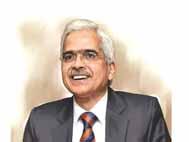
BLUE TICK ON TWITTER IS SIGNIFIER OF CLOUT: CRED FOUNDER KUNAL SHAH
After Twitter's new owner Elon Musk announced $8/month price for blue tick, CRED Founder Kunal Shah called the tick a "signifier of clout" and said the decision would end in chaos. "Those with clout will lose their clout if they appear to be paying for this vanity badge...Those with no clout will buy...and try to appear important," Shah tweeted.

SEASONAL MAGAZINE 41 NEWS-IN-FOCUS
COMPOUNDING ISN’T JUST USEFUL IN FINANCE. IT IS A PRINCIPLE THAT APPLIES TO ALL OF LIFE. BRAD STULBERG RESEARCHES AND WRITES ON SUSTAINABLE EXCELLENCE AND WELLBEING, EXPLAINS ITS MAGICAL POWERS. HE IS THE BESTSELLING AUTHOR OF THE NEW BOOK, THE PRACTICE OF GROUNDEDNESS: A PATH TO SUCCESS THAT FEEDS - NOT CRUSHES - YOUR SOUL.
Growing up, long before he experienced success and became worth billions of dollars, a young Warren Buffet would tell his family and friends, “Do I really want to spend $300,000 on this haircut?” The haircut he was referring to, of course, wasn’t in the six figure range. It probably would have costed him closer to $20. Buffet’s point was that if he cut his own hair, saved the monthly $20 expense, and invested it, over the course of his life all of those seemingly insignificant $20 investments would have netted him thousands of dollars. Buffet was speaking to the law of compounding gains, which goes something like this: small investments made consistently over time build upon themselves and, eventually, amount to something big.
“Recognizing that every dollar you spend today is $10 or $100 or $1,000 you won’t have in the future doesn’t have to make you a miser. It teaches you to acknowledge the importance of measuring trade-offs. You should always weigh the need or desire that today’s spending fulfills against what you could accomplish with that money after letting it grow for years or decades into the future. And the more often you trade, the more likely you are to disrupt compounding and to have to start all over again,” writes Jason Zweig in the Wall Street Journal.
Compounding isn’t just useful in finance. It is a principle that applies to all of life. Brushing your teeth every day is a small investment. If you skip it, nothing bad happens on that day. But if consistently skip it, those small “not so bad days” add up—and you are left with
a costly, both financially and in terms of human suffering, dental disaster. Some other areas where compounding gains matter a lot:


EATING YOUR VEGETABLES. PHYSICAL ACTIVITY. READING.
MAKING TIME FOR INTIMATE CONNECTION WITH YOUR LOVED ONES. SLEEPING.
PRACTICING AN INSTRUMENT. MEDITATION (OR OTHER FORMS OF CONTEMPLATION).
In all of these examples, you build on what you did today, tomorrow. You start the next day just a little bit better, often so little you can’t even measure it, than you were the day before. But if you add up those increments over the course of a lifetime, the result can be massive.
Another important lesson related to consistency and compounding is this: It is harder to make up loses than it is to accrue gains. For simplicity’s sake, imagine that you have $1.00 and it goes down 50 percent. In order to get back to where you started, you must double your 50 cents; or put another way, you must go up by 100 percent. The same goes for so many endeavors beyond finance. If you attempt a heroic effort and it goes
poorly—for example, you go for broke in sport and wind up injured; you go for broke in a relationship and wind up in way over your head; you go for broke in diet and wind up with an eating disorder - getting back to where you started is going to require a lot more effort than the potential gains that you lost.
Put simply, if you go big or go home you often end up home, and with a long journey to get back to where you started. If you go small and steady over a long period of time, however, you often end up with something big. Are there exceptions to this rule? Of course. If you are in the home stretch of an Olympic gold-medal race then taking a huge risk, one that could result in an injury, might be worth it. After all, perhaps you’ll never be in that position again, and the upside is being crowned the best in the world. But these types of exceptions prove the rule.
In the final analysis, the rule of compounding gains says that it is important to resist skipping small good habits or engaging in small bad ones. It’s not just about the benefits or losses you experience on that particular day, it’s about the compounding benefits or losses. Equally important, resist the urge to put forth heroic efforts. Generally speaking, if you fail, the work required to get back to where you started is going to be a lot more than your potential gains.
Don’t think about being consistently great. It’s a trap. It’s impossible. Think about being great at being consistent. It’s a reliable path to growth and achieving one’s potential that makes a lot more sense.
STRATEGY
SEASONAL MAGAZINE 42
THERE'S SO MUCH YOU CAN DO WITH A CONTAINER OF OATS. YOU CAN ENJOY THEM WARM, SOAK THEM OVERNIGHT, BAKE THEM INTO BARS OR MUFFINS, OR EVEN BLEND THEM INTO A WAFFLE BATTER. YET BESIDES SUCH DELICIOUS VERSATILITY, WHY EXACTLY DO HEALTH EXPERTS RECOMMEND OATMEAL AS A GO-TO MORNING MEAL? HOW DOES A SIMPLE BOWL OF OATS AFFECT YOUR LONG-TERM HEALTH?
HERE'S WHAT THE SCIENCE SAYS ABOUT CONSUMING OATMEAL ON A REGULAR BASIS.
known as your gut microbiome - will benefit your body's immune system, improve your mood and digestion, and help to ward off diseases. A 2021 systematic review published in the Journal of Nutrition found a link between oat consumption and increasing beneficial bacterial groups within one's gut, making it a gut-friendly and hearthealthy breakfast. "Incorporating a wide variety of plant foods like oats is also beneficial for gut diversity, which is another important aspect of gut health," says Michalczyk.
YOU'LL MANAGE YOUR WEIGHT EASIER
YOU WILL FEEL FULLER FOR LONGER
Oats are a great source of fiber, a carbohydrate that the body cannot digest. Because fiber slows down digestion, you won't feel as hungry for a longer period, per the Centers for Disease Control and Prevention. Eating fiber-rich foods helps avoid spikes and dips in your blood sugar levels while reducing feelings of hunger. "Having oats for breakfast or incorporated into different foods as meals and snacks is a great way to give the meal more staying power and help you feel fuller for longer," says Maggie Michalczyk, RDN. According to the USDA's FoodData Central, 1 cup of cooked oatmeal contains 4 grams of fiber, which is 16% of the recommended daily value.
YOU WILL HAVE AN EASIER TIME IN THE BATHROOM
"Oats contain a special type of soluble fiber called beta-glucan," says Michalczyk. "Beta-glucan forms a gellike consistency in the gut and helps to


keep things moving in your digestive tract and keep you regular." This helps with bulking up your stool, making it easier for your bowel movement later. Plus, pairing your oatmeal with sources of insoluble fiber - like unpeeled sliced apples, nuts or blackberries - can also help keep things moving in your digestive tract and make things easier in the bathroom later.
YOUR RISK OF HEART DISEASE WILL DECREASE
Starting your morning with a bowl of oats can benefit your heart health in more ways than one. Because of the fiber content, oatmeal can help lower your "bad" LDL cholesterol, stabilize blood sugar levels and even lower high blood pressure - all of which play a significant role in minimizing risk of developing cardiovascular disease.
YOUR GUT BACTERIA WILL THRIVE
Oatmeal is also a prebiotic food, which feeds the good bacteria in your gut. Maintaining healthy gut bacteria - also
Along with these positive benefits, research shows this popular breakfast can even support weight-loss and weightmanagement efforts. According to a 2021 review published in Foods, oat beta-glucan has positive effects on hyperglycemia, lowering blood lipid levels and reducing weight. "The fiber content of oatmeal is filling and satiating, which in turn can help with eating fewer calories throughout the day and managing your weight," says Michalczyk. "Beta-glucan may also promote the release of peptide YY, a hormone produced in the gut that helps with satiety."
THE BOTTOM LINE
Oatmeal's high fiber content and prebiotic qualities may benefit your body in more ways than one. Making oatmeal a regular part of your menu can potentially lower your disease risk, help your gut health thrive, make bowel movements easier and keep you feeling fuller for longer.
(Credit: Kiersten Hickman for Eating Well)
NUTRITION SEASONAL MAGAZINE 43
HOW TO RAISE STARTUP KIDS
MARGOT MACHOL BISNOW IS A WRITER, MOM AND PARENTING COACH. SHE SPENT 20 YEARS IN GOVERNMENT, INCLUDING AS AN FTC COMMISSIONER AND CHIEF OF STAFF OF THE PRESIDENT’S COUNCIL OF ECONOMIC ADVISERS, AND IS THE AUTHOR OF “RAISING AN ENTREPRENEUR: HOW TO HELP YOUR CHILDREN ACHIEVE THEIR DREAM.” FOR HER BOOK, SHE TALKED TO 70 PARENTS OF HIGHLY SUCCESSFUL ADULTS WHO WENT ON TO BECOME SUCCESSFUL ENTREPRENEURS OR CHIEF EXECUTIVES, AND FOUND OUT 5 PHRASES THEY ALWAYS SAID TO THEIR KIDS.

the same messages every day. Some of them were tough love, while others offered positive wisdom.
1. “I CAN’T DO EVERYTHING FOR YOU.”
These parents were the opposite of “helicopter” parents (a.k.a. overprotective and very involved). Instead, they set clear expectations and trusted their kids to take responsibility. More importantly, they allowed natural consequences to occur. If their kid didn’t study and failed a quiz, for example, they used that as an opportunity for reflection and learning. When Robert Stephens, a former executive at Best Buy, was three years old, he took off all the doorknobs in the house. “My parents weren’t angry, they just told me I had to put them all back,” he said.
Stephens became the “fix-it” guy in his family. Then, at 24, he went on to start Geek Squad, a repair company that he later sold for $3 million.
2. “DO YOUR BEST AND BE KIND.”
All of the entrepreneurs learned the importance of kindness when they were young. In 2006, Blake Mycoskie founded TOMS, which has given away over 95 million pairs of shoes. His company introduced the “one-for-one” business model, in which one item is given away to the needy for each item purchased.
Jonathan Neman tried to start a number of businesses in college. None of them took off. But he learned about what did work, and what didn’t. After college, he and his friends co-founded Sweetgreen, which now has over 900 locations across the USA.
“Even if my dad didn’t think something was a good idea, he supported me,” Neman told me. “My entrepreneurship journey is all about resilience. We keep going. We fail, we try and try again, we fail, we try and try and try.”
4. “WHAT’S THE BEST - AND WORST THING - THAT HAPPENED TODAY?”

Different families discussed the day’s events at different times, such as on the ride home from school or on the weekends. But many had great conversations around the dinner table. The kids knew it was a safe space to talk. When VC investor DA Wallach was a junior in high school, he decided there wasn’t enough diversity at his school. He campaigned about it. The headmaster told him to stop.
He discussed the situation and how he felt in great detail with his mom that day. “I said he could pursue it if he wanted. I told him he could handle it, but I never interfered,” she told me. Today, Wallach is still pursuing goals he thinks are important, now in biotech and healthcare as a partner in Time BioVentures.
he things that parents say to their kids can either encourage and give them confidence, or lower their self-esteem and hold them back in life.
So how do we avoid doing the latter? As I researched and wrote my book, “Raising an Entrepreneur,” I talked to 70 parents who raised highly successful adults about how they helped their kids achieve their dreams.
To my surprise, although it was an extremely diverse group - of races, religions, socioeconomic brackets and education - all the parents gave their kids
His mom told me that instilling compassion was an important part of bringing up her children: “We always adopted three or four families at Christmas through our church and bought clothes and toys that we delivered together to the kids.” This was always their family policy - “to help those less fortunate,” she said. “The kids have seen this practiced their entire lives.”
3. “IF SOMETHING DOESN’T WORK OUT, DON’T BE SAD. IT MAY TURN OUT TO BE A GOOD THING LATER ON.”
The future entrepreneurs learned to win and lose gracefully, and to not obsess over mistakes. Pivoting and trying a new approach was also key.
5. “I LOVE YOU.”
Every entrepreneur grew up knowing how much their family loved them, believed in them, and were there for them. As ‘I Am That Girl’ founder Alexis Jones told me, “My mom set this expectation for the household: We love each other unconditionally - these are your people. We always have each other’s back. It made me feel like nothing was impossible.”
The parents of the 70 entrepreneurs all communicated the same message: “We love you. We trust you. We believe in you. We support whatever you want to do. We’ll always be here for you.”
(Credit: CNBC Make It)
PARENTING SEASONAL MAGAZINE 44
SIMPLE BRAIN HACKS FOR BOOSTING YOUR MOOD
YOU CAN BOOST YOUR BRAIN'S 4 HAPPY HORMONES - DOPAMINE, SEROTONIN, ENDORPHIN AND OXYTOCIN. HERE'S HOW TO DO IT NATURALLY.
here's a lot going on in the world that can contribute to high levels of stress: rising gas prices, surging inflation, a potential recession on the horizon, and the plenty of day-to-day stressors that arise between work, school and life. But I'm not here to make you more anxious than you already are. I'm here to tell you there are small practices you can do each day that can make a real difference in improving your mood. For example, there are a few simple rituals that always bring me happiness: cuddles with my puppy, reading before work, getting some exercise and even that first sip of coffee.
Sure, a cup of coffee won't change whether you feel truly fulfilled - but in uncertain times, there's value in boosting your mood when you can.
There are four main natural hormones that trigger feelings of happiness, and each chemical is connected to specific events or rewards. Understanding these chemicals and how they work can help you figure out even small ways to feel better amid such a stressful time.
To explain exactly how these "happiness" chemicals work, I spoke to Loretta Breuning, founder of the Inner Mammal Institute and author of Habits of a Happy Brain. Almost everything that makes you feel "happy" is linked to one of the four happiness hormones: dopamine, serotonin, endorphin and oxytocin. Here are some ways you can boost them naturally.
Dopamine
The hormone dopamine is associated with motivation and reward. It's why you


feel gumption when you set an exciting or important goal, and why it feels good to reach that goal. On the flip side, if you have low dopamine (which experts say can occur with depression), it can explain feelings of low motivation or loss of interest in something you used to enjoy.
"Approaching a reward triggers dopamine. When a lion approaches a gazelle, her dopamine surges and the energy she needs for the hunt is released. Your ancestors released dopamine when they found a water hole," Breuning says. "The expectation of a reward triggers a good feeling in the mammal brain, and releases the energy you need to reach the reward."
There are some not-so-healthy habits that increase dopamine like drinking caffeine, eating sugar or taking certain
BIOHACK SEASONAL MAGAZINE 45
recreational drugs. But you can find ways to kick this hormone up without turning to potentially unhealthy or addictive substances.
"Embrace a new goal and take small steps toward it every day. Your brain will reward you with dopamine each time you take a step. The repetition will build a new dopamine pathway until it's big enough to compete with the dopamine habit that you're better off without," Breuning says.
You may already have goals set around your career, work or how much money you'd like to make. But don't forget personal goals. Committing to a rewarding hobby or sport can be just as gratifying as professional goals. Don't just set a few big goals that will take longer to complete -- also adopt shorter-term goals so you stay motivated.
"Set a short-run, long-run, and middleterm goal so you will always be approaching one when another is blocked. Focus on things you have control over and don't wait for others to set your goals for you," Breuning says.
Serotonin
Serotonin is a neurotransmitter that plays a role in mood, but it also helps regulate other functions in your body like digestion, sleep and bone health. When it comes to happiness and how you feel every day, serotonin is important for reducing depression and regulating anxiety.
"Confidence triggers serotonin. Monkeys try to one-up each other because it stimulates their serotonin. People often do the same," Breuning says. You've probably never thought about confidence on a neurochemical level, but according to Breuning, if you don't prioritize confidence, your serotonin levels could take a hit.
If you are trapped in a cycle of low selfesteem or have had others undermine your confidence, it can be hard to build it back up. It may sound strange, but don't ignore your need for respect and status.

"You can develop your belief in your own worth. If you focus on your losses you will depress your serotonin, even if you're a rock star or a CEO. You can build the habit of focusing on your wins. Your serotonin will suffer if you don't," Breuning says.
Besides focusing on what you've achieved in life, you can also build confidence in other ways. One way to do this is by working out or adopting a new exercise routine, which helps bolster your confidence when you stick to it over time. Something else you can try is finding ways to get out of your comfort zone each day. Every day that you challenge yourself to adapt to something new, even if it feels uncomfortable at first, you build more confidence.
Oxytocin
Oxytocin is sometimes called the "love" hormone and is associated with how people bond and trust each other. Certain activities like kissing, hugging and having sex can trigger the release of oxytocin in the brain.
It explains why you feel happy when you pet or cuddle with your pets. It's important in childbirth since oxytocin helps the mother's uterus contract to deliver the baby, and oxytocin plays a role in breastfeeding too. It also helps parents bond with a baby after birth.
You can boost oxytocin by being physically intimate with others. But besides the physical aspect, it's important to know that there's an emotional connection to how oxytocin is released. "Social trust is what triggers oxytocin. If you hug someone you don't trust, it doesn't feel good. Trust comes first. You can build social trust by taking small positive steps toward people," Breuning says.
You can reach out to a friend or contact you'd like to get to know better. Send someone a thank you note or a card just to tell them you're thinking about them. "Take a small step toward someone each
day, and they may reciprocate months later, but if you keep doing it you will build trust networks," Breuning says.
Endorphins
Endorphins are notoriously linked with exercise: It's the phenomenon that explains the runner's high or postworkout endorphin "rush." They function as "natural painkillers" that help minimize pain and maximize pleasure. This chemical experience can explain why a runner may be able to push through a race with an injury that they don't notice until it's over. "In the state of nature, it helps an injured animal escape from a predator. It helped our ancestors run for help when injured. Endorphins evolved for survival, not for partying. If you were high on endorphins all the time, you would touch hot stoves and walk on broken legs," Breuning explains.
How to boost endorphins How to boost endorphins How to boost endorphins How to boost endorphins to Laughter is one way to boost endorphins naturally. So is eating dark chocolate, watching your favorite drama, working out and meditating. Endorphins are released in response to pain, but that doesn't mean you should seek out ways to cause yourself harm (like by overexercising or pushing yourself beyond your limits) just to feel good.
"Inflicting harm on yourself to stimulate endorphins is a bad survival strategy. Fortunately, there are better ways: laughing and stretching. Both of these jiggle your innards in irregular ways, causing moderate wear and tear and moderate endorphin flow," she says.
(Credit: Mercey Livingston for CNET)
SEASONAL MAGAZINE 46

COVERSTORY
MAZAGON DOCK SHIPBUILDERS

Unlike many PSU stocks, Mazagon Dock Shipbuilders' stock has risen steadily. That was until July of this year, after which the stock shifted to an exponential gear. The stock has doubled during the last 12 months and it is no wonder really as MDS is eyeing Rs. 1.59 trillion worth of orders from Indian Navy, after having launched its stealth frigate Taragiri recently, and with Navy's 5th Scorpene submarine all set to be delivered by December end. MDS' plans to sell 10% additional stake in the company is also expected to be well received by the market. Since 2019, Mazagon Dock Shipbuilders Ltd (MDL) is led by its Chairman & Managing Director, Vice Admiral Narayan Prasad, who retired from the Indian Navy after a chequered career of over 36 years that saw him winning the Ati Vishisht Seva Medal and the Nav Sena Medal for his exemplary service to the Indian Navy.

SEASONAL MAGAZINE 48

SEASONAL MAGAZINE 49
Vice Admiral Narayan Prasad (IN Retd) CMD (Mazagon Dock Shipbuilders Limited)
Indian Navy’s recently launched warship, Taragiri, speaks volumes about the capabilities that its builder Mazagon Dock Shipbuilders have garnered in recent years. Taragiri is a stealth frigate, which means it is a warship that uses stealth technology in its construction process so that the ship is harder to detect by the enemy by various detection techniques including radar, infrared, sonar and visual methods. But don’t ever think that being designed to operate in such a stealth mode, makes Taragiri anywhere near small or slow. Technically, frigates fall between the larger destroyer class warships and the smaller corvettes, and to an extent combine the best of both worlds - the destroyer’s defence & attack capabilities and the corvette’s speed and agility. This latest frigate to be launched by MDL is nearly 150 metres long and almost 18 metres wide, with a launch weight of 3510 tons. It is propelled by a CODOG system that can achieve 28 knots or nearly 52 km/hour at a displacement of 6670 tons, when needed.
CODOG stands for ‘Combined Diesel Or Gas’ which is a type of modern propulsion system for ships that need a maximum speed that is considerably faster than their cruise speed, and is particularly used in warships like modern frigates or corvettes. The CODOG system in Taragiri uses a combination of two Main Diesel Engines for normal cruising and two Gas Turbines which are used for emergency sprinting.
Mazagon Dock Shipbuilders Ltd (MDL) is led by its

Chairman & Managing Director, Vice Admiral Narayan Prasad, who retired from the Indian Navy after a chequered career of over 36 years. He is an alumnus of Sainik School Tilaiya, National Defence Academy, Jawaharlal Nehru University, Naval College of Engineering (INS Shivaji, Lonavala), University of Pune and University of Mumbai. A postgraduate in both engineering and humanities, Vice Admiral Narayan Prasad has also been awarded Ati Vishisht Seva Medal and Nav Sena Medal for his exemplary service to the Indian Navy.
Taragiri is the third warship in the Indian Navy’s Project 17A that was set up to build seven warships of stealth frigate class with guided missile capabilities, at a total cost of around Rs 25,700 crores.The first ship of Project 17A, Nilgiri, was launched on September 28, 2019, and is expected for sea trials in the first half of 2024. The second ship of the Udaygiri class under the project was launched on May 17 this year. It is expected to start sea trials during the second half of 2024.

The keel of Taragiri was laid on September 10, 2020, and it was launched two years later, on September 11 2022, and the ship is expected to be delivered by August 2025. And the keel of the fourth ship under project 17A was laid on June 28, this year. The construction of all these four ships had been awarded to Mazagon Dock Shipbuilders, whereas the remaining three ships were given to GRSE.
What makes the construction and launch of Taragiri
SEASONAL MAGAZINE 50
INS UDAYGIRI
such an impressive feat for MDL is however other factors. Firstly, it is the first warship of this class to be built by MDL by the latest integrated modular construction methodology that greatly enhances construction speed by leveraging diverse capabilities of geographically dispersed shipbuilding facilities. In other words, the hull blocks were constructed in different MDL facilities at different geographical locations and the final integration and erection being done on the slipway at MDL’s central yard at Mazagon.

Secondly, the construction of Taragiri witnessed an amazing level of coordinated efforts spearheaded by MDL, and involving several organizations and firms in the public and private sector. The warship’s overall design was by the Indian Navy's in-house design organization, Bureau of Naval Design. However, it was MDL that carried out the detailed design and construction which were overseen by the Warship Overseeing Team based at Mumbai.


The steel used in the hull construction of Taragiri is the indigenously developed DMR 249A which is a low carbon micro alloy grade steel developed and manufactured by SAIL, the leading steel PSU. Taragiri also has in its construction, diverse equipment and machinery sourced from India’s major industrial houses as well as from over one hundred MSMEs. Such detailed coordination of the project by MDL resulted in the indigenous content of Taragiri being approximately 75% which is above its predecessors, the P17 Shivalik class warships.
If you are wondering why there is a further time gap of three years from Taragiri’s recent launch (September 2022) to the final delivery (August 2025), wait till you hear about its ambitious weaponry that are yet to be fitted in. This stealth frigate will have state-of-the-art weapons, sensors, an advanced action information system, an integrated platform management system, world class modular living spaces, sophisticated power distribution system and a host of other advanced features. It will also be fitted with a supersonic surface-to-surface missile system.
The ship has impressive air defence capabilities too, which are designed to counter the threat of enemy aircraft and anti-ship cruise missiles. They include the vertical launch and long range surface to air missile system, while two 30 mm rapid-fire guns will provide the ship with close-in-defence capability. An SRGM Gun will enable Taragiri to provide effective naval gunfire support too. The indigenously
INS UDAYGIRI
SEASONAL MAGAZINE 51
INS TARAGIRI
developed triple tube light weight torpedo launchers and rocket launchers provide this warship’s antisubmarine capability.
If the launch of Taragiri was the highlight of MDL’s second quarter, in the first quarter it had launched two warships, the stealth frigate Udayagiri and a much bigger, missile destroyer of Visakhapatnam class, the INS Surat. The other warships of this class are INS Visakhapatnam, INS Mormugao & INS Imphal, and with INS Surat, MDL and Indian Navy will be completing the fourth and last destroyer of this class.
INS Surat is a stealth guided-missile destroyer whose keel was laid down in 2018. Built at two different geographical locations using the block construction methodology involving hull construction and joining together at MDL, Surat was launched on 17 May 2022 by MDL and the warship is expected to be commissioned by 2025.
The third quarter will also witness a major delivery by MDL. After having delivered four Scorpene class submarines to Indian Navy already, December end will witness the delivery of Vagir, the 5th Scorpene class submarine, whereas the fourth quarter or the

first quarter of next fiscal will see the delivery of the 6th Scorpene Class Submarine, Vagsheer. Both these submarines have already been launched by MDL. With such a steady stream of launches and deliveries in the pipeline, there is no wonder that the MDL stock is going northwards at an exponential pace now. MDL is also eyeing Rs. 1.59 trillion worth of fresh orders from the Indian Navy. MDL’s plans to sell a 10% additional stake in the company is also expected to be well received by the market, due to its soaring performance in recent quarters.

SEASONAL MAGAZINE 52
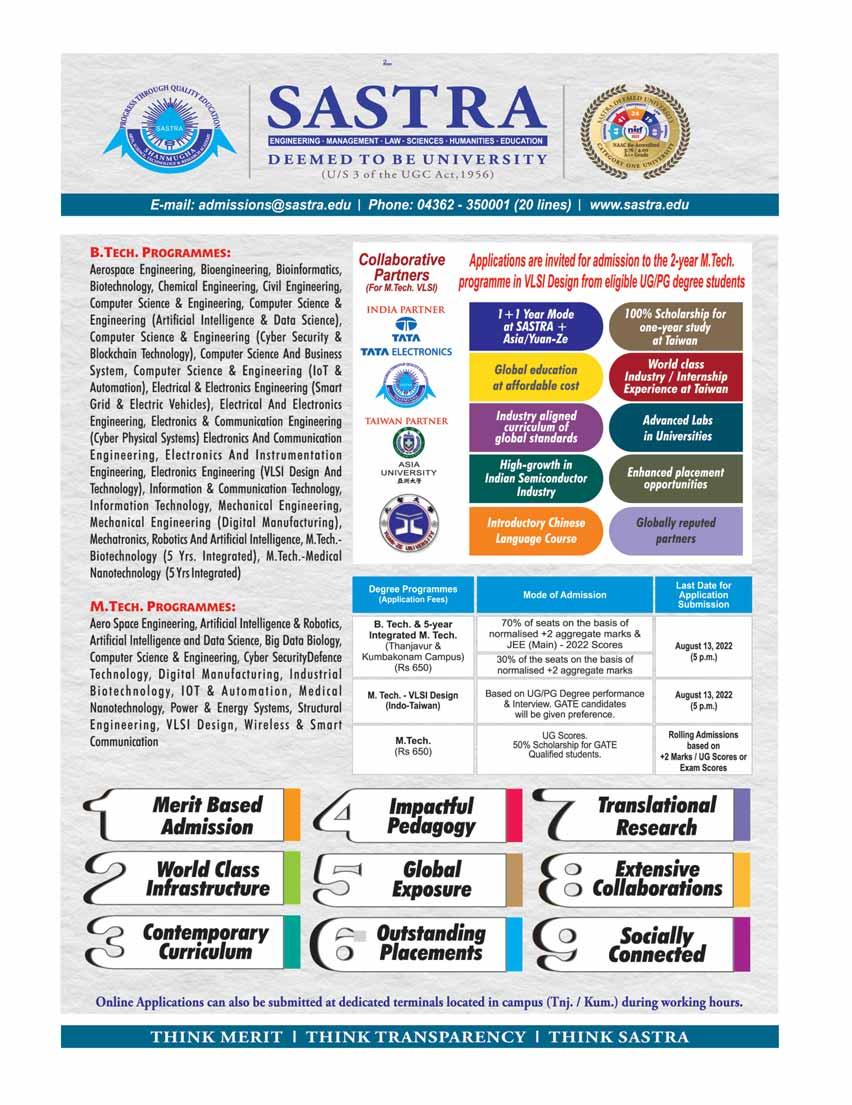
WHY UNION BANK IS FIRING ON ALL CYLINDERS
A Manimekhalai MD & CEO

SEASONAL MAGAZINE 54 BANKING
THE UNION BANK STOCK WHICH HAD ALREADY BEEN ON AN UPSWING SINCE JULY, RECENTLY SHIFTED TO OVERDRIVE AFTER THE SECOND QUARTER RESULTS WERE ANNOUNCED. THE RECENT VERTICAL CLIMB WAS OF COURSE PROMPTED BY THE OVERALL GOOD NUMBERS RECORDED BY THE BANK IN Q2, BUT THERE IS ALSO MORE TO IT THAN CATCHES THE EYE. FOR INSTANCE, UNDER ITS NEW MD & CEO A MANIMEKHALAI, WHO TOOK CHARGE ONLY IN JUNE THIS YEAR, UNION BANK HAS OUTPERFORMED THE ENTIRE BANKING SYSTEM’S CREDIT GROWTH RATE AND DEPOSIT GROWTH RATE IN Q2 BY A SIZABLE MARGIN. THE UNION BANK STOCK, WHICH ALREADY SITS ON AN OVER 63% GAIN DURING THE PAST 12 MONTHS, IS ALL SET TO MAKE IT 100% OR DOUBLE ITS VALUE, AS PER SOME BROKERAGE AND ANALYST ASSESSMENTS. AS A LONG-TERM HUMAN RESOURCE DEVELOPMENT INITIATIVE, THE BANK HAS ALSO LAUNCHED TWO INDUSTRY-FIRST COMMITTEES, EMPOWERHER AND EMPOWERHIM, FOR SERVING THE UNIQUE GROWTH AND EMPOWERMENT NEEDS OF FEMALE AND MALE WORKFORCE OF THE BANK.

During the July-September quarter, the results for which were announced recently, the leading PSU lender grew its net profit by 21% on a year-on-year basis or compared with the corresponding quarter of last fiscal. Union Bank’s bottomline increased to Rs. 1,848 crore in Q2 from Rs. 1,526 crore a year ago.
The key driver for this bottomline performance was strong loan growth, especially in retail loans. The market was most impressed with this development as traditionally PSU banks like Union Bank have been relying more on wholesale or corporate loans for their growth requirements.
While total advances in Q2 increased 22% YoY, there was a 15% growth in retail, agriculture and MSME segments, which are generally perceived as safer loans. The bank’s mainstay segments continued their robust performance with a 22% growth in corporate loans led by segments like infrastructure, iron & steel, chemicals and NBFCs. Outstanding advances stood at Rs. 7,73,000 crore as of September 2022.
Why this is an outstanding performance is that Union Bank’s loan book growth of 22% YoY, is a much higher rate than the entire banking system's pace of loan book expansion which came in at just 16.4% in the quarter ended September 2022.

The performance came in as a strong endorsement for the leadership of its MD & CEO A Manimekhalai who had assumed charge on June 3rd this year.
Q2 is the first full quarter under her leadership to report the earnings. Manimekhalai, an MBA holder from Bangalore University and Diploma holder in Human Resource Management from NMIMS, Mumbai, is a veteran PSU banker who excelled in her long stints at Vijaya Bank where she was General Manager and at Canara Bank where she was Executive Director.
A consummate banker, she is well versed in devising and implementing strategic policies, covering core areas like strategic planning, setting organisational goals, growth strategies, action plans, compliance, internal control etc. Such skills helped her play a pivotal role in the complex merger of Canara Bank and Syndicate Bank.
Under her visionary leadership, Union Bank’s credit growth has been strong, and its Net Interest Income (NII) also grew by 22% year-on-year during Q2 to touch Rs 8,305 crore. The Net Interest Margin (NIM), which is the difference between the interest earned and interest paid and a core metric of profitability, expanded by 20 basis points (bps) to 3.15% as of September 30.
In fact, the Mumbai headquartered
SEASONAL MAGAZINE 55
lender could have put up a higher growth in its net profit, if not for a fall in non-interest income during this quarter. There was an 18% decline in non-interest income, which fell to Rs 3,276 crore, driven mainly by treasury losses and lower recoveries in writtenoff accounts than expected.
Soon after taking charge of the corner office at Union Bank, MD & CEO A Manimekhalai led the establishment of an industry-first, dedicated and women-focused Committee ‘EmpowerHer’ as part of its flagship HR initiative ‘Prerna’. The program aims to promote women’s career trajectory and improve diversity in the bank by navigating through existing biases and challenges, and will benefit the over 21,000 women who are an integral part of the Union Bank workforce.
With pan India representation, the 40 women Committee members will directly engage with the management to develop effective structural changes that will establish Union Bank of India as the most preferred employer brand for women. The launch event was graced by several women leaders from the industry who provided powerful insights to the Committee members on how to undertake their new responsibility.

This was soon followed up by a complementary Committee for men,

‘EmpowerHim’, which was also an industry-first. The program aims to promote the employees’ career trajectory and improve diversity in the Bank by picking out and resolving individual as well as common existing challenges. As representatives of the male employees who comprise over 70% of the bank's workforce, the Committee will help male employees understand local problems, highlight the importance of gender equity, focus on sensitization at work, and provide sustainable and consensus-based solutions to existing pain-points.
Delving deeper into its sustainable performance, Union Bank has shown a further signal of turning into a more retail focused operation on its deposits
front, during this quarter. The bank’s deposits grew by over 14% YoY in Q2, and a highlight of this growth was the addition of around Rs 40,000 crore in current account and savings account (CASA) deposits, which is the real engine of growth for a bank, especially for pushing retail credit growth. The CASA ratio stood at 35.63% by the end of Q2, and Union Bank is pursuing varied strategies to improve it further in the coming quarters.
On the deposits front too, Union Bank outperformed the entire banking system in Q2. While deposits touched Rs. 10,43,000 crore, growing at a pace of over 14%, the entire banking sector’s deposit growth rate was way below at 9.2%.
On the provisioning and asset quality front, provisions rose by over 4% amounting to Rs 4,077 crore in Q2, dominated mainly by higher provisioning on standard assets. The provision coverage ratio rose to 86.61% for the quarter under review from 81.77% a year ago. The bank made total recoveries worth Rs 5,685 crore in Q2 while fresh slippages stood at Rs 2,913 crore.
The fresh slippages have moderated by 31% sequentially, driven by both lower corporate and retail slippages. This emerging stability along with higher write-offs and healthy recoveries and upgrades, resulted in an improvement in asset quality ratios.
SEASONAL MAGAZINE 56
The performance in recoveries and slippages were largely according to the guidance provided earlier by Union Bank. The management had guided for slippages for the whole fiscal at Rs 13,000 crore, of which slippages so far in Q1 & Q2 have been at Rs 6,700 crore. In recoveries, against a full fiscal guidance and target of Rs 15,000 crore, the bank has already made recoveries to the tune of Rs 8,500 crore.
Improving asset quality ratios gave Union Bank another shot in its arm post Q2 numbers. The bank saw an improvement in asset quality as gross non-performing asset (GNPA) ratio fell by 419 bps YoY to 8.45% in Q2, while the Net NPA ratio (NNPA) declined by 197 bps to 2.64%. The bank has in fact performed better than its own given guidance of 9% for gross NPA and 3% for net NPA for the whole year, so far.
Eyeing strong credit growth ahead, Union Bank is also planning to raise funds via a Qualified Institutional Placement (QIP), latest by Q4 of this fiscal itself. The bank has already won approval to raise Rs 3,800 crore through this share issue, while the overall fundraising plans for the year is for Rs. 8100 crore. Apart from the QIP, the bank is planning to raise the rest via tier-I bond issues. Of this, Union Bank has already raised Rs 1,320 crore through bond issuances this fiscal. The bank's Capital Adequacy Ratio (CAR) stood at 14.5%
in September 2022, up from 13.64% a year ago.
Apart from the over 63% surge in its share price during the past 12 months, Union Bank is also a high dividend payer for its investors. At current prices, the dividend yield of Union Bank stock stands at a high 3.56%. Coupled with a modest price-earnings multiple of just 6 times and a priceto-book ratio of just 0.56 times, this makes Union Bank an attractive bet for many investors.
However, on its part, Union Bank is continuing to offer a more conservative stance regarding upcoming quarters. MD & CEO A Manimekhalai has guided that the bank continues to maintain a conservative credit growth target of 10% to 12% for the current fiscal year despite the strong growth in the second quarter.
Among its various growth strategies, Union Bank is also pursuing the


establishment of Digital Banking Units (DBUs). It has recently operationalized six such Digital Banking Units. A DBU is envisioned as a specialized hub housing digital infrastructure for delivering as well as servicing existing financial products & services digitally, in both selfservice and assisted modes.
The first six DBUs of Union Bank have come up in Rajahmundry & Machilipatnam in Andhra Pradesh; Palakkad in Kerala; Sagar in Madhya Pradesh; Nagpur in Maharashtra; and Agartala in Tripura. Around 27 services have been made available at Union Bank DBUs using infrastructure like ATM, CRM (Cash Recycling Machine), Passbook Printing Kiosk, Multifunctional Kiosk, Interactive Tablets, Internet Banking Kiosk / PC, Video KYC and Video Chat Kiosk / PC. These Union DBUs are thus future ready banking outlets and will pave the way for not only growth and financial inclusion but digital financial literacy.
SEASONAL MAGAZINE 57
10 PROVEN WAYS TO LEARN FASTER, FOR CHILDREN AND ADULTS ALIKE

MODERN SOCIOECONOMICS IS DEMANDING THAT BOTH CHILDREN AND ADULTS LEARN MORE AND MORE NEW THINGS, FASTER. THANKFULLY, NEUROSCIENCE HAS TAUGHT US A LOT ABOUT HOW OUR BRAINS PROCESS AND HOLD ON TO INFORMATION, IN RECENT YEARS.
earning new things is a huge part of life - we should always be striving to learn and grow. But it takes time, and time is precious. So how can you make the most of your time by speeding up the learning process? Thanks to neuroscience, we now have a better understanding of how we learn and the most effective ways our brains process and hold on to information.
If you want to get a jump start on expanding your knowledge, here are 10 proven ways you can start learning faster today.
1. Take notes with pen and paper 1. notes with pen and paper 1. paper
Though it might seem that typing your notes on a laptop during a conference or lecture will be more thorough, thus helping you learn faster, it doesn't work that way. To speed up your learning, skip the laptop and take notes the oldfashioned way, with pen and paper.
Research has shown that those who type in their lecture notes process and retain the information at a lower level. Those who take notes by hand actually learn more.

While taking notes by hand is slower and more cumbersome than typing, the act of writing out the information fosters comprehension and retention. Reframing the information in your own words helps you retain the information longer, meaning you'll have better recall and will perform better on tests.
2. Have effective note-taking skills 2. Have note-taking
The better your notes are, the faster you'll learn. Knowing how to take thorough and accurate notes will help you remember concepts, gain a deeper understanding of the topic and develop meaningful learning skills. So, before you learn a new topic, make sure you learn different strategies for note taking, such as the Cornell Method, which helps you
organize class notes into easily digestible summaries.
Whatever method you use, some basic tips for note taking include: A) Listen and take notes in your own words. B) Leave spaces and lines between main ideas so you can revisit them later and add information. C) Develop a consistent system of abbreviations and symbols to save time. D) Write in phrases, not complete sentences. E) Learn to pull out important information and ignore trivial information.
3. Distributed practice 3. practice
This method involves distributing multiple practices (or study sessions) on a topic over a period of time. Using short, spaced-out study sessions will encourage meaningful learning, as opposed to long "cram sessions," which promote rote learning. The first step is to take thorough notes while the topic is being discussed. Afterward, take a few minutes to look
LEARNING SEASONAL MAGAZINE 58
over your notes, making any additions or changes to add detail and ensure accuracy. Do this quickly, once or twice following each class or period of instruction. Over time, you can begin to spread the sessions out, starting with once per day and eventually moving to three times a week. Spacing out practice over a longer period of time is highly effective, because it's easier to do small study sessions and you'll stay motivated to keep learning.
4. Study, sleep, study again 4. Study, sleep, study again 4. Study, sleep, study again 4. Study, sleep, study again
You have a big project or a major presentation tomorrow and you're not prepared. If you're like many of us, you stay up too late trying to cram beforehand. Surely your hard work will be rewarded, even if you're exhausted the next day… right? However, that's not the most efficient way for our brains to process information.
Research shows a strong connection between sleep and learning. It seems that getting some shut-eye is an important element in bolstering how our brains remember something. Deep sleep (non rapid eye movement sleep) can strengthen memories if the sleep occurs within 12 hours of learning the new information. And students who both study and get plenty of sleep not only perform better academically; they're also happier.
5. Modify your practice 5. Modify practice 5. Modify your practice 5. Modify practice Modify practice
If you're learning a skill, don't do the same thing over and over. Making slight changes during repeated practice sessions will help you master a skill faster than doing it the same way every time. In one study of people who learned a computer-based motor skill, those who learned a skill and then had a modified practice session where they practiced the skill in a slightly different way performed better than those who repeated the original task over and over.
This only works if the modifications are small -- making big changes in how the skill is performed won't help. So, for instance, if you're practicing a new golf swing or perfecting your tennis game, try adjusting the size or weight of your club or racket.
6. Try a mnemonic device 6. Try a device
One of the best ways to memorize a large amount of information quickly is to use a mnemonic device: a pattern of letters, sounds or other associations that assist in learning something. One of the most popular mnemonic devices is one we learned in kindergarten -- the alphabet song. This song helps children remember their "ABCs," and it remains deeply ingrained in our memory as adults. Another is "i before e except after c" to help us remember a grammar rule. Mnemonics help you simplify, summarize and compress information to make it easier to learn. It can be really handy for students in medical school or law school, or people studying a new language. So, if you need to memorize and store large amounts of new information, try a mnemonic and you'll find you remember the information long past your test.
better than those who didn't.
Dehydration, on the other hand, can seriously affect our mental function. When you fail to drink water, your brain has to work harder than usual.
9. Learn information in 9. Learn multiple ways multiple ways
When you use multiple ways to learn something, you'll use more regions of the brain to store information about that subject. This makes that information more interconnected and embedded in your brain. It basically creates a redundancy of knowledge within your mind, helping you truly learn the information and not just memorize it. You can do this by using different media to stimulate different parts of the brain, such as reading notes, reading the textbook, watching a video and listening to a podcast or audio file on the topic. The more resources you use, the faster you'll learn.
7.
7.
7.
7.
Information overload is a real thing. In order to learn something new, our brains must send signals to our sensory receptors to save the new information, but stress and overload will prevent your brain from effectively processing and storing information.
When we are confused, anxious or feeling overwhelmed, our brains effectively shut down. You can see this happen when students listening to long, detailed lectures "zone out" and stop paying attention to what's being said. They simply aren't able to effectively conduct that information into their memory banks, so learning shuts down. The best way to combat this is by taking a "brain break," or simply shifting your activity to focus on something new. Even a five-minute break can relieve brain fatigue and help you refocus.
8. Stay hydrated 8. Stay hydrated
We know we should drink water because it's good for us - it's good for our skin and our immune system, and it keeps our body functioning optimally. But staying hydrated is also key to our cognitive abilities. Drinking water can actually make us smarter. According to one study, students who took water with them to an examination room performed
10. Connect what you learn with 10. what you with what something you know something you something you know something you
The more you can relate new concepts to ideas that you already understand, the faster you'll learn the new information. According to the book Make It Stick, many common study habits are counterproductive. They may create an illusion of mastery, but the information quickly fades from our minds. Memory plays a central role in our ability to carry out complex cognitive tasks, such as applying knowledge to problems we haven't encountered before and drawing inferences from facts already known. By finding ways to fit new information in with preexisting knowledge, you'll find additional layers of meaning in the new material. This will help you fundamentally understand it better, and you'll be able to recall it more accurately.
Elon Musk, founder of Tesla and SpaceX, uses this method. He said he views knowledge as a "semantic tree." When learning new things, his advice is to "make sure you understand the principles, i.e., the trunk and big branches, before you get into the leaves/ details or there is nothing for them to hang on to." When you connect the new to the old, you give yourself mental "hooks" on which to hang the new knowledge.
(Credit: Deep Patel for Entrepreneur)
Use brain breaks to restore focus
Use brain focus
Use brain breaks to restore focus
Use brain focus
SEASONAL MAGAZINE 59
TWO ANCIENT TRADITIONS IN PARENTING AND HOW IT CAN HELP ADULT RELATIONS TOO

ERIC BARKER IS THE AUTHOR OF THE WALL STREET JOURNAL BESTSELLER “BARKING UP THE WRONG TREE,” WHICH HAS SOLD OVER HALF A MILLION COPIES AND BEEN TRANSLATED INTO 19 LANGUAGES. ERIC IS ALSO A SOUGHTAFTER SPEAKER, HAVING GIVEN TALKS AT MIT, THE ASPEN IDEAS FESTIVAL, GOOGLE, THE UNITED STATES MILITARY CENTRAL COMMAND (CENTCOM), AND THE OLYMPIC TRAINING CENTER. HERE, ERIC WRITES ABOUT ANCIENT TRADITIONS FROM THE MAYA AND INUIT CIVILIZATIONS THAT REVEAL TWO RITUALS THAT WILL MAKE YOU AN AWESOME PARENT AND EMOTIONALLY INTELLIGENT ADULT TOO.
We’re often presented with an image of parenting that is a bit too perfect. But all too often parents wake up to realize they were cast in a reality show without their permission. The kids cause more problems in 4 minutes than I could get into in 4 years. You wonder if your genetics have spawned an unholy chimera of you and you partner’s worst traits. It gets to a point where you wake up to the sounds of screams. Not the kid’s screams. Yours.
How are you supposed to teach that little one to be a moral, productive human
being when you can’t even get them to eat breakfast? (It’s much better to consider how you could be a better parent now as opposed to during the sentencing hearing.) You read books but the tips from the Parent Industrial Complex don’t seem to be that helpful.
Christina Hardyment looked at over 650 parenting books dating back to the 1700’s and found the vast majority of the information they contain wasn’t from science or even the hard-won insight of wise moms. Most of it actually came from manuals designed to industrialize the care of kids in eighteenth-century

foundling hospitals. Yes, really. Babies should be fed four times a day… um, unless the nurses in the ward are too busy. Fine, make it twice a day. Whatever.
And, frankly, many modern science studies aren’t dramatically better. As Brian Nosek of UVA points out, parenting research is notoriously “underpowered.” Instead of studying thousands or tens of thousands of kids, they often only look at a couple hundred - leading to the flip-flopping advice we get every few years.
So where is the useful information?
WISDOM SEASONAL MAGAZINE 60
Perhaps it’s time we tried another route. Humans have been raising kids since time immemorial. There must be effective traditions out there that work… And that’s what led Michaeleen Doucleff to travel the world with her three-yearold daughter in search of ancient answers from other cultures. She lived with the Maya in Mexico, the Inuit in the Arctic, and the Hadzabe near the Serengeti. Then she cross checked what she learned with anthropologists, psychologists and neuroscientists. Her wonderful book is “Hunt, Gather, Parent: What Ancient Cultures Can Teach Us About the Lost Art of Raising Happy, Helpful Little Humans.”
How To Raise Helpful Kids How To Raise Helpful Kids How To Raise Helpful Kids How To Raise Helpful Kids How
Maya children in the Yucatan Peninsula are the most helpful children in the world. Researcher Lucia Alcala found that in this community, three quarters of kids take initiative with housework. What’s their secret? These parents don’t spend time trying to keep their kids entertained – they see their job as teaching children to be part of a team.
Maya culture tells kids they are a working member of a family who is expected to contribute. Engaging in adult tasks is a privilege. Being a “big boy” or “big girl” is the ultimate Xbox achievement. They’re a part of something bigger than themselves and they need to earn their team membership card.
Chore charts and allowances just teach kids to respond to rewards and punishments, killing intrinsic motivation. Instead, the Maya make sure kids understand the value of their tasks to the community. This way they actually enjoy chores because they’re making a real contribution. Connectedness and being a competent, respected member of the group is the reward.
Some parents are making lip farts right now. “My kids would never respond to that. They’d prefer to just watch YouTube.”
And those parents are right. You know why? Because that’s what those kids have been taught. Little ones usually want to be helpful. To be a part of what mom and dad are doing. But often we shoo them away from tasks when they’re young. Eventually they learn that chores
are “mom and dad work” and “my work” is to stare at an iPad until mom comes by to wipe drool from the screen. Of course they don’t want to do chores – how do you feel when someone asks you to do something that “isn’t your job”? When the kid world is so divorced from the adult world, children feel exempt from responsibilities. Instead of getting emotionally rewarded by being a part of the family team, they find reward only in Roblox and Minecraft. But when their primary context is family tasks, they want to be a part of them – both the responsibilities and the benefits. This doesn’t sound as odd if you talk to the older generation. They grew up knowing they were expected to help in the family store or on the farm, not to live in a totally separate child-centered world.
So how do we inch closer to the Maya way of doing things? With young kids it’s not as hard as you think. Children want to mimic adults and help – we train them not to. Young kids want together time and don’t draw strict boundaries on what is “fun”. Invite them into a communal activity you can do with them. “Let’s fold laundry together.”
You can start with simple tasks they can handle: Hold this. Get mommy the bowl. Go grab the washcloth for daddy. Stir this. (Young kids can be surprisingly good sous-chefs.) Yes, it’s minor but you’re building the habit of helping. Then work your way up. Older kids can be given more complex tasks but again, make it communal. It’s about the connection, time together and contribution rather than isolated forced labor.
So why don’t parents do this? They get errands done faster on their own. And they’re right. That 15-minute task is now going to take 45 minutes with a toddler “helping”. But this method isn’t about getting things done efficiently - it’s about teaching kids to be cooperative. That their help is needed. That they’re responsible for things around here. The added time is an investment. Having a tiny incompetent helper now will more than be made up for by having a teenage competent helper later who does dishes without being asked. Don’t micromanage. Children love to say, “I did it all by myself!” Initially, worry
less about the task being done well than about building the skills of collaboration and responsibility. When kids are always told they’re doing things wrong, they lose motivation. Use praise sparingly and focus on celebrating the trait of helpfulness, not the specifics of the task at hand.
Yes, there may be some resistance at first. For young kids, emphasize the issue of being treated like an adult. They can “be a baby” but they don’t get to be a part of what the family is doing together. Young kids don’t want to be excluded. For older children, emphasize reciprocity. They’re going to want things from you, whether it’s money, the car, or help. So respond with: “Did you help me with the dishes?” Teens can be selfish but they’re not stupid. And if they’re really smart, they’ll start volunteering in advance to bank goodwill. Being helpful is a skill to be learned, like reading or math. The benefits are worth it. When the children’s world is a part of the adult world that’s one less world parents have to manage. You don’t need “chore time”, “play event manager for the kids time” and “family time.” They can all collapse into one. And this brings everyone closer.
But what about making kids nicer and calmer? Conflict in family life is inevitable and sadly, sometimes frequent. For answers here we need to go to the arctic…
Teaching Kids Emotional Kids Emotional Teaching Kids Emotional Kids Emotional Teaching Kids Emotional Regulation Regulation Regulation
The Inuit never yell at children. Even if little kids hit their parents, the Inuit remain calm. To the Inuit, emotional control is one of the strongest signs of adulthood. Getting angry with a child is stooping to the same level as them. If your kid misbehaved in the arctic and you yelled at them, the Inuit wouldn’t shame the child – they’d mock you.
Arguing with children is more strenuous that Middle East negotiations and about as productive. So the Inuit don’t do it. They believe that getting angry with kids just reduces communication. The more you shout, the less they listen.
You may think you’re going to change the child’s mind through the magic of screaming but Western scientists agree
SEASONAL MAGAZINE 61
with the Inuit: Your example matters more than your words. Behavior is contagious. Kids mirror emotions and so your anger has far more impact than whatever you say. When verbal carnage is unleashed from that hole in your face, you lose it, they lose it, and the whole thing escalates.
During conflict, the goal is to bring the energy level down. Modeling a calm demeanor silently teaches children to reduce anger and control their emotions. Think about it. Your goal is to get the kid to change. Who do you pay to help you change? Therapists. And how often do therapists yell at you? Exactly. We underestimate kids’ helpfulness but overestimate their emotional intelligence. Training them that anger is the way we respond to problems is not good for you in the short run and not good for them in the long run.
When parents ignore anger, kids start to realize this method doesn’t work. And science agrees. Batja Mesquita, a crosscultural psychologist at the University of Leuven in Belgium, says that ignoring misbehavior dampens emotions. Yelling escalates them. Kids often do things to get attention. Anger is the most extreme form of attention. So when you get angry their brain says: This works. Don’t suppress your anger; be less angry. It’s not as hard as you think. The secret? Change the narrative in your head. The Inuit expect kids to misbehave. We, however, are shocked – SHOCKED! –when children aren’t little angels. And so we get angry. Expecting kids to control their temper is like expecting them to know math without being taught. When we get rid of unrealistic expectations, anger is less likely to arise. And stop assuming their tantrums are intentional. When someone is difficult and you tell yourself, “They’re out to get me!” - you’re angry. When you tell yourself, “They must be having a bad day” - you’re compassionate. It’s all about the narrative.
What’s this like in practice? Maybe your little one won’t take a bath and they’re screaming. Quite literally, you are dealing with a dirty bomb. Take a few court-mandated deep breaths and remind yourself they are not out to get you. They are a new employee who needs HR training. Tantrums are a
chance to help them learn to calm down, and the best way to accomplish that is through modeling behavior, not through lectures at the top of your voice while using their middle name.
Speak less when you’re angry. Using fewer words keeps energy levels low and creates less resistance. Speak gently. Calm but confident. Your example is more powerful than your words.
You need to get their “thinky” brain back online without escalating things. How do you do that? Turn criticisms into questions: “Who made this mess?” “What are you doing to your sister?” “Why are your wielding that crossbow?” This gets your point across without a dictatorial power struggle – and it makes them think.
Keep asking questions. Again, what you want here is a thinking adult member of your family team. “Why did you hit me? Do you not like me? Are you a baby?” The more you get them thinking, the less emotional they’ll be. And more importantly, as long as you stay calm you won’t be escalating emotion. Then you want to bring emotion backin a positive way. Touch them. “Physical touch breaks the tension between a child and parent,” says psychologist Dr. Larry Cohen. The Inuit use touch to show kids they are safe and loved. You can hug them, nuzzle them or just put a hand on their shoulder. (Tickling is not out of the question and has incredible tension-relieving ability.)
The initial goal here is not to logically teach them why what they’re doing is wrong – it’s to make them sane again. Then, once you’ve broken the emotional spell of anger, you can rationally explain what better behavior would be in the future.
Okay, we’ve covered a lot. Let’s round it up and learn a much, much bigger
lesson about how these methods can improve your life beyond the realm of parenting.
Summing Up Summing Up
This is how to use ancient traditions to raise awesome kids:
To Raise Helpful Kids: Don’t shoo them away to the world of self-indulgent child distraction. Make them valued members of the team with communal activities that benefit the family.
To Teach Kids Emotional Regulation: Yes, you feel like you need to shout until your soul starts dribbling out your ears but all they’ll learn is that anger is the solution to life’s problems. Change your narrative, model calm behavior, trigger thought with questions, and touch them to let them know they’re loved.
Why This is Good Adult Why This is Adult Advice Too Too Advice Too Too Too
Let’s step away from the ancient traditions and modern science for a second. I’ve read more books on parenting than any childless guy ever. What have I learned? It’s simple: Almost all good parenting advice is good people advice.
Or, to put it bluntly: There are no grownups. None. Nowhere. Ever. We’re all muddling through. Sometimes we’re all selfish, emotional and out of control. It happens. And it’s okay.
If you apply parenting advice to all your relationships, you’ll be better off. Don’t try to control people. Treat them like adults – especially if they’re not acting like one. Bribes and punishments are not as effective as encouraging cooperation and making people feel like part of a team.
Anger usually just makes things worse with people. If they’re angry, you getting angry just escalates things. To stop being angry change the story in your head: they’re usually not evil, they’re just having a bad day. Encourage their thinky brain to take charge again and focus on a warm, positive connection where they feel supported.
When you stop trying to control or win with others you can focus on getting to that thing which is worth more than anything else is the universe - love.
SEASONAL MAGAZINE 62
THE INITIAL GOAL HERE IS NOT TO LOGICALLY TEACH THEM WHY WHAT THEY’RE DOING IS WRONG –IT’S TO MAKE THEM SANE AGAIN. THEN, ONCE YOU’VE BROKEN THE EMOTIONAL SPELL OF ANGER, YOU CAN RATIONALLY EXPLAIN WHAT BETTER BEHAVIOR WOULD BE IN THE FUTURE.
STOP OBSESSING OVER YOUR LACK OF WILLPOWER. TWO BEHAVIORAL SCIENTISTS EXPLAIN WHY ROUTINES OR HABITS MATTER MORE THAN CONSCIOUS CHOICES. ASAF MAZAR IS POSTDOCTORAL FELLOW IN BEHAVIORAL SCIENCE, UNIVERSITY OF PENNSYLVANIA, AND WENDY WOOD IS PROVOST PROFESSOR EMERITUS OF PSYCHOLOGY AND BUSINESS, USC DORNSIFE COLLEGE OF LETTERS, ARTS AND SCIENCES.

f you’re like others, you probably start your day with a cup of coffee – a morning latte, a shot of espresso or maybe a good ol’ drip brew. A common explanation among avid coffee drinkers is that we drink coffee to wake ourselves up and alleviate fatigue.
But that story doesn’t completely hold up. After all, the amount of caffeine in a cup of coffee can vary wildly. Even when ordering the same type of coffee from the same coffee shop, caffeine levels can double from one drink to the next. And yet, we coffee drinkers don’t seem to notice.
So what else might be driving us in our quest for that morning brew? That’s one question we set out to answer in our recent research. The answer has farreaching implications for the way we approach major societal challenges such as diet and climate change.
As behavioral scientists, we’ve learned that people often repeat everyday behaviors out of habit. If you regularly drink coffee, you likely do so automatically as part of your habitual routine – not just out of tiredness. But habit just doesn’t feel like a good explanation – it’s unsatisfying to say that we do something just because it’s what we’re used to doing. Instead, we concoct more compelling explanations, like saying we drink coffee to ease our morning fog.
This reluctance means that we fail to

recognize many habits, even as they permeate our daily lives. Habits are formed in specific environments that provide a cue, or trigger, for the behavior.
UNPACKING WHAT LIES BEHIND HABITS
To test whether people underestimate the role that habit plays in their life, we asked more than 100 coffee drinkers what they think drives their coffee consumption. They estimated that tiredness was about twice as important as habit in driving them to drink coffee. To benchmark these assumptions against reality, we then tracked these people’s coffee drinking and fatigue over the course of one week.
The actual results starkly diverged from our research participants’ explanations. Yes, they were somewhat more likely to drink coffee when tired – as would be expected – but we found that habit was an equally strong influence. In other words, people wildly overestimated the role of tiredness and underestimated the role of habit. Habits, it seems, aren’t considered much of an explanation. We then replicated this finding in a second study with a behavior that people might consider a “bad” habit – failing to help in response to a stranger’s request. People still overlooked habit and assumed that their reluctance to proffer help was due to their mood at the time. The gap between the actual and perceived role of habit in our lives
BREAKTHROUGH
WHY HABITS ARE MORE IMPORTANT THAN WILLPOWER SEASONAL MAGAZINE 63
WHY HABITS ARE MORE IMPORTANT THAN WILLPOWER
AS BEHAVIORAL SCIENTISTS, WE’VE LEARNED THAT PEOPLE OFTEN REPEAT EVERYDAY BEHAVIORS OUT OF HABIT. IF YOU REGULARLY DRINK COFFEE, YOU LIKELY DO SO AUTOMATICALLY AS PART OF YOUR HABITUAL ROUTINE –NOT JUST OUT OF TIREDNESS.
matters. And this gap is key to understanding why people often struggle to change repeated behaviors. If you believe that you drink coffee because you are tired, then you might try to reduce coffee drinking by going to bed early. But ultimately you’d be barking up the wrong tree – your habit would still be there in the morning.
WHY HABITS ARE SURPRISINGLY DIFFICULT TO CHANGE
The reason that habits can be so difficult to overcome is that they are not fully under our control. Of course, most of us can control a single instance of a habit, such as by refusing a cup of coffee this time or taking the time to offer directions to a lost tourist. We exert willpower and just push through. But consistently reining in a habit is fiendishly difficult. To illustrate, imagine you had to avoid saying words that contain the letter “I” for the next five seconds. Pretty simple, right? But now imagine if you had to maintain this rule for a whole week. We habitually use many words that contain “I.” Suddenly, the required 24/7 monitoring turns this simple task into a far more onerous one.
We make a similar error when we try to control unwanted habits and form new, desirable ones. Most of us can achieve this in the short run – think about your enthusiasm when starting a new diet or workout regimen. But we inevitably get distracted, tired or just plain busy. When
that happens, your old habit is still there to guide your behavior, and you end up back where you started. And if you fail to recognize the role of habit, then you’ll keep overlooking better strategies that effectively target habits.
The flip side is also true: We don’t recognize the benefits of our good habits. One study found that on days when people strongly intended to exercise, those with weak and strong exercise habits got similar amounts of physical activity. On days when intentions were weaker, however, those with strong habits were more active. Thus, strong habits keep behavior on track even as intentions ebb and flow.
IT’S NOT JUST WILLPOWER
Modern culture is partly responsible for the tendency to overlook habits. We who live in modern culture are more likely to say that they control their success in life.
Accordingly, when asked what stops them from making healthy lifestyle changes, we commonly cite a lack of willpower. Granted, willpower is useful in the short term, as we muster the motivation to, for example, sign up for a gym membership or start a diet.
But research shows that, surprisingly, people who are more successful at achieving long-term goals exert – if anything – less willpower in their dayto-day lives. This makes sense: As explained above, over time, willpower fades and habits prevail.

If the answer isn’t willpower, then what is the key to controlling habits? Changing habits begins with the environments that support them. Research shows that leveraging the cues that trigger habits in the first place can be incredibly effective. For example, reducing the visibility of cigarette packs in stores has curbed cigarette purchases.
Another path to habit change involves friction: in other words, making it difficult to act on undesirable habits and easy to act on desirable ones. For example, one study found that recycling increased after recycle bins were placed right next to trash cans – which people were already using – versus just 12 feet away.
Effectively changing behavior starts with recognizing that a great deal of behavior is habitual. Habits keep us repeating unwanted behaviors but also desirable ones, even if just enjoying a good-tasting morning brew.
(Credit:TheConversation)
SEASONAL MAGAZINE 64
MODERN CULTURE IS PARTLY RESPONSIBLE FOR THE TENDENCY TO OVERLOOK HABITS. WE WHO LIVE IN MODERN CULTURE ARE MORE LIKELY TO SAY THAT THEY CONTROL THEIR SUCCESS IN LIFE.
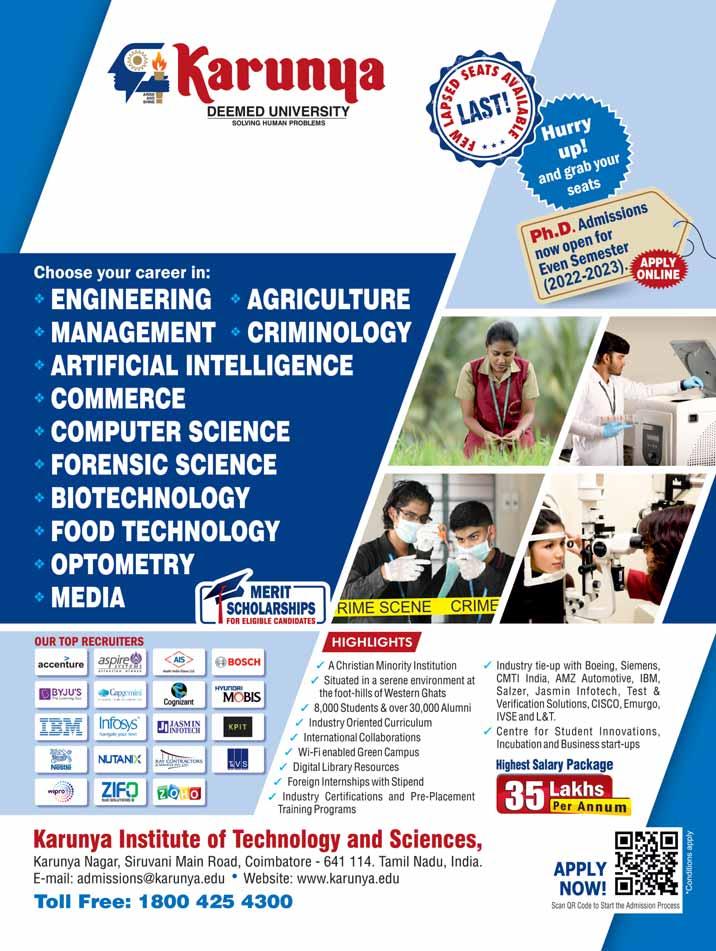
SEASONAL MAGAZINE 65
THE 10 PHRASES TO REPLACE FOR BEING MORE CONFIDENT
KATHY AND ROSS PETRAS ARE THE BROTHER-AND-SISTER CO-AUTHORS OF THE NEW YORK TIMES BESTSELLER ”YOU’RE SAYING IT WRONG,” AS WELL AS ”AWKWORD MOMENTS? AND “THAT DOESN’T MEAN WHAT YOU THINK IT MEANS.” THEY ALSO CO-HOST NPR’S AWARD-WINNING PODCAST ”YOU’RE SAYING IT WRONG.” HERE, THEY TEACH US ALL TO BE MORE CONFIDENT BY REPLACING 11 PHRASES FROM YOUR VOCABULARY.
We all have that little voice in our heads that weighs in on everything we do or say. If we let it, it can make us feel demoralized, belittled or just less capable. The end result is that we wind up not accomplishing what we want. It’s never easy navigating challenging times, but as word experts and hosts of NPR’s awardwinning podcast “You’re Saying It Wrong,” we’ve found ways to reframe our thoughts and change our attitude. Here are 11 negative phrases to ditch if you want to think more positively and feel more confident, according to behavioral scientists, researchers and psychologists.
1. “I CAN’T DO THAT.” WHAT TO SAY INSTEAD: “I CAN TRY TO DO THAT.”
Don’t admit defeat before you’ve begun! When you tell yourself that you can try, you’re not only giving yourself a chance to accomplish something, you’re also not setting up excessively high expectations, which makes it easier to actually succeed.

2. “I SHOULD DO THAT.” WHAT TO SAY INSTEAD: “I WILL DO THAT.” (OR “WON’T DO,” DEPENDING ON YOUR MINDSET).
“Should” is a controlling word, and it puts pressure on us. So put yourself back in charge. Drop the “should” and make yourself the decision-maker by choosing whether or not do something on your own terms.
3. “WHY IS THIS HAPPENING TO ME?” WHAT TO SAY INSTEAD: “WHAT AM I LEARNING FROM THIS?”
When you ask yourself what you’re
learning, you turn something that’s bugging or upsetting you into something that can lead you to better things. You’re not complaining; you’re simply finding the good in what might be a difficult time.
4. “I NEVER SHOULD HAVE.”
WHAT TO SAY INSTEAD: “BECAUSE I DID THAT, I NOW KNOW [X].”
When you rephrase this thought, you begin to think about the good things that happened because you did something that you thought you shouldn’t have. Maybe you met someone you wouldn’t have met, or you discovered something wonderful about yourself.
5. “I FAILED.”
WHAT TO SAY INSTEAD: “THIS ATTEMPT DIDN’T WORK.”
So maybe something you tried to do didn’t turn out the way you expected. You didn’t get that new client, or you didn’t get the promotion you wanted. But if you tell yourself that you failed, end of story, you’re being unfair to yourself. Remember that there will be other opportunities.
6 . “IF ONLY I HAD DONE [X].”
WHAT TO SAY INSTEAD: NOTHING! We’ve all had our “if only” moments. “If only I had spoken up at that meeting withmy idea,” or “If only I hadn’t answered that interview question that
way.” But this is dead-end thinking. You’re not learning from the past, you’re just lamenting and making excuses.
7. “THIS IS TOO COMPLICATED.” WHAT TO SAY INSTEAD: “I DON’T UNDERSTAND THIS RIGHT NOW.”
When you face a new challenge by immediately telling yourself that you’ll never get your mind around it, you’re making it sound like it’s an unchangeable fact. This means you’re subtly telling yourself that you can’t change or grow, which, of course, is nonsense. We are all works in progress.
8. “IT’S NOT FAIR.” WHAT TO SAY INSTEAD: “I CAN DEAL WITH IT ANYWAY!”
Sure, life can feel unfair sometimes, but that doesn’t mean you have to keep repeating that negative mantra to yourself and feel beaten down. Face that perceived unfairness head on and look for solutions that will get you to where you want to be.
9. “IT’S NEVER GOING TO CHANGE.” WHAT TO SAY INSTEAD: “I CAN CHANGE THE WAY I APPROACH THIS.” This is another case of going from passive to active. Put yourself in charge of the situation. You think it can’t change? Then change your approach to it and thoughts about it!
10. “NEVER” (OR “ALWAYS”) WHAT TO SAY INSTEAD: AVOID ABSOLUTES ALTOGETHER!
If you find yourself saying something like, “I’ll never get the promotion I want,” or “I always get overlooked,” take a step back to put things into context. Life isn’t black and white. The most successful people are able to look at things objectively.
SELF-TALK SEASONAL MAGAZINE 66
GRATITUDE
HOW TO BE THANKFUL FOR YOUR LIFE BY CHANGING JUST ONE WORD
James Clear beat both Obamas in a year, which saw their autobiographies being published, to become the world’s best selling author. This article is an excerpt from this book ‘Atomic Habits’, his New York Times bestselling book. James shows how a simple word switch flips your perspective for the better.
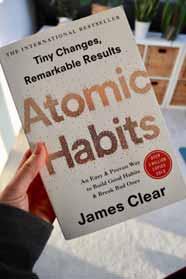
My college strength and conditioning coach, Mark Watts, taught me an important lesson about how to be thankful that applies to life outside of the gym as well as inside it.

As adults, we spend a lot of time talking about all of the things that we have to do. You have to wake up early for work. You have to make another sales call for your business. You have to work out today. You have to write an article. You have to make dinner for your family. You have to go to your son’s game. Now, imagine changing just one word in the sentences above. You don’t “have” to. You “get” to. You get to wake up early for work. You get to make another sales call for your business. You get to cook dinner for your family. By simply changing one word, you shift the way you view each event. You transition from seeing these behaviors as burdens and turn them into
James Clear
opportunities.
The key point is that both versions of reality are true. You have to do those things, and you also get to do them. We can find evidence for whatever mind-set we choose.

I once heard a story about a man who uses a wheelchair. When asked if it was difficult being confined, he responded, “I’m not confined to my wheelchair - I am liberated by it. If it wasn’t for my wheelchair, I would be bed-bound and never able to leave my house.” This shift in perspective completely transformed how he lived each day.
I think it’s important to remind yourself that the things you do each day are not burdens, they are opportunities. So often, the things we view as work are actually the reward.
Embrace your constraints. Fall in love with boredom. Do the work. You don’t have to. You get to.
LODHA VILLA ROYALE, PALAVA IS A RARE CHANCE TO OWN LAND IN MMR: LODHA

Lodha has launched villa plots in Lodha Villa Royale, Palava, sharing that there is an ultimate sense of pride, exclusivity and success in villa ownership. The 250-600 sq yd villa plots lie with a serene lake, tree-lined avenues, wide open spaces, and likeminded neighbourhood of residents who have chosen to live on their own terms, on their own land, it added.
UBER'S CURRENT BUSINESS MODEL ABSOLUTELY UNSUSTAINABLE: WHISTLEBLOWER
Mark MacGann, the whistleblower behind 'The Uber Files' leak, on Wednesday said that the company has taken steps to improve its work culture, but its business model is still "absolutely" unsustainable. In July, MacGann revealed himself as the source who leaked over 124,000 internal files of Uber. Leaked documents showed how Uber secretly lobbied politicians to expand into new markets.
US JUSTICE DEPT PLANS TO PROBE ADOBE'S $20 BN FIGMA DEAL: REPORT
The US Department of Justice is reportedly preparing to launch an investigation into Adobe's $20 billion deal to acquire online design startup Figma. The authorities have been contacting customers and competitors of both companies, Politico reported. "We're engaged in productive discussions with regulators to ensure they have a full understanding of the combination," Adobe said.
SEASONAL MAGAZINE 66 NEWS-IN-FOCUS
CHRISTINE CARTER PhD IS A WRITER, SPEAKER, COACH AND SOCIOLOGIST, AS WELL AS A SENIOR FELLOW AT THE GREATER GOOD SCIENCE CENTER. HERE SHE EXPLAINS A SIMPLE YET PROFOUND IDEA THAT WHY WE NEED TO BE BAD AT ALL GOALS FIRST BEFORE WE CAN BE GOOD AT IT EVENTUALLY. FROM TED’S ‘HOW TO BE A BETTER HUMAN’ SERIES.

When we received the stay-athome order in March 2020I live in California - I came out of the gates pretty darn hot. “Embrace not being so busy,” I wrote. “Take this time at home to get into a new happiness habit.”
That seems hilarious to me now. My prepandemic routines fell apart hard and fast. Some days, I would realize at dinnertime that not only had I not showered or gotten dressed that day, I hadn’t even brushed my teeth. Even though I have coached people for a long time in a very effective, sciencebased method of habit formation, I struggled. Truth be told, for the first few months of the pandemic I more or less refused to follow my own best advice. I think this was because I love to set ambitious goals. Adopting little habits is so much less exciting than embracing a big, juicy goal. Take exercise, for example.
When the pandemic began, I optimistically embraced the idea that I could get back into running outside. I picked a half marathon to train for and spent a week or so meticulously devising a detailed daily training plan. However, I stuck to that plan for only a few weeks - all that planning and preparation led only to a spectacular failure to exercise.
I skipped my training runs despite feeling like the importance of exercise and the good health it brings has never been more bracingly clear. Despite knowing that it would cut my risk of heart disease in half. Despite knowing that exercise radically reduces the probability we’ll get
cancer or diabetes and that it’s as least as effective as prescription medication when it comes to reducing depression and anxiety, that it improves our memory and learning, and that it makes our brains more efficient and more powerful. Why did I skip exercise despite knowing all this?

The truth is our ability to follow through on our intentions - to get into a new habit like exercise or to change our behavior in any way - actually doesn’t depend on the reasons that we might do it or on the depth of our convictions to do it. It also doesn’t depend on our understanding of the benefits of a particular behavior, or even on the strength of our willpower. Instead, it depends on our willingness to be bad at our desired behavior. And I hate being bad at stuff. I’m a “go big or go home” kind of gal. I like being good at things, and I quit exercising because I wasn’t willing to be bad at it.
Here’s why we need to be willing to be bad. Being good requires that our effort and our motivation need to be equivalent. In other words, the harder a thing is for us to do, the more motivation we need to do that thing. And you might have noticed that motivation isn’t something we can always muster on command. Whether we like it or not, motivation comes and motivation goes. When motivation wanes, plenty of research shows that we humans tend to follow the law of the least effort and do the easiest thing.
New behaviors require a lot of effort because change is hard. Change can require a lot of motivation, which we can’t count on having. This is why we often don’t do the things we really intend to do.
To establish an exercise routine, I needed to let myself be bad at it. I needed to stop trying to be an actual athlete. I
STRANGE SEASONAL MAGAZINE 68
CHRISTINE CARTER
started exercising again by running for only one minute at a time - yes, that’s right, 60 seconds. Every morning after I brushed my teeth, I changed out of my pajamas and walked out the door, with my only goal to run for one full minute. These days, I usually run for 15 or 20 minutes at a stretch. But on the days that I’m totally lacking in motivation or time, I still do that one minute. And this minimal effort always turns out to be way better than nothing.
Maybe you relate. Maybe you’ve also failed in one of your attempts to change yourself for the better. Perhaps you want to use less plastic, meditate more or be a better antiracist. Maybe you want to write a book or eat more leafy greens.
I have great news for you: You can do and be those things, starting right now! The sole requirement is that you stop trying to be so good. You’ll need to abandon your grand plans, at least temporarily. You must allow yourself to do something so minuscule that it’s only slightly better than doing nothing at all.
Ask yourself: How can you strip down that thing you’ve been meaning to do into something so easy you could do it every day with barely a thought? So if your big objective is to eat lots of leafy greens, maybe you could start by adding one lettuce leaf to your sandwich at lunch.
Don’t worry: You’ll get to do more. This “better than nothing” behavior isn’t your ultimate goal. But for now, do something ridiculously easy that you can do even when nothing in your life is going as planned.
On those days, doing some wildly unambitious act is better than doing nothing. A one-minute meditation is relaxing and restful. A single leaf of romaine lettuce has a half-gram of fiber and important nutrients. A one-minute walk gets us outside and moving, which our bodies really need. Try doing one better than nothing behavior. See how it goes. Your goal is repetition, not high achievement. Let yourself be mediocre at whatever you are trying to do, but be mediocre every day. Take only one step, but take that step every day.
And if your better than nothing habit doesn’t actually seem better to you than doing nothing, remember that you are getting started at something and that initiating a behavior is often the hardest part.
By getting started, you are establishing a neural pathway in your brain for a new habit. This makes it much more likely that you’ll succeed with something more ambitious down the line. Once you hardwire a habit into your brain, you can do it without thinking and, more importantly, without needing much willpower or effort.
A “better than nothing” habit is easy for you to repeat, again and again, until it’s on autopilot. You can do it even when you aren’t motivated, even when you’re tired, even when you have no time. Once you start acting on autopilot, that’s the golden moment that your habit can begin to expand organically. After a few days of running for one minute, I started feeling a genuine desire to keep running. Not because I felt like I should exercise more or I had to do more to impress people, but because it felt more natural to keep running than it felt to stop.
It can be incredibly tempting, especially for the overachievers, to want to do more than our designated better than nothing habit. So I must warn you: The moment in which you are no longer willing to do something unambitious is the moment in which you risk everything.

The moment you think you should do more is the moment you introduce difficulty. It’s the moment you eliminate the possibility that your activity will be easy and even enjoyable. So it’s also the moment that will require a lot more motivation from you. And if the motivation isn’t there, that’s when you’ll end up checking your phone instead of doing whatever it is you intended to do or you’ll stay on the couch bingewatching TikTok videos or Netflix.
The whole idea behind the better than nothing habit is that it doesn’t depend on motivation. It’s not reliant on having a lot of energy, and you do not have to be good at this. All you need is to be willing to be wildly unambitious - to settle for doing something that’s just a smidge better than nothing.
I’m happy to report that after months of struggle, I am now a runner. I became one by allowing myself to be bad at it. While you couldn’t call me an athletethere are no half marathons in my future - I am consistent.
To paraphrase the Dalai Lama, our goal is not to be better than other people; it’s just to be better than our previous selves. And that I definitely am. It turns out that to grow as people, we need only do something minuscule. When we abandon our grand plans and great ambitions in favor of taking that first teeny-tiny step, we shift. And, paradoxically, it is in that tiny shift that our grand plans and great ambitions are truly born.
SEASONAL MAGAZINE 68
PRIVATEUNIVERSITIES

WORLD CLASS FEATURES OF ICFAI FOUNDATION FOR HIGHER EDUCATION
ICFAI Foundation for Higher Education (IFHE), the flagship deemed University of ICFAI Group at Hyderabad, and its constituents ICFAI Business School (IBS), IcfaiTech, ICFAI Law School and ICFAI School of Architecture, are all setting world class benchmarks in their own spheres. IBS, which had already emerged as a world leader in the creation of business case studies and the case pedagogy based on it, has pioneered the new micro case studies that are revolutionizing the delivery of its online MBA programs now. WiseViews leadership conversation series has been an innovative strategy to educate online MBA students by interactions with distinguished experts. IFHE has also signed an MoU with Andhra Pradesh Medtech Zone (AMTZ) with a mutually fruitful arrangement of furthering PhD programs on one side and business incubation on the other. IFHE is led by renowned leaders in public life and academia. While Dr. C. Rangarajan, renowned economist is the Chancellor of IFHE, Prof. (Dr.) J. Mahender Reddy is its Vice Chancellor and Prof. (Dr.) Bidyut K. Bhattacharyya is the Pro VC. Prof. (Dr.) C.S. Shylajan heads ICFAI Business School as its Dean, Dr KL Narayana is the Director of IcfaiTech, Dr. AVN Rao is the Director of ICFAI Law School and Prof. Ar. Munavar Pasha Mohammad is the Principal of ICFAI School of Architecture.
The ICFAI Group includes 11 Universities, 9 Business Schools, 7 Tech Schools, 7 Law Schools and significant Online and Distance Learning Programs. ICFAI Foundation for Higher Education (IFHE) comprises of five schools - ICFAI Business School, IcfaiTech, ICFAI Law School, ICFAI School of Architecture and the Centre for Distance & Online Education (CDOE) - and delivers undergraduate, postgraduate, doctoral & certificate programs across, management, engineering, science, humanities, law & architecture, by incorporating the latest sunrise specialities in these broad domains, so that its graduates are highly sought after in placements.
The 91 acres of custom built residential campus of IFHE with state-of-the-art classrooms, auditoriums, physical & digital libraries, campus wide wireless broadband connectivity, and 3200 single occupancy rooms for boys and girls separately, is one of the finest campuses in India currently.

ICFAI Business School conducts the IBSAT admission test for all the 9 campuses of IBS across the country. These campuses are at Hyderabad, Mumbai, Gurgaon, Bangalore, Pune, Ahmedabad, Kolkata, Jaipur and Dehradun. Among these campuses, MBA is offered at Hyderabad, Bangalore, Jaipur and Dehradun, while PGPM is offered at Mumbai, Gurgaon, Pune, Ahmedabad and Kolkata.
Shortlisted candidates who have cleared the admission test are called for the selection process which includes Group Discussion & Personal Interview. Final selection and allotment of the campus will be made on the basis of overall performance of the candidates throughout the selection process right from the admission test.
The ICFAI Foundation for Higher Education has been permitted by the Ministry of Education, Govt. of India to start an Off-
IBS Hyderabad
SEASONAL MAGAZINE 70
Campus Center at Bengaluru, Karnataka, and IBS Bengaluru is a constituent of it. For the Academic Year 2022-23, the following programs are being offered under the aegis of IFHE at IBS Bengaluru, Off-campus centre - MBA, BBA, B.Sc (Data Analytics). Starting from the academic year 2023-24, IBS Bengaluru will also offer a doctoral program in Management, leading to PhD degree.
ICFAI has been an early adopter of emerging technologies that facilitate better delivery of higher education. As such, they are keeping a keen watch on emerging digital environments like metaverses, and their enabling technologies like virtual reality, augmented reality and extended reality. The university has been taking the initial steps in deploying these technologies in industry sessions, symposiums, panel discussions and case studies.
Some of these tech led projects have already been executed. It is now expected to move into the corporate training programs and the regular programs. And eventually these are expected to get in all their programs from science and technology, law, architecture and the business school.
Here are the world class features of ICFAI

that make it stand out from peer universities.
WORLD CLASS LEADERSHIP IN CASE STUDIES
IBS is the third largest contributor of business case studies to The Case Centre, a global repository of case studies, next only to Harvard Business School and INSEAD. Today, IBS Cases are taught in more than 900 B-Schools across 80 countries in the world. In 2021, IBS had bagged the Top 3 positions in The Case Centre’s Top 50 best selling case authors list, and there are 7 IBS case authors among this top 50 list. The central force of IBS Case Research Centre (IBS CRC),
which was set up as a Centre of Excellence, was Dr. Debapratim Purkayastha, who had retained the number one position for the sixth consecutive year in 2021. Unfortunately, this ace young researcher and professor of strategy at IBS, succumbed to Covid in May last year, just before his 45th birthday. However, his legacy in case studies goes on through the hundreds of textbooks that carry the business cases he authored.
WORLD CLASS ONLINE MBA OF ICFAI ONLINE
Apart from the well established incampus MBA, ICFAI Online has been conducting its Online MBA program quite successfully. A notable uniqueness of the Online MBA is Micro Learning with Case Methodology which relies on well prepared micro case studies. ICFAI Online developed this keeping in mind the fact that the attention spans of students are far less today than it was a decade back. There is huge competition for the student’s time and motivation. Hence, ICFAI Online has built learning objectives which require between 2 to 15 minutes of time. Students are presented with a micro case followed by a learning point and an activity, These are made in visual and readable forms for learner convenience. Personalization is another unique feature of ICFAI
 ICFAI Law School Hyderabad
ICFAI Law School Hyderabad
SEASONAL MAGAZINE 71
Online MBA. If you are a learner, your experience and your aspiration is personal. Your experience is a unique strength to you. But how do you pitch it towards your aspiration? Using unique methodologies, ICFAI Online relates to your work experience and your aspiration through the conceptual framework that the Online MBA program provides. The practicum that the program provides is a landing point to showcase your proposal for your aspiration based on your identity. The course projects in every course, explore these dimensions from the conceptual framework of the course and provide perspectives and insights which inform the practicum. In a manner of speaking this is active learning as well as action learning. The unique faculty team of ICFAI Online MBA drives the innovative support needed for this initiative. This approach has proven to be a re-imagining of the MBA. The program is therefore not comparable with any other. There are 20+ best practices in learning that have been implemented in the Online MBA.


WORLD CLASS INTERNSHIPS & STARTUP INCUBATION AT ICFAITECH
IcfaiTech, which is IFHE's tech school is graded at 'AAAAA' and ranked 13th among Top Private Engineering Institutes in India. Internship is unique to first degree and higher degree programs offered at IcfaiTech. Internship helps students gain real time work experience and prepares them to face the challenges in professional life. The Internship Program ensures that linkages are developed and sustained with real time industrial units, scientific laboratories, public sector undertakings, manufacturing units and other external organizations. Technology Innovation Center (TIC) at IcfaiTech is offering a parking space for start-ups and Micro, Small & Medium Enterprises (MSMEs) having innovative ideas and which are looking for resources in terms of manpower and infrastructure. It will extend consultancy opportunity for faculty members for mutual benefit of institute and start-up. It is also a platform for students of IcfaiTech to
develop their entrepreneurial skills. Students will have an opportunity to work on real time problems solved by both start-ups and MSMEs.
WORLD CLASS PEDAGOGY IN ARCHITECTURE AT ISARCH
The ICFAI School of Architecture (ISArch), a constituent of IFHE is established in the year 2018. ICFAI School of Architecture offers 5 years (10 semesters) full-time Bachelor of Architecture (B.Arch.) degree Program, approved by the Council of Architecture. ISArch was established with an aim to evolve a center for

 Prof. (Dr.) C.S. Shylajan , Dean, IBS, Hyderabad
Dr. C. Rangarajan, Chancellor IFHEProf. (Dr.) J. Mahender Reddy Vice Chancellor Prof. (Dr.) Bidyut K. Bhattacharyya Pro VC.
Prof. (Dr.) C.S. Shylajan , Dean, IBS, Hyderabad
Dr. C. Rangarajan, Chancellor IFHEProf. (Dr.) J. Mahender Reddy Vice Chancellor Prof. (Dr.) Bidyut K. Bhattacharyya Pro VC.
SEASONAL MAGAZINE 72
LEADERSHIP TEAM
excellence in Architecture, through a unique and wholesome approach in Architectural pedagogy, which is based on bringing together all the courses of architecture to create an exemplary approach to Design. The curriculum is revised regularly as it shall be beneficial to the students who are up to date with the potentialities of the present & the future. ISArch believes in the constancy of change to which students shall be equipped. The design studio is leading all the other activities in an integrative manner, bringing in the capacities of all the subjects to their maximum benefit.
WORLD CLASS LAW EDUCATION FOR TODAY’S CHALLENGES, AT ICFAI LAW SCHOOL


ICFAI Law School is a constituent unit of IFHE which takes up the responsibility of grooming law professionals that today’s legal profession needs - distinctive, wellqualified, analytical, and with academic excellence and practical exposure to address the complex challenges posed by the ever changing business environment. The ICFAI Law School, with its excellent and continuous teaching / learning processes, student centric and industry friendly dynamic curriculum and real life exposure provides best in class, legal education to the student, thus carving them to be market ready legal
professionals. Unique fatures include diversified teaching methodologies, internships, industrial interface and networking with professionals, excellent placements and career oriented training, modern infrastructure facilities and learning environment. The ICFAI Law School offers UG Programs (Five year integrated campus based full time programs), PG Programs (One Year campus based full time programs) and Doctoral Program (Full time and Parttime programs) and Certificate Programs. All the UG programs offered by the ICFAI Law School are approved by the Bar Council of India and other programs are in accordance with the UGC norms.
WORLD CLASS PHYSICAL & DIGITAL INFRASTRUCTURE
Campus infrastructure, both physical and digital, are already facets in which IFHE has always been among the very best in India, if not Asia or the world. The 91 acre custom-built and eco-friendly campus is in the city of Hyderabad itself. All classrooms are networked and fitted with audio visual tools to enhance the teachinglearning experience, with lecture theatres and classrooms designed to facilitate the case pedagogy, which is the key strength of IBS. Seamless internet facility (150 MBPS) is
available across the campus, with the complete campus area covered under the umbrella of Wi-Fi network, on which students get connected to the internal network and internet on their laptop inside and outside the classroom and lab as well as in hostels. Video conferencing facility is available and extensively used by prospective employers for placements. The Campus Central library has a collection of 75,582 books and documents, and there are separate libraries in the Faculty of Science & Technology and the Faculty of Law. Library is fully supported by IT infrastructure, and has subscribed to several renowned online academic databases like EBSCO HOST, Econlit, Emerald Management Xtra, ProQuest, JSTOR, Science Director (Elsevier), Cabell's directory, the World Development Indicators, CMIE
IcfaiTech Hyderabad
Dr. K L Narayana, Director, IcfaiTech, Hyderabad
SEASONAL MAGAZINE 73
databases, Capitaline, business and research oriented databases like Reuters, Business Insights and Marketline. IFHE has subscribed to 46 International Journals and 62 National Journals, and access is also enabled to 5000+ Journals through the databases.
WORLD CLASS RESIDENTIAL FACILITIES

The University is a fully residential campus with 2000 single seated rooms for boys and 1200 single seated rooms for girls. The campus is equipped with all supporting facilities like well equipped dining halls, indoor sports facilities (for Badminton, TT, Squash), outdoor sports grounds (for tennis, football, cricket, basketball, swimming pool), and fitness and recreation facilities (like Gym and cultural clubs). The residential facilities are managed by a dedicated team of full time wardens, estate manager and other staff. The clubs are managed by the students' services department and faculty. The University has its own transport facility, round the clock clinic with
beds and 4 doctors, nurses and 2 ambulances. The auditorium has features like step sitting arrangements, while the hall has a seating capacity of 300 people. There is also an Open Air Quadrilateral which has a stage and seating arrangements for conducting various activities.
WORLD CLASS INTERNSHIPS & MENTORING
IFHE takes industrial internships quite seriously. For instance, the entire student education during the Internship Programs is supervised or mentored by the assigned faculty and forms a part of the students’ total credits toward their degree. The internship programs require that the students undergo the rigors of the professional world in form as well as in substance, and provide them with an opportunity to apply their classroom knowledge to live situations. The Internship Program will be of five and a half months duration, implemented in either the VII Semester or the VIII Semester, during the final year. There are several
benefits to the students from these programs which include the opportunity to work on real-life problems in actual working conditions, development of useful work-related skills, enhanced placement opportunities and opportunity to earn while they learn. In recent years, students of the University have interned at Tata Motors, Tech Mahindra, General Motors, Polaris, Qualcomm, CDAC, CMC, DRDO, IIT Hyderabad, NCC Urban, NIC, Nuclear Fuel Complex, Ramky, Schneider Electric, Virtusa and many more similar as well as smaller organizations too which are however leaders in their niches.
 Dr. AVN Rao, Director, ICFAI Law School, Hyderabad
Dr. AVN Rao, Director, ICFAI Law School, Hyderabad
SEASONAL MAGAZINE 74
SRM GROUP ACHIEVES WORLD CLASS PLACEMENTS, TOP OFFER OF RS.1 CRORE FROM AMAZON, GERMANY

SRM Institute of Science & Technology (SRMIST), the flagship deemed university of SRM Group of Universities, has created a record among all private and deemed universities in India, when one of its final year engineering students was offered a Rs.1 crore per annum CTC package recently by Amazon, Germany. SRMIST has also shown tremendous growth in the overall placement metrics, both in quantity as well as quality of the offers. Around 1050 companies have visited SRMIST campuses this season and successfully placed over 10,000 SRM students this placement season. And the numbers will rise more as the placement season is still continuing at SRM. This is an accelerating growth as last year the total placements were around 8000 students and in the year before it was around 7000. Quality of placements is also on a sharp upswing. During this season, over 4000 students have got Super Dream Offers (of Rs.10 Lakh+), and Dream Offers
(of Rs.5 Lakh+) and so far there have been over 5200 unique offers. Top recruiters this year include Amazon, Google, Morgan Stanley, Toyota, Ernst & Young GDS, Deloitte, JP Morgan, TCS, Wipro, Cognizant, Capgemini, Honda R&D, IBM, Fidelity, Barclays, Walmart, John Deere, Philips, Bank Of America, Siemens, Hitachi, Air Asia, MediaTek, KPMG, Loreal and more. There was a sharp increase of 30-40% in the number of students getting placed in the above 10 Lakhs per annum category, as compared to the previous years. In the most lucrative CS/IT category, SRMIST almost touched an average of 9.5 LPA, with most of the students preferring high paying product companies. Without doubt, the campus placements at SRMIST and its other universities like SRM-AP are turning world-class, thanks to the world-class best practices they follow in selecting & training faculty, furthering research, and developing state-of-the-art academic infrastructure both physical and digital.
SEASONAL MAGAZINE 75 PRIVATE R UNIVERSITIES
When young Puranjay Mohan was asked how he could set a record among all private & deemed universities by bagging the highest ever Rs. 1 crore package from Amazon Germany, he credited it to the updated curriculum followed at SRMIST. According to this brilliant young achiever, in most universities and engineering colleges there is a big gap between what they study and what they are expected to do at the workplace, but over here at SRMIST he says he has not felt that gap at all, as this final year student is raring to go and prove himself at Amazon Germany, his recruiter from day one onward.
He has been offered a Software Development Role (in Embedded Systems as a Linux Kernel Developer) with a whopping CTC of Rs. 1 crore per annum. This high profile achievement was announced by none other than SRMIST’s Founder Chancellor Dr. TR Paarivendhar, who is also a Member of Parliament, at a press meet held at Ramada Plaza Chennai, recently. Also present during the announcement were Pro Chancellor (Academics) Dr. P. Sathyanarayanan, Vice Chancellor Dr. C. Muthamizhchelvan, Registrar Dr. S. Ponnusamy and Director (Career Centre) Mr. Venkata Sastry.
Honouring Puranjay with the Illustrious Student Award, Dr. TR Paarivendhar said, “Puranjay will be a role model for others. He is not only an exemplary student, but what is unique about him is that he is not from the Computer Science or IT branches but from
Electronics and Instrumentation.” Dr. P. Sathyanarayanan added that, “Last year, two of our students were placed for Rs.50 lakhs each and this year the highest offer is Rs.1 Crore. It is a very proud moment for SRMIST. This is the highest offer made in any private university in India.”
How does SRMIST, SRM-AP and other SRM campuses achieve such placement success? Much of this achievement is due to the kind of world-class exposure that SRM campuses give to its students. Ever heard of Materials Genome? It is the cutting-edge of materials science, in which the varied and minute aspects of functional or engineering materials are described conceptually like in the genomic structure used in biology. This throws open interesting possibilities like the accelerated, automated & iterative development of new functional and specialized materials using Artificial Intelligence technologies like machine learning! This is dizzying stuff for even some of the world’s finest universities. Recently, over one hundred scientists and professors from sixteen countries came together to discuss and analyze the developments in this sector in an international conference on materials genome. But it was not hosted by MIT or Harvard, but a private university in Andhra Pradesh - SRM University at Amaravati!
In India, it is never easy for a private sector higher education group to be taken as seriously by students, teachers & recruiters, like how they view the
world’s top-class institutions. But that is what SRM Group has now achieved with its deemed and private universities, with feats like the recent materials genome conference. As another example, consider what some SRM engineering students achieved recently. Even while large 2-wheeler manufacturers - both traditional brands and startup firms - were scrambling to create viable electric vehicles, these SRM students went on to develop an electric bike by leveraging the university’s tie-up with a leading battery manufacturer. The students develop such ambition as the university is forever keeping them abreast with the latest technological breakthroughs in every field!
SRM’s Distinguished Lecture Series is a prime example for this, which has seen participation frrom IITs, NITs, IISERs, leading domestic & overseas universities, CSIR, DST, DBT, DRDO, DAE, ISRO, NARL, MoES etc. Recently, the 14th edition of this Lecture Series saw a highly knowledgeable talk from Dr Chennupati Jagadish, distinguished professor in Physics in the Research School of Physics and Engineering at the Australian National University. He addressed the students on 'Semiconductor Nanostructures for Optoelectronics Applications'.

At the same time, SRM takes care to inculcate compassionate values in its students as well as projects. Assisted by a noted external organization, SRM has initiated a Thought Lab itself for imparting value education to students, who in turn go on to do many charitable activities to the economically challenged communities around them, like distributing winter wear. The Group’s foundation and its medical college hospital also excel in philanthropic initiatives like its recent health card which provides discounts for the needy sections of the population.
SRM Group of Universities are growing and spreading their great roots into the communities and industries around them. Its flagship deemed university, SRM Institute of Science & Technology (SRMIST), near Chennai, continues to be a powerhouse in engineering and medical education and research, with its number one position in placements.
SRMIST’s medical wing, SRM Medical College Hospital & Research Centre (SRM MCH&RC) had become
SEASONAL MAGAZINE 76
Founder Chancellor of SRMIST Dr. T. R. Paarivendhar presents the Illustrious Student Award to Mr. Puranjay Mohan. Also seen are (L-R) Director (Career Centre) Mr. Venkata Sastry, Vice Chancellor Dr. C. Muthamizhchelvan, Pro Chancellor (Academics) Dr. P. Sathyanarayanan and Registrar Dr. S. Ponnusamy at the press meet held at Ramada Plaza Chennai, Guindy.
internationally renowned as one of the select few centres for Covaxin trials. It has also entered into several tie-ups with pharma majors.
The Group’s newest university, SRM University, Andhra Pradesh, is also scaling similar or even greater heights by achieving 100% placements for its maiden batch itself, and by starting two Centres of Excellence with industry majors like Titan’s Tanishq Division and Amara Raja Batteries. No wonder then that SRM is getting tie-ups and recognitions from the likes of Harvard & Stanford.
Stanford University needs no introduction, and when Stanford speaks, the world listens. Such has been the overall achievement level of this institution that, even while it is not part of the Ivy League, it boasts of real-world achievements that span not only academia and research, but the startup ecosystem. Stanford is indeed the cradle where some of the world’s greatest tech businesses were born. Stanford University had recently selected the top 2% of the world’s scientists in various sunrise fields including energy, biotechnology etc.
Only 91 scientists were chosen worldwide for their research achievements in biotechnology, and Dr. Imran Pancha of SRM University, AP, was one among them. Dr. Pancha is a professor of SRM-AP’s Department of Biological Sciences, and had won this selection in 2020 too.



Similarly, when Stanford selected 178 scientists as the top 2% of researchers excelling in energy and related fields, SRM University, AP, had two reasons to smile. Dr Karthik Rajendran and Dr Lakhveer Singh both from SRM-AP’s Department of Environmental Science made the rare cut. This goes on to say much about the diligence with which the SRM management and Vice-
Chancellor Prof. VS Rao has been choosing faculty for this most promising new private university in the Indian landscape. Prof. Rao himself is a distinguished researcher who made his mark in US and elsewhere, and made sure that 100% of faculty at SRM-AP should be PhD holders to start with.
With such worldclass brains to teach and mentor students, it is no wonder really that SRM University, AP, is going great guns in placements too. While most private universities would struggle to place their first batches, SRM-AP had no issue recently in placing 100% of its students in its very first batch. The maiden convocation for BTech students of SRM-AP was an unforgettable event that was simultaneously conducted physically and online, with renowned international figures like New York University’s President Prof. Andrew D Hamilton, and Dr. Sethuraman Panchanathan, Director of the US National Science Foundation (NSF) gracing the high-voltage event.
The first batch of BTech students has received 100 percent placement with an average salary of Rs 7 Lakh per annum, which is a commendable record when compared to peers. The highest offers were for two Computer Science & Engineering students by PVP Inc., Japan, for Rs. 50 lakh per annum. And it was not only about career placements. SRMAP students also excelled in academic placements, with as many as 24 students

opting for higher studies in top universities including University of Michigan, New York University, Georgia Tech, and King's College London (Madison Campus).
The SRM Andhra Pradesh Convocation was also attended by Chancellor Dr T R Paarivendhar, and President Dr P Sathyanarayanan. These leaders have come to exemplify the unique vision behind SRM University, AP, as well as the other older and larger institutions in their stable, especially SRM Institute of Science & Technology (SRMIST), a deemed university near Chennai with multiple campuses, which was earlier named SRM University.
SRMIST has been achieving high volume of placements year after year, and that is why when the SRM Group started a new university in Andhra Pradesh, it was armed with a wealth of experience on how to train and groom students to be fit enough to be chosen by world-class Indian and multinational companies. However, being a greenfield project, SRM-AP also brings in several new innovations by itself to emerge as one of the top universities in the world.
For instance, during the last 3 years, SRM-AP faculty members have published over 700 research papers in scopus indexed journals such as Nature, Nature Communications and other such reputed research publications. Despite its young age, SRM-AP is a powerhouse
Dr Imran Pancha
Dr Karthik Rajendran
SEASONAL MAGAZINE 77
Dr Lakhveer Singh
in research achievements. The faculty is already working on 42 funded research projects with an outlay of Rs 20.13 crores funded by the Indian government and various industry giants. 42 patents have been filed, 32 published and three granted in the past 3 years symbolizing the momentum and brilliance of research here. This year alone faculty from the Engineering and Science departments have been granted six DST SERB projects and Ramanujan fellowships.
The university has also signed agreements with various educational institutions, research and industrial establishments in India and across the world. These include Harvard Business School Online, Australia’s Lindus University, Taiwan’s Asia University, CSIR’s Indian Institute of Chemical Technology (CSIR-IICT). With IICT, the university has plans to pursue frontline chemicals research. SRM University, AP, has also tied up for niche knowledge transfer with Titan’s Tanishq division and Amara Raja Batteries.

Healthcare is one field were SRM Group continues to make great inroads. SRMIST is home to a world-class medical college and its teaching hospital, SRM Medical College Hospital and Research Centre (SRM MCH&RC). Recently, the School of Public Health (SPH) at SRM Institute of Science and Technology (SRMIST), Kattankulathur, celebrated the successful completion and dissemination of the key findings of the National Family Health Survey (NFHS5) for the state of Tamil Nadu and Puducherry at (SRM MCH&RC).
NFHS-5, the fifth in the NFHS rounds, provides information on population, health, and nutrition for India and each of its states/union territories (UT) and also provides data at the district Level. NFHS5 includes some new topics, such as preschool education, disability, access to a toilet facility, death registration, menstrual hygiene etc. The scope of clinical, anthropometric, and biochemical testing (CAB) has also been extended to include measurement of waist and hip circumferences and the age range for the measurement of blood pressure and blood glucose has been expanded.
The SRM Group continues to push its research initiatives in all domains, and especially in the medical field. SRM Institute of Science and Technology (SRMIST), through its Faculty of Medical & Health Sciences had recently set up a
5000 square feet Research Facility in SRM called the ‘Centre for Clinical Trials & Research’. This world-class facility is located at SRM Medical College Hospital and Research Centre (SRM MCH&RC), and will function as a clinical trial research center capable of handling clinical trials of drugs, vaccines, and medical devices.
The facility has two wards with 12 beds and several rooms for sample collection, processing, data documentation, and monitoring. It has state-of-the-art equipment for preserving serum samples at -80 degrees Celsius and -20 degrees Celsius deep freezers, high-speed centrifuge, facilities for electronic data capture with high-speed internet, thermohygrometers, and data security is maintained with controlled access.
With such new infrastructure in place, SRM MCH&RC which has already come in 46th position in research, is likely to better its ranking. Students and faculty can do any type of clinical trials at this centre like the recent COVAXIN trial done here. The hospital was earlier awarded the clinical trial of COVAXIN, and for that there was a requirement for a virology lab, which was met by SRM itself by developing a world-class lab that was done entirely in-house.
The SRM Centre for Clinical Trials & Research is headed by Professor of Pharmacology Dr. Satyajit Mohapatra, and supported by a team of investigators from all major branches of medicine including Clinical Pharmacology, General Medicine, General Surgery, Obstetrics & Gynecology, Pediatrics, Cardiology, Pulmonary Medicine, Nephrology, Anesthesia & Critical Medicine, Dermatology etc. The same team had earlier successfully conducted the COVAXIN Clinical Trials (Phase 1, 2 and 3), making SRM MCH&RC the
only hospital in Tamil Nadu which successfully undertook it.
During the last ten years when SRM MCH&RC started focusing more on research, over 35 sponsored and academic clinical trials have been done here. Grants have been obtained from various funding agencies such as ICMR, BIRAC, DBT, DHR-ICMR National, and International Pharmaceutical companies such as Sanofi-GSK, Genova Pharmaceuticals etc to carry out these research activities.
The competency-based MBBS curriculum being followed at present in SRM MCH&RC gives the student exposure to Clinical Research in the prefinal year. Students can choose it as an elective subject, and they get exposure to the current Clinical Research and Trials in this Centre.
And it is not only in medicine, but in all fields including engineering and material science that SRM Group of Universities are making great R&D strides. Recently, two Centres of Excellence was started at SRM University, AP, which was inaugurated by Dr. VK Saraswat, Member, Niti Aayog. Established to promote translational research, the first one is SRM Amara Raja Centre for Energy Storage Devices, which has been set up in collaboration with Amara Raja Batteries Limited, Tirupati, with the objective of application-oriented research in renewable energy and emobility.
The second CoEx is the Centre for Pioneering Studies in Gold & Silver, which is a flagship R&D project with Titan Company Ltd (Tanishq Division) to develop novel gold alloy for contemporary jewellery design. The centre also aims to work on projects in collaboration with Waman Hari Pethe & Sons, Mumbai, and other jewellery manufacturers across India to produce high strength 22 Karat gold and to develop tarnish free silver alloys.
During his visit, Dr. Saraswat also proposed to develop a Value Addition Centre in SRM University-AP to promote translational research. The centre would be strengthening the relationship between industry and academia to work on product engineering to deliver market relevant products.
With several such initiatives in place, it is no wonder why deemed and private universities from the SRM stable are already making waves in world-class placements for its students.
SEASONAL MAGAZINE 78
PRIVATE R UNIVERSITIES
KIIT TO ACHIEVE 100% PLACEMENT SOON
ODISHA BASED KALINGA INSTITUTE OF INDUSTRIAL TECHNOLOGY (KIIT) IS ALL SET TO ACHIEVE 100% PLACEMENTS FOR ITS 2022 BTECH BATCH. FOUNDED BY THE NOTED EDUCATIONIST, PHILANTHROPIST, SOCIAL WORKER AND LOK SABHA MEMBER, PROF. ACHYUTA SAMANTA, KIIT IS NOW LEAVING NO REASON FOR STUDENTS FROM ODISHA TO GO OUTSIDE THE STATE FOR THEIR HIGHER STUDIES.
hen the latest round of placements for this ongoing academic year was completed, the leading deemed-to-be-university has landed placements for 3000 eligible students of the current BTech batch, out of a batch size of 3500 students. What is more, multiple offers have been raining on KIIT students, despite this being a most difficult academic year due to the pandemic’s unprecedented second wave and the suddenly erupting invasion of Ukraine by Russia. These 3000 students have bagged over 4200 job offers, even under this scenario.
The Bhubaneswar headquartered KIIT had begun its first round of placements in May 2021, with the ‘Day One’ numbers from four major MNC firms alone amounting to over 2000 offers. This had marked a major breakthrough for KIIT as unlike its peers based in metro cities, the university had to battle the image of being housed in a relatively economically backward state of the country.
The deemed university’s placement performance this year, by way of quantity and quality, since that momentous Day One, shows that it

has successfully broken that mould and that it is giving BTech aspirants of Odisha no more reason to go searching for a university outside the state at a much higher cost.
For instance, the average CTC in this year’s placements is Rs. 6.05 lakhs per annum, which is a 30% growth over the average CTC last year. Out of the 3000 students who already bagged placement offers, 1500 students have obtained it from Tier 1 or ‘Dream Companies’ with an average CTC of Rs. 8.10 lakh per annum.
KIIT also proved that it is attracting topnotch talents, when five of the students in this batch obtained the highest CTC of Rs. 52 lakh per annum, which is comparable to the best institutions in the country. Thirty-five companies also offered above average CTC of Rs. 10.00 lakh or above per annum, to get such high quality recruits trained to perfection at KIIT.
The faculty of KIIT has also been an inspiration for these students to outperform. While various KIIT faculty routinely end up as newsmakers, two innovations by Prof. Biswaranjan Acharya of the School of Computer Engineering deserve a special mention.
The young Prof. Acharya has successfully created an advanced wearable biomedical device that takes multiple automatic inputs from the user via sensors to assess the stress and anxiety level of its users, and suggest remedial measures like engaging them in soothing talk or notifying some friends or relatives!
This invention is likely to bag an international patent, much like Prof. Acharya’s earlier invention of a hightech glove for visually impaired people that helps them to detect and navigate obstacles around them, which had bagged a patent from the Australian Government. With such exceptional faculty to inspire, it is no wonder that KIIT students are performing well in the real world too, for which the acid test is campus placements.
Assisting KIIT Founder Prof. Achyuta Samanta in the exemplary running of this deemed university are Prof. Sasmita Samanta, Vice-Chancellor, and Prof. Saranjit Singh, Pro-ViceChancellor.

SEASONAL MAGAZINE 79
WHY SATHYABAMA IS IN A WORLD CLASS LEAGUE

he world’s best universities are outpacing the rest of the pack on two key domains - research projects and startup incubation. Chennai based Sathyabama Institute of Science & Technology, a leading deemed-to-be-university in the country, has followed this cutting-edge path to emerge in this world class league of universities. In the research domain, Sathyabama has more than 10,000 publications indexed so far in Scopus with a high H Index of 72 and around 5,000 publications in Web of Science with a respectable H Index of 62. The university also has over 250 sponsored research projects, which are worth Rs. 100 crores. Sathyabama is also highly active in applied research, with more than 500 patents filed, over
100 patents published, over 90 patents granted and 10 patents having successfully undergone technology transfer. Sathyabama also has impressive achievements in the startup domain. Nearly two dozen student startups have been incubated at Sathyabama campus so far. These startups have been partially funded by the university and span diverse domains. The credit for Sathyabama’s elevation to a world class league goes to Sathyabama's three decades rich pedigree, being founded by (Late) Col. Dr. Jeppiar who was a successful politician, bureaucrat, entrepreneur, industrialist and edupreneur. This heritage is giving Chancellor Dr. Mariazeena Johnson and President Dr. Marie Johnson the power and creativity to overcome every hindrance and emerge on the world stage.

SEASONAL MAGAZINE 80 PRIVATE R UNIVERSITIES
Sathyabama fares well in campus placements with over 90% of students getting placed each year. More than 350 companies recruit from Sathyabama campus now and the university classifies its recruiters as Dream Recruiters and Super Dream Recruiters, and as of now there are 100 plus companies in the Dream category and over 25 companies in the Super Dream category. In the year 2020-2021, 91.6% of the students had been placed across 257 companies. Some of the recruiters include the international heavyweights, Amazon, Oracle, Microsoft, Siemens, Capgemini, Cognizant, TCS and Wipro,“ “Admissions to various courses are now open at Sathyabama Institute of Science & Technology. These include graduate, post graduate and research courses in engineering, architecture, management, arts & science, law, dental, pharmacy & nursing. Admissions will be through the two-phase SAEEE 2022 Examination to which candidates can now apply with the tests scheduled for late April and early May.““In the latest Convocation by

Sathyabama, over 3,000 students, including 2,892 undergraduates, 386 postgraduate students; 144 PhD scholars, and 10 diploma students from pharmacy, received their degrees. The medals and certificates, including 24 gold medals, were distributed by A Rajarajan, Director of Satish Dhawan Space Centre.““Like a true university destined for greatness, Sathyabama has a strong focus on all dimensions that matter, including state-of-the-art digital delivery of academics, premium physical infrastructure, faculty quality, updated curriculum, industry tie-ups, campus placements and applied research. Thanks to such overall performance, this private sector deemed university is today a leader in diverse courses spanning engineering, management, science, pharmacy, dental and other such professional domains.““Choosing a wellestablished university like Sathyabama is important for students in this challenging year as too many things are remaining fluid due to the ongoing war in Ukraine. Sathyabama was ranked at the 39th position among Universities in India by NIRF, Government of India, for the year 2020. The stability of academics and operations at Sathyabama is evident from the fact that it has been ranked among the Top 50 Universities for the fifth consecutive year.““Impressively, apart from students in the engineering stream, placements are also bagged by students in architecture, dental, management, arts and science streams. The university’s success in placements owe a lot to its rigorous approach that includes Online Practice and Assessments, Training Modules including Quants, Verbal, Reasoning, Technical, Soft Skills, Certification Programs, Career Development Programs and Value Added Skill Developments. Training attendance should be at least 90%, and the university arranges for even off-campus interviews after the end of final semester.““In tune with the times, Sathyabama is also highly active in the startup domain. About two dozen student startups have been incubated at Sathyabama campuses so far. These startups have been partially funded by
Sathyabama and spans products & solutions in technology, healthcare, defence, transportation, farming, drones, wastewater treatment, automotive, shielding materials, wearables for Covid patients, seaweed based cosmetics, shrimp supplements, e-waste management, air detoxifiers and more. ““The university is also highly active in the research field, especially in applied research, with more than 500 patents filed, over 100 patents published, over 90 patents granted and 10 patents having successfully undergone technology transfer.““Sathyabama has over 250 sponsored research projects, which are worth Rs. 100 crores. The university has more than 10000 publications indexed in Scopus with an H Index of 72 and around 5000 publications in Web of Science with an H Index of 62.““Sathyabama is home to a Technology Business Incubator (TBI), set up in assistance with National Science & Technology Entrepreneurship Development Board (NSTEDB), a nodal body coming under Government of India’s Department of Science & Technology (DST). This TBI follows best practices by which all student proposals for a startup are scrutinized by an expert committee, followed by presentation of the shortlisted proposals.““These future entrepreneurs are also trained to share their concept in five minutes to potential investors, partners and customers. The TBI at Sathyabama provides free incubation support to potential startups and helps them to accelerate towards angel investors. There is also an active Entrepreneurship Development Club working in the campus that conducts workshops regarding various steps in starting a business. Such workshops are led by leaders from the industry, especially from the startup world.““There was a time when higher education curriculum, even in engineering and management, was required to be updated every decade or so. But when the pace of technological developments accelerated, many engineering colleges and business schools started updating their curricula every few years. But even this has proved to be inadequate as disruptive
SEASONAL MAGAZINE 81
WHY SATHYABAMA IS IN A WORLD CLASS LEAGUE

technologies and innovations appear every quarter or so.““Sathyabama University has effectively tackled this challenge through various measures like industrial collaboration and certification programs. The deemed university has tied up with industry majors including Infosys, Cognizant, Wipro, HCL, Capgemini, Accenture, and more such companies to remain abreast of the latest trends in the industry and thus update their curricula whenever necessary.““Sathyabama is also a leader in delivering certification programs in emerging domains and delivers around two dozen such courses in areas like Cloud Computing, Machine Learning & Artificial Intelligence, Internet of Things (IoT), Data Science & Big Data, App Development, Embedded Systems & Robotics, Cyber Security & Forensics, Aircraft & Ground Maintenance etc. Sathyabama is one of the handful of deemed universities to have obtained approval for starting new vocational degrees BVoc and MVoc in domains like software
development, hardware & networking, web technologies etc.““Sathyabama has emerged as a strong player in research programs, having undertaken research work for various central government organizations and has proved it mettle in entrepreneurial class projects by creating its own satellite that was launched by ISRO making it the first university to achieve that feat, a few years back. Sathyabama has significant initiatives in both applied and basic research. During the last five years, faculty and researchers at Sathyabama have been undertaking research for various government agencies with supporting grants.““These organizations include cutting-edge organizations like Indian Space Research Organization (ISRO), Department of Science & Technology (DST), National Atmospheric Research Laboratory (NARL), Science & Engineering Research Board (SERB), Natural Resources Data Management System (NRDMS), National Institute of Wind Energy (NIWE), Defence Research and Development Organization (DRDO), Combat Vehicles Research and Development Establishment (CVRDE),
Board Of Research In Nuclear Sciences (BRNS), Indian Council of Agricultural Research (ICAR), and Indian Council of Medical Research (ICMR), among many such organizations. Sathyabama has also launched a next generation laboratory in the campus, which will further boost research facilities in the university.““Sathyabama is structured as 10 broad schools, including 5 in engineering and one each for business, law, science/humanities, pharmacy, & dental. Sathyabama’s engineering schools are School of Computing, School of Electrical & Electronics, School of Mechanical, School of Bio & Chemical, and School of Building & Environment. However, these five broad schools deliver 15 engineering degrees including in emerging areas like Mechatronics at the graduate level, while at the post graduate level there are 12 courses including in latest domains like Internet of Things (IoT), Medical Biotechnology, Artificial Intelligence etc.““Sathyabama’s School of Science & Humanities similarly delivers 13 graduate programs including in buzzing domains like visual communication, Interior Design and 6 post graduate
SEASONAL MAGAZINE 82
programs including sunrise sectors like data science, Robotics, Material Science. Research programs are also offered in most domains. Combining these with Sathyabama’s School of Management and School of Law, there is clearly the potential for interdisciplinary work, and students stand to distinctly benefit from this breadth of courses.““Sathyabama had rapidly deployed an impressive digital infrastructure as soon as the first wave began and this resulted in academic delivery with not much disruption. The university has been awarded with E Lead (E - Learning Excellence for Academic Digitization) Certification for exhibiting excellence
in adopting ICT enabled Teaching and learning through online platforms, by QS.““Sathyabama sprawling campus is noted not only for its impressive infrastructure but for the well-planned systems that make the whole Sathyabama team, consisting of faculty, students and support staff, work with clockwork precision and effectiveness.“


“It is in academic infrastructure that Sathyabama shines even more as no expense has been spared to ensure that its students get the best of classrooms, labs, libraries and auditoriums. The classrooms are spacious and modern with excellent student seating and facilities, and are provided with LCD projectors and smart boards. The lab
facilities starting from the first year of all courses through to the final years are all modern and without cutting any corners. For instance the School of Computing’s multiple lab facilities include network programming lab, computer graphics and multimedia lab, digital signal processing lab, VLSI simulation and system design lab, linear integrated circuits lab, microprocessor and microcontroller lab, production drawing and cost estimation lab, cluster computing lab etc.““Science labs are also comprehensive, including biochemistry lab and plant cell and tissue culture lab. The internet infrastructure is also impressive with a dedicated Internet Leased line of 155 Mbps and a redundancy link of 100 Mbps, connected to all the terminals throughout the campus. Students and faculty are free to access internet over Wi-Fi from locations like library, hostels etc.““Sathyabama is accredited by UGC’s National Assessment & Accreditation Council (NAAC) at Grade A. And unlike some of its peers, Sathyabama is also approved by All India Council for Technical Education (AICTE). Sathyabama has put up a consistent performance all through its history, and especially so during the last few years.““Sathyabama has been featured in the prestigious international rating by Quacquarelli Symonds (QS), and has bagged an overall 4-Star QS Rating, with 5-Stars for three criteria –Teaching, Facilities & Inclusiveness –and 4-Stars for Employability and Innovation. Sathyabama has been awarded with Diamond rating by QS IGUAGE for overall excellence, the rating for Indian universities by QS. ““Sathyabama is also ranked among top universities in the world by Times Higher Education under the category World Ranking, Asia Ranking and Ranking by Subjects. The university has also been ranked in a notable position among World Universities by Times Higher Education Impact Ranking for its contribution towards Sustainable Development.
SEASONAL MAGAZINE 83
WORLD CLASS ACHIEVEMENTS, IMPACTFUL SOCIAL OUTREACH
Nitte Deemed University, near Mangaluru, is making its presence felt across the world. While Nitte alumni have already marked their presence on the global stage as renowned doctors and medical researchers, the university itself has been making waves on the international arena. It has recently become one among the only 8 universities in India to be ranked in the Top 300 World Universities Rankings by UK based Times Higher Education, based on UN’s Sustainable Development Goals. Nitte University students have been winning national level technology competitions in aerospace technologies and creating 3D Printed Robots. MNC and national recruiters from Nitte Campus include Mercedes Benz, Toyota Kirloskar Motors, Hitachi, ABB Power Grids, Juniper Networks, Intel, Novo Nordisk, L&T Technology Services, Syngene International, JSW, Prestige Construction, JK Cement etc. N Vinaya Hegde, Chancellor, and Vishal Hegde, Pro Chancellor (Administration) are heading an elite team of academicians and administrators at Nitte Deemed to be University, with a clear vision of shining at not just the national level, but at the international league.
K S Hegde Medical Academy
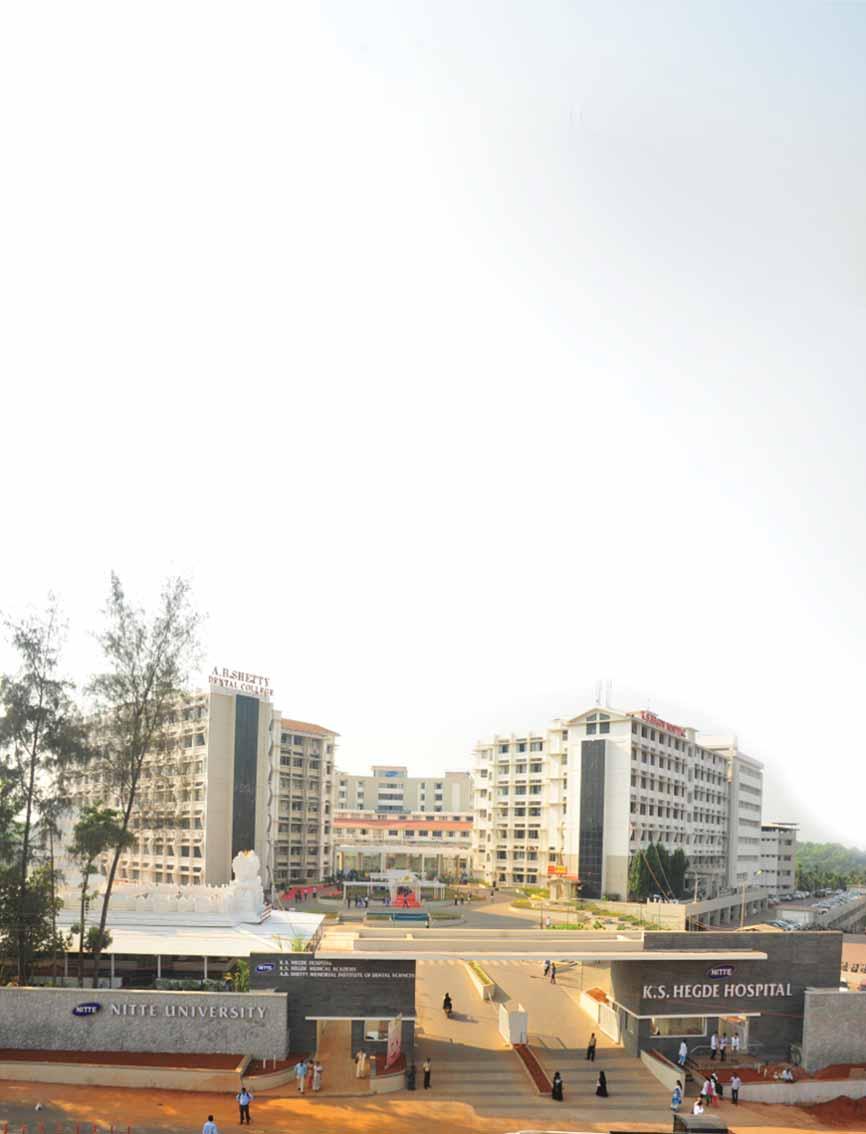
NITTE DEEMED UNIVERSITY SEASONAL MAGAZINE 84 PRIVATE R UNIVERSITIES
When this year’s National Institutional Ranking Framework (NIRF) results were published, Nitte Deemed-to-be University had much to cheer. This leading private sector university headquartered near Mangaluru moved up two ranks, compared to last year, to secure the 75th position on an all India basis. NIRF rankings are released annually by the Ministry of Education based on teaching, learning, research, resources and several such core criteria.

However, some of the constituent colleges of Nitte University fared even better in the NIRF 2022 rankings. For instance, Nitte Gulabi Shetty Memorial Institute of Pharmaceutical Sciences (NGSMIPS), has obtained 45th rank nationally in NIRF 2022. NGSMIPS, which is recognized by the Pharmacy Council of India and All India Council for Technical Education, has been making rapid strides in delivering world-class pharmacy education in India. Apart from shaping competent pharmacy professionals, empowered to face challenges with integrity, NGSMIPS also takes care to groom them in social responsibilities.

An even brighter limelight was hogged by Nitte's AB Shetty Memorial Institute of Dental Sciences, which received the 6th Rank in NIRF 2022, retaining its position as a pre-eminent national level leader like in the previous year. With its unique motto of ‘Service to Humanity’, the dental college excels in not only delivering cutting-edge clinical knowledge in dentistry, but for executing with elan socially impactful outreach programs in the neighbouring communities that it serves. Earlier, the college had also won the Best Dental College Award, certified by the Indian Health Professionals Committee for ‘Outstanding Clinical Work and Contribution towards Research and Scientific Publications’.
Earlier in the year, Nitte University rose to international prominence when it became one among the only
eight Indian Universities to be ranked in the Top 300 of the World's Universities in the 2022 edition of the UK-based Times Higher Education (THE) Impact Rankings. Nitte came out with flying colours in the category of meeting UN’s Sustainable Development Goals, and was ranked 92nd in the category of Good Health and Well-Being and placed in the Top 200 in the categories of Quality Education, Gender Equality, and Clean Water & Sanitation. Highly impactful social outreach projects and programs have been a mainstay of Nitte University ever since it was founded. Being a predominantly healthcare university so far, Nitte could also do projects with far reaching and enduring impact across the communities around it. Taking this ethos to a new level, Nitte University has recently started the Nitte Day Care Clinic in Mangaluru.
AB Shetty Memorial Institute of Dental Sciences
SEASONAL MAGAZINE 85
Nitte Institute of Physiotherapy
The clinic, spread across 20,000 sq ft, will provide modern diagnostic and therapeutic facilities at an affordable cost. The Nitte Day Care Clinic will be run by a key constituent of Nitte University, the Justice KS Hegde Charitable Hospital and has come up at Pumpwell in Mangaluru.
The clinic will provide services of specialised and experienced doctors and offer eight different types of preventive healthcare packages for the benefit of the general public. There will be 12 consultation rooms with facilities that enhance quality of life. Specialized treatments available at the clinic include dental, digital x-ray, foetal anomaly scan centre, day care chemotherapy, physiotherapy, wellequipped pharmacy, endoscopic procedures and minor OT with the capacity to conduct basic surgical procedures. If patients require advanced treatment, a free transportation facility will be arranged from the clinic to the hospital.
Nitte University got a shot in its arm recently, when a major institution so far under the Nitte Group, came under the fold of Nitte University. NMAM Institute of Technology (NMAMIT) has

been the flagship engineering college under Nitte Group for long. The college was affiliated to the Visvesvaraya Technological University, Belgaum, and it had received autonomous status in 200708. And now NMAMIT has been made a constituent college of Nitte University, effective from June 2022. This will greatly enhance the prestige and standing of the university overall, which has been until now more

focused on health sciences. For instance, engineering institutions bag the most limelight when it comes to placements, startups and rankings.
As a recent example, one of NMAMIT’s student clubs, AeroClubNitte has secured an All India 2nd Rank under Micro Class Category in SAE AeroDesign Challenge held recently at SRM Institute of Science and Technology, Chennai. The team consisted of Deeksha as the team
Nitte Usha Institute of Nursing Sciences
SEASONAL MAGAZINE 86
Nitte Gulabi Shetty Memorial Institute of Pharmaceutical Sciences
captain and wing designer; Aman Kumar Srivastav as the wing structural designer, aerodynamic analyst and co-pilot; Deekshith Prabhu as pilot and propulsion system designer; Bhat Aditi Dinamani as the wing designer; K Nishmitha Pai as fuselage and aircraft designer; Pai Suchitra Maroor as the structural analyst and empennage designer; and Rathan Raj K as the structural analyst.
The role of engineering faculty and industry mentors were also quite evident in this national level win. Dr Gururaj Upadhyaya, associate professor in the department of Mechanical Engineering, NMAMIT was the technical co-ordinator of the student team. Mentors of the team from the aerospace and IT industries included Ananth Erasappa (UAV Operator United Nations/ Tata Defence and Aerospace/ Skylark Drones), Karthik Badanidiyoor (UAV Operator - United Nations Peacekeeping / Operations OfficerInfinity Drones), Sushmita S Shetty (Technical Support Engineer at VMware) and Ankith Bhandary (Software Developer-1 at Oracle).
Earlier in the year, NMAMIT students at the College Innovators Innovation & Product Development (CIIPD) Center - Nitte, had come up with an innovative 3D printed dancing robot. The robot was developed by a team of four students, from diverse academic backgrounds like Engineering, MCA, BBA etc. The
robot’s development was made possible by the use of a combination of technologies.
The design as well as the robot's body were created using 3D designing and modelling skills, and the robot is operated with the help of microcontrollers, sensors and motors These students at CIIPD Center, Nitte, believed that they not only had the right opportunity, but also mentorship, tools, training, resources, and most importantly, the innovation and maker space at Nitte that helped them not only think about an idea but also bring it into reality.
NMAMIT offers both conventional and advanced engineering branches like Artificial Intelligence & Machine Learning, Biotechnology, Civil, Computer & Communication, Electrical & Electronics, Electronics & Communication, Information Science, Mechanical, Robotics & Artificial
Intelligence etc. The college has a strong placement record with noted companies such as Mercedes Benz, Toyota Kirloskar Motors, Hitachi, ABB Power Grids, Juniper Networks, Intel, Novo Nordisk, L&T Technology Services, Syngene International, JSW, Prestige Construction, JK Cement etc. Around 1072 students were successfully placed in 2021, with the highest package being Rs 45.64 Lakh per annum. The institute has also been placed in the 'Platinum' category for having high industry linkages by the AICTE-CII Survey of Industry-Linked Technical Institutes 2020.
Research is another area where Nitte University has been taking giant strides. The university had recently invited applications from eligible candidates to secure admissions for full-time or part time PhD Course in the faculties of Medicine (Pre, Para & Clinical Medicine), Dentistry,
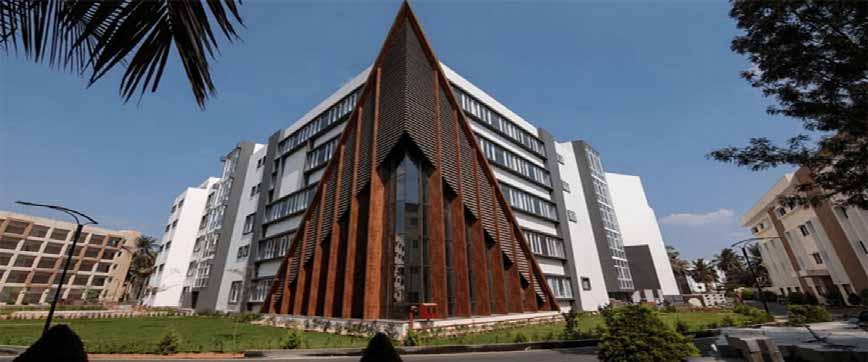
 Justice K S Hegde Institute of Management
Justice K S Hegde Institute of Management
SEASONAL MAGAZINE 87
Nitte institute of Architecture
Pharmacy, Physiotherapy, Allied Health Science, Nursing (full-time), Biological Sciences, Speech & Hearing, Engineering, Commerce & Management, Applied Sciences, Business Administration and Humanities. Meritorious full time candidates will receive Nitte PhD Fellowships of Rs 15,000 per month as per University guidelines.
Nitte University has also introduced a new 4-year BSc (Honors) in Hospitality Management at the Nitte Institute of Hospitality Services in Kodakal, Mangaluru. Nitte Education Trust, through its constituent institution, Sarosh Institute of Hotel Administration (SIHA), has been providing quality hotel management education, since 1992. In recent years,


prospects for students of hotel management programs have expanded.
Keeping this requirement in mind, the university is offeing a new 4-year BSc (Honors) in Hospitality Management. Students will be provided with a combination of traditional classroom instruction and opportunities for hands-on experiential learning, to help develop critical thinking and strategies, receive feedback, work with teams and gain confidence through organising micro and megaevents in the college and university. The university is also getting sufficient support from Central and State Governments in recognition of its various initiatives. Recently, Nitte University was selected by
Department of Science and Technology (DST), Government of India, to have a Technology Enabling Centre (TEC), which is one of the 10 such centres established at the national level. The TEC is mandated to assess the technology and service needs of Micro, Medium and Small Enterprises (MSMEs) in Karnataka to enable access.
Nitte University is a part of Nitte Group run by Nitte Education Trust, which was founded in 1979 by Justice Kowdoor Sadananda Hegde, former Chief Justice of the Supreme Court and former Speaker of the Lok Sabha. Offering education in diverse areas of learning, Nitte today offers a total of 130+ programs including medicine, engineering, management, hospitality, allied health sciences, dentistry, pharmacy, nursing, physiotherapy, speech and audiology, media & communication and architecture. The Trust has established 40+ institutions spread across three campuses at Nitte, Mangalore and Bangalore and has over 20,000+ students and 4500+ faculty in its campuses.
N.M.A.M. Institute of Technology
Nitte Institute of Hospitality Services

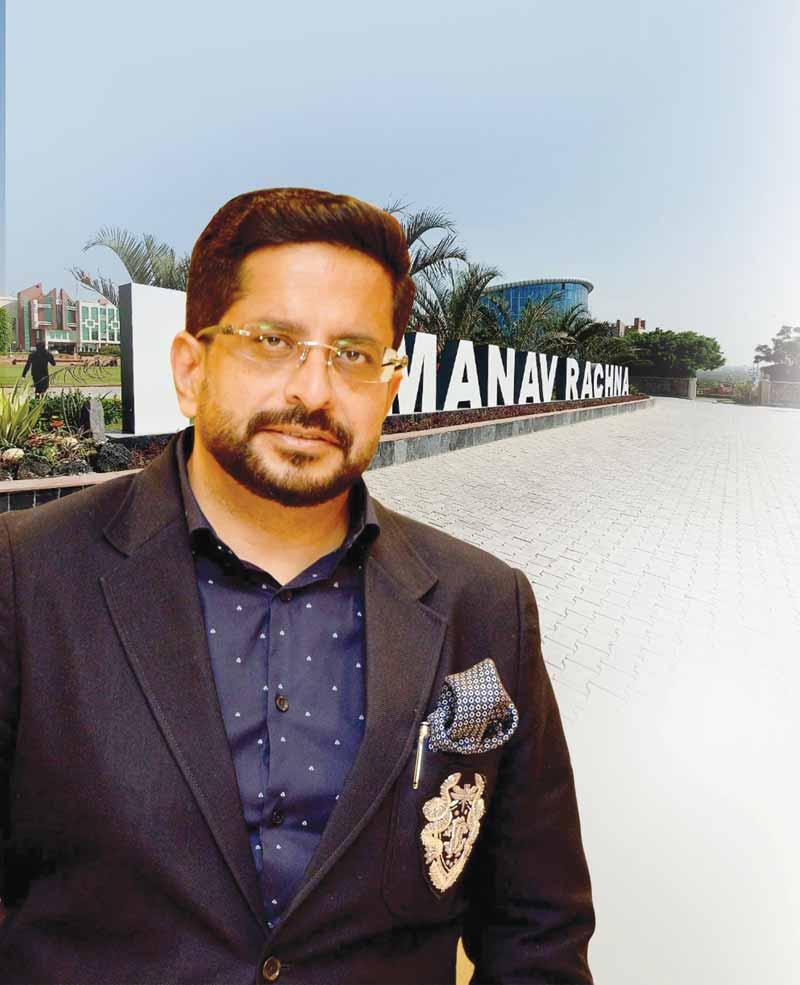
LEADERSHIP ACROSS
CURRICULUM, PLACEMENTS, RESEARCH & INCUBATION
Faridabad based Manav Rachna Educational Institutions (MREI), comprising of Manav Rachna International Institute of Research & Studies (MRIIRS), a deemed-to-be university, and Manav Rachna University, are excelling in every facet of higher education be it accreditations, tie-ups, industry-led curriculum, research, startup incubation, internships or placements. A strong player in diverse domains like engineering, management, hospitality and more, Manav Rachna's innovations in its MBA Programs have been truly remarkable, and is a model worth emulating by peer B-Schools in the country. The Manav Rachna Business Incubator is set across more than 5,000 square feet area and has spawned over 80 startups so far, making it one of the most productive of such facilities in the country. In the field of applied research, Manav Rachna scholars, including both faculty and research students, have so far filed for over 535 patents, presented around 7800 research papers in international & national journals as well as in global conferences, and has an impressive 28h index for quality publications as per the SCOPUS database.

MANAV RACHNA
Manav Rachna continues to innovate across all facets of higher education and nowhere is it more seen than in its MBA programs. Already, the MBA program has been a forte of Manav Rachna campuses, and it has strengthened it even further by adopting a unique 4-tier mentoring program (peer, industry, faculty & alumni mentors) that the students are bestowed with during the MBA, which prepares them to be both ‘mentees’ and ‘mentors’. To accelerate industry interaction and understanding of the industry dynamics among the students, students are also given an opportunity to work on more than 120+ case studies.
Manav Rachna has a Strategic Mentoring Board, whose members bring their leadership skills, experience and business acumen to the management classrooms. The board comprises of thought leaders of the industry including SY Siddiqui, Executive Advisor, Maruti Suzuki India; Mr. Rajeev Dubey, Advisor, Mahindra & Mahindra; P Dwarkanath, Executive Director – HR, GSK; and many other ace professionals from leading MNCs and Indian companies like Soft Bank India, PwC, Indian Oil, AIMA, Hero Motors, HCL, and many more.
Manav Rachna also has senior management professionals deployed as ‘Professor of Practice’ who bring several years of their industrial experience to impart insights integral to the market readiness of the students. This elite team of professors include Dr. Vikas Singh, Behavioural Economist, Author & Mentor; and Anil Chopra, Senior Management Executive, among others. Industry veterans also interact with the management students of Manav Rachna under its flagship lecture series ‘Countdown to Corporate Careers’, which has been delivered by several industry stalwarts from both the private and public sectors.
Manav Rachna has been able to source mentors from its alumni base too due to some unique achievements. Over the decades, it has never shied away from building up formidable departments in almost every domain that matters
including engineering, business management, economics, computer applications, humanities, education, law, commerce, psychology, interior design and more. This has resulted in a huge and successful alumni base of over 34,000 professionals, who have been well employed with over 500 reputed MNCs and Indian companies.

Thanks to this, Manav Rachna alumni today includes ace engineers, senior managers, country representatives of international firms, judges, lawyers and more. This widespread presence helps Manav Rachna in different ways, one being such mentor roles they play, and the other being that their companies have regularly come to source candidates from Manav Rachna campuses.
Besides this, the Manav Rachna
classroom adopts an experiential learning approach, thereby using different pedagogical means like exercises, case studies, field visits, lab exercises, research projects, and workintegrated activities. Students also get a diverse outlook through the student exchange program.
To provide ample practical exposure, Manav Rachna organizes various leadership building activities for management students that include MBA Roadies, Young Leaders Conclave, MRCON International Conference, HR Round Table, and Outbound Experiential Learning. These programs fine tune the skills of MBA students in leadership, sustainability, technology and entrepreneurship.
Manav Rachna offers MBA Dual Specialization with an industry-specific approach. Some of the specialization options available for students are Finance, Events and Media, Marketing, Human Resource and Organizational Behavior, International Business, Information System, Business Analytics, Entrepreneurship and Small Business Management, Operations Management, Banking and Insurance Management, Aviation Management, Healthcare Management, and Waste Management.
Pursuing MBA degree in Business
MANAV RACHNA ALSO HAS SENIOR MANAGEMENT PROFESSIONALS DEPLOYED AS ‘PROFESSOR OF PRACTICE’ WHO BRING SEVERAL YEARS OF THEIR INDUSTRIAL EXPERIENCE TO IMPART INSIGHTS INTEGRAL TO THE MARKET READINESS OF THE STUDENTS.
Analytics from Manav Rachna has multiple other advantages like exposure to the state-of-the-art data visualization tools, getting hands-on experience in the industry by learning under the mentorship of the industry experts, exposure to live projects and internships, a continuous evaluation process that ensures that learning remains intact and much more.
This specialized MBA program is offered in collaboration with IOA (The Institute of Analytics) - The Global Body of Analytics, UK, making Manav Rachna University the first University in NCR to collaborate with IOA for Business Analytics. The Institute of Analytics (IoA) is the Professional Body for Analytics and Data Science professionals in the UK and therefore highly respected across the world.
No wonder then that Manav Rachna's MBA students have achieved remarkable placements across the industry spectrum in companies like KPMG, Fortis, Reliance Jio, Jaro Education, Amazon, Grofers, IBM, Zomato, HT Media, IndiaBulls, PayTM,
BYJU’s, Bank of America, Ericsson, Airtel, Indian Oil, American Express, Ernst & Young and many more.
Two other areas in which Manav Rachna has forged ahead of competition is startup incubation and applied research, much like the world's best universities. Day in and day out, Manav Rachna Educational Institutions (MREI) witness a hotbed of activity at its state-of-the-art research labs, research and innovation clusters, innovation and incubation centre, and in its research projects, including funded R&D projects. Altogether, this robust ecosystem helps in grooming students in advanced areas. In a first of its kind international tie-up, global research publications major
Springer Nature has launched its first Academic Research Lab in India at Manav Rachna Educational Institutions. In the field of applied research, Manav Rachna scholars, including both faculty and research students, have so far filed for over 535 patents, with a significant percentage of them being granted. These Manav Rachna research scholars have also presented around 7800 research papers in international & national journals as well as in global conferences with participation from over 13 countries. Manav Rachna boasts of 28-h index for quality publications as per the SCOPUS database.
The Manav Rachna Business Incubator is set across more than 5,000 square feet area and caters 24X7 to the requirements of budding entrepreneurs. Over the years, more than 80 companies have been incubated at Manav Rachna Campus, which have earnestly begun their participation in the global phenomenon of creating job providers rather than job seekers.
Faridabad based Manav Rachna Educational Institutions (MREI) in the field
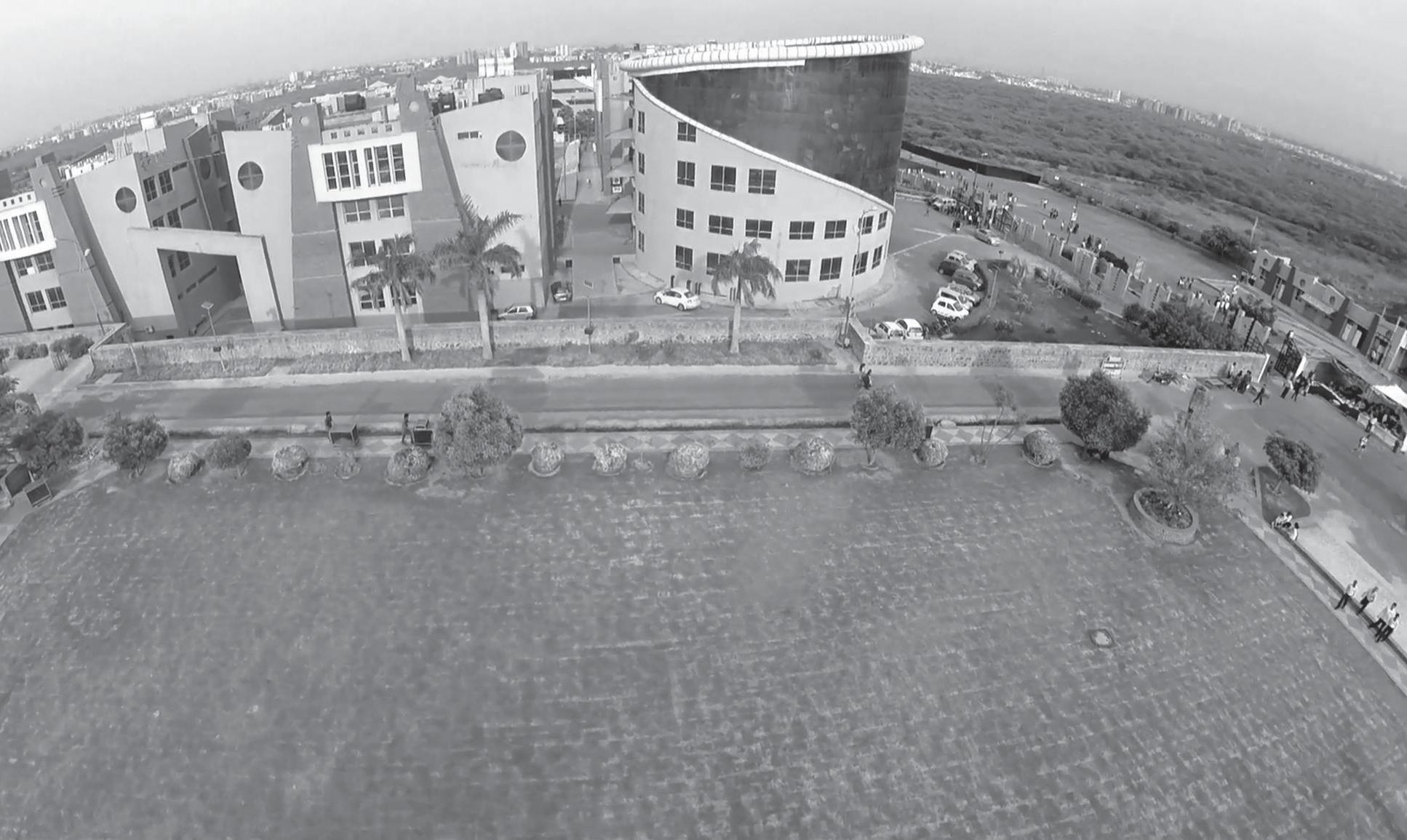
THE MANAV RACHNA BUSINESS INCUBATOR IS SET ACROSS MORE THAN 5,000 SQUARE FEET AREA AND CATERS 24X7 TO THE REQUIREMENTS OF BUDDING ENTREPRENEURS.
of higher education include Manav Rachna International Institute of Research & Studies (MRIIRS) and Manav Rachna University. Both have the coveted NAAC ‘A’ Grade accreditation, and have also been internationally benchmarked by QS.
Manav Rachna International Institute of Research and Studies (MRIIRS) is a Deemed-to-be-University under the UGC Act, and has been awarded QS 5-Star rating for Teaching, Employability, Academic Development, Facilities, Social Responsibility, and Inclusiveness.
Manav Rachna University is a private university constituted under an Act of the Haryana State Legislature, and has been bestowed with the QS I-GAUGE Overall DIAMOND rating. It has received a QS I-GAUGE Diamond Rating for Excellence in Teaching and Learning, Faculty Quality, Facilities, and Social Responsibility and QS I-GAUGE Platinum Rating for Employability and Academic Development.

Admission to these Manav Rachna universities are done competitively, fairly and transparently through the Manav Rachna National Aptitude Test (MRNAT) which is a multiple-choice test of 90 minutes covering questions of general aptitude (arithmetic & logical reasoning, general English, general awareness).
This National Entrance Test is conducted for admission to 100+ UG and PG Programmes across Engineering, Law, Education, Computer Applications, Information Technology, Design, Interior Design, Psychology, Allied Health Sciences, Digital Marketing, Physiotherapy, Nutrition & Dietetics, Behavioural and Social Sciences, Business Studies, Commerce, Hotel Management, Media Studies among many others.
One of the highlights of Manav Rachna higher education is the industry-oriented specializations in emerging fields. These include Artificial Intelligence, Machine Learning, Cloud, DevOps and Fullstack Development, Cyber Security & Threat Intelligence, Smart Manufacturing & Automation, Embedded System & VLSI,
Forensics, Business Analytics, Internet of Things, Automation and Robotics, and many more.
Towards this, Manav Rachna has collaborations with several global technology majors including Microsoft, Intel Corporation, Xebia, Mitsubishi
ONE OF THE HIGHLIGHTS OF MANAV RACHNA HIGHER EDUCATION IS THE INDUSTRY-ORIENTED SPECIALIZATIONS IN EMERGING FIELDS. THESE INCLUDE ARTIFICIAL INTELLIGENCE, MACHINE LEARNING, CLOUD, DEVOPS AND FULLSTACK DEVELOPMENT, CYBER SECURITY & THREAT INTELLIGENCE, SMART MANUFACTURING & AUTOMATION, EMBEDDED SYSTEM & VLSI, FORENSICS, BUSINESS ANALYTICS, INTERNET OF THINGS, AUTOMATION AND ROBOTICS, AND MANY MORE.
Electric, Amazon Web Services, Altair, Daikin, Truechip, and Quick Heal. Experts from these companies help in either academic or curriculum delivery and facilitate internships.
A higher education institution may tick many boxes needed for student success, including infrastructure, faculty, curriculum, pedagogy etc, but the ultimate test remains the kind of high achievers it produces. This is a facet in which Faridabad based Manav Rachna Educational Institutions (MREI) have been excelling for many years now. While almost every university, engineering college or business school would have an alumni association, how many of them would dare to present before the public, a collection of their topmost achievers? Yet, this is what Manav Rachna did recently when it created a one-of-its-kind book that
features the impressive success stories of its Top 25 Alumni.
Perfectly titled as 'Utkrisht - Icons of Manav Rachna', this landmark book was launched by none other than one of India's greatest achievers, Kapil Dev, in the presence of Manav Rachna's top functionaries Dr. Prashant Bhalla and Dr. Amit Bhalla, and other dignitaries. The highlight of the book is the kind of diverse and well-rounded achievers that Manav Rachna has produced so far.
Showcasing this diversity, these high achievers were classified into six major categories - Art & Glamour, Entrepreneur Magnets, Government & Administration, Industry Barons, Social Flag Bearers and Sports - thus spanning almost every sphere of high influence in modern society. How is Manav Rachna able to deliver this kind of performance? The simple answer is the kind of world-class
maturity that Manav Rachna has grown into, during the 25 years of its existence. Recently, a Centre of Excellence for Culinary Art was launched at the Faculty of Hotel Management (FHM), Manav Rachna International Institute of Research and Studies (MRIIRS). The Centre has been established in collaboration with Creative Cuisine Inc. Learning (CCi Learning), founded by Virender Handa and co-founded by Chef Kapil Middha. The Centre of Excellence is fully equipped with top-ofthe-line equipment and a comprehensive collection of cooking essentials to prepare students for the industry. To start with, the center is offering B.Sc. in Culinary Arts and will soon be launching an advanced diploma program in the same genre.
Manav Rachna is already an education hub known for its academic excellence


and industry exposure through a multitude of Industry Knowledge Partners that facilitate top-notch learning, training and research benefits. With CCi Learning as their new Knowledge Partner for the Culinary Arts Programme, Manav Rachna students are assured of expert knowledge and skill-based training from the Master Chefs of the industry.
The programme offered at Manav Rachna has been designed with the best in the industry along with the state-of-theart infrastructure created especially to support the holistic learning of students. The Centre has top-notch facilities for teaching and training in Culinary Art.
Like all world-class universities, Manav Rachna is also leaving no stone unturned in attracting top-notch student talent by offering 100% scholarship to them. So far, scholarships worth Rs. 8 crores have been availed by Manav Rachna students based on their score in MRNAT.
PRIVATE R UNIVERSITIES
KARUNYA’S CREDENTIALS AS A WORLD CLASS UNIVERSITY

When Stanford University selected the world’s top 2% of scientists, four were Karunya professors! Like world-class universities, Karunya has also set up 25 Technology Missions backed by interdisciplinary teams. Consistency is key in everything Karunya Deemed University, near Coimbatore, does and achieves. It is accredited at the highest A++ Level by NAAC and has been ranked consistently and consecutively for 4 cycles among the Top 100 institutions in India by NIRF Rankings. It is also rated as a Three Stars Institution in QS Star Rating, and awarded QS E-LEAD certification for exemplary performance in online teaching-learning.
hile most universities in both public and private sectors are running behind emerging technologies so as to stay contemporary and relevant, Coimbatore based Karunya Institute of Technology & Sciences, a deemed-to-be University has been focusing on advancing research and education on four most important focus areas - food, water, healthcare and energy.

This is as per the vision of Dr. Paul Dhinakaran, Chancellor of KITS, who realizes that these four areas will be most useful for not only India, but the whole
of humanity. While technology development is essential, it achieves maximum impact when it starts solving the biggest challenges in these four critical sectors.
According to Dr. Paul, what sets apart Karunya Deemed University is that it is an institution with a social concern. Karunya’s mission is not just to raise scientists and entrepreneurs, but to enable them with the best skills to find solutions by developing products in the areas of food, water, healthcare and energy to solve the most pressing problems of humanity.
Under Dr. Paul’s guidance the top level
academic and research leadership of Karunya has embarked on a most comprehensive and systematic planning initiative to be a big achiever in these focus areas. Towards this, Karunya has set up 25 Technology Missions, each having clearly articulated goals and interdisciplinary teams needed for their success.
These Missions include, 3-D Printing and Additive Manufacturing, Smart Technology for Precision Farming, Small Satellite Technology Mission, Green and Sustainable Manufacturing, Data Analytics & Block Chain Mission, Green Energy Technology Mission, Cyber Security Knowledge Mission, Millets for Nutrition Mission, Drone Technology for Agricultural Mission, Vaccinology for Viral Diseases Mission, Isotope Application Mission, Wetland Conservation Mission and Stem Cell Research Mission.
Other such Missions at Karunya include Technology Mission for Food Security, Smart Intelligent Building Mission, Nanotechnology for Healthcare & Vaccinology Mission, Machine Learning Technologies for Societal Problems Mission, Smart Vehicle Mission, Water Treatment and Desalination Mission, Robotics in Everyday Life Mission,
SEASONAL MAGAZINE 96
Satellite and GIS Application Mission, Smart City Mission, Indigenous and Herbal Medicine, Technology Mission for Rural Development and Medical Devices Mission.
Considerable investments too have been made to make these Technology Missions effective in producing nextgeneration solutions. For example, for the Water Treatment and Desalination Mission, a Centre of Excellence named Water Institute has been set up, and it will be assisted by seven departments of Karunya including the faculties of Civil Engineering, Bio-Technology, Agriculture, Applied Chemistry, Nanoscience & Technology, Mechanical Engineering and Computer Science & Engineering. Outside university tie-ups including overseas tieups too are made whenever necessary.
Karunya has been able to undertake such large scale planning due to its long history in academics and research, facilitated by one of the largest campuses in India that spans 720 acres. Karunya has been in higher education for 36 years, and is today home to over 8000 students and nearly 500 most renowned faculty. When Stanford University selected the world’s top 2% of scientists, four were Karunya professors!
Karunya is accredited at the highest A++ Level by NAAC and has been ranked consecutively for 4 cycles among the Top 100 institutions in India by the National Institute Ranking Framework (NIRF) Rankings under the University and Engineering Institution categories. Karunya is also ranked among the Top 26-50 institutions in India by Atal Ranking of Institutions on Innovation Achievement Ranking. The Deemed University is also approved by UGC and AICTE.
In the international rankings and accreditations too, Karunya has made its mark. It is rated as a Three Stars Institution in QS Star Rating, and awarded QS E-LEAD certification for exemplary performance in online teaching-learning. Karunya is also accredited by NBA & ACCA.
Chancellor Dr. Paul Dhinakaran is ably
assisted in the administration and academics of Karunya by Dr. P Mannar Jawahar, Vice Chancellor; Dr. EJ James, Pro Vice Chancellor (Research and Collaborations); Dr. Ridling Margaret Waller, Pro-Vice Chancellor (Quality Standards); and Dr. R Elijah Blessing, Registrar, as well as the Deans of various Departments and Directors of various projects and initiatives.
The sprawling Karunya campus is also home to several Centres of Excellence, established in partnership with international tech giants including Siemens Limited, Cisco Systems, Novell India Pvt Limited, IBM, Salzer Electronics Limited and the Lancet Commission. Karunya also has nationally acclaimed laboratories for Water Research and Food Processing. Its capabilities in the field of Biotechnology and Nanotechnology are also well known.
Karunya has also spared no expense in deploying one of the best computer laboratories in the country. Systems include high-end IBM PureFlex System,

Blade servers, Rack servers, Workstations and Personal Computers. Green computing is practiced by server consolidation and desktop virtualization using VMware products. A separate Storage Area Network has been commissioned by the Centre for Data Storage.
The Computer Technology Center is well-equipped with licensed software for academic and administrative needs. A state-of-the art campus network with 10 Gbps fiber optic backbone connects all the departments and residence buildings, which include fully furnished residential facilities for boys and girls separately. Internet connectivity is available 24x7 through multiple service providers via Internet leased lines.
Karunya is equipped with gallery classrooms and uses latest teaching aids for providing application oriented teaching. Students have the freedom to choose the course of their study according to their liking with the worldclass Choice Based Credit System (CBCS).
SEASONAL MAGAZINE 97
GALGOTIAS UNIVERSITY IS A LEADER IN THE WORLD OF QUALITY EDUCATION
Greater Noida based Galgotias University has swiftly emerged as a leader in the world of quality education by delivering consistently excellent results across academics, research and placements. Galgotias is inspired to carry forward the vision of Hon. PM Shri Narendra Modi Ji of making India a Vishwaguru and the dream of Hon. UP CM Shri Yogi AdityaNath Ji of making Uttar Pradesh a truly Global Knowledge Superpower. It has recently achieved NAAC A+ accreditation with a high score that makes it the second highest among all state private universities in the country. In the NIRF 2022 Rankings too, Galgotias has achieved excellent ranks across several domains, including

SEASONAL MAGAZINE 98 PRIVATE R UNIVERSITIES
engineering, management and pharmacy. In the OBE Rankings 2022, the university is placed in the Platinum Band with Grade A++. Galgotias’ MBA and BPharm programs are also NBA accredited for adhering to world class standards. When it comes to innovation and innovation too, the university has been top ranked, having been placed in the Excellent band under the Union Government’s ARIIA framework. And Galgotias University shot into national limelight recently when it received 3,99,373 applications under the newly introduced CUET exam, thereby becoming one among the topmost 8 preferred universities in the country for admissions. For the academic year 2022-23, the university’s admissions are now open for several career focused UG/PG/PhD degrees across almost every domain including engineering, computer science, business, pharmacy, nursing, medical & allied sciences, law, hospitality & tourism, agriculture, media & communication studies, liberal education, basic & applied sciences, finance & commerce, and more. Under the dynamic leadership of its CEO Dhruv Galgotia, the young university has succeeded in attracting exceptional faculty, forged tie-ups with MNC majors like Infosys, Cognizant & Wipro for the benefit of students, and is also planning a major foray into the healthcare and hospitals sector.
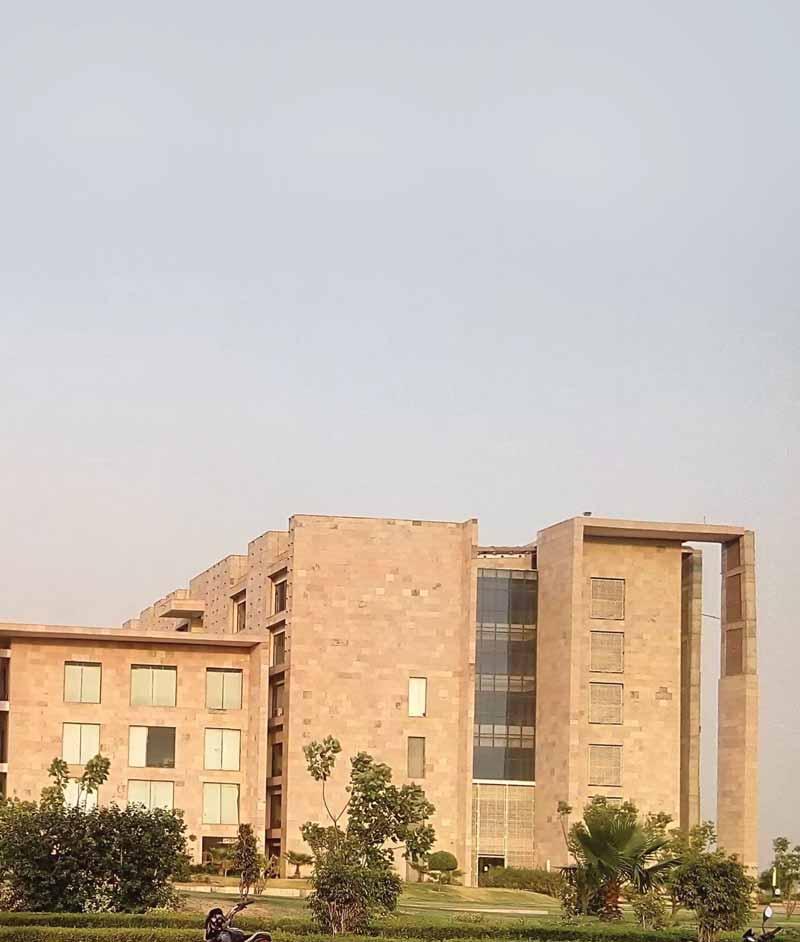
SEASONAL MAGAZINE 99
Galgotias University has recently emerged as a national leader in higher education by bagging the highest benchmark in academic excellence - NAAC A+ accreditation - in its first accreditation cycle itself. With a NAAC Score of 3.37 out of 4, Galgotias has also become the only private university in Uttar Pradesh with such a high score, and the second highest among all state private universities in the country.
In the recently released NIRF 2022 Rankings, Galgotias has attained 59th Rank in Pharmacy, 93rd Rank in Management and 147th Rank in Engineering.
With over 96% placements including in some of the world’s largest firms, during the last five years, including the most troubling pandemic years, the Greater Noida based Galgotias University has also achieved the escape velocity needed to climb to an international orbit.

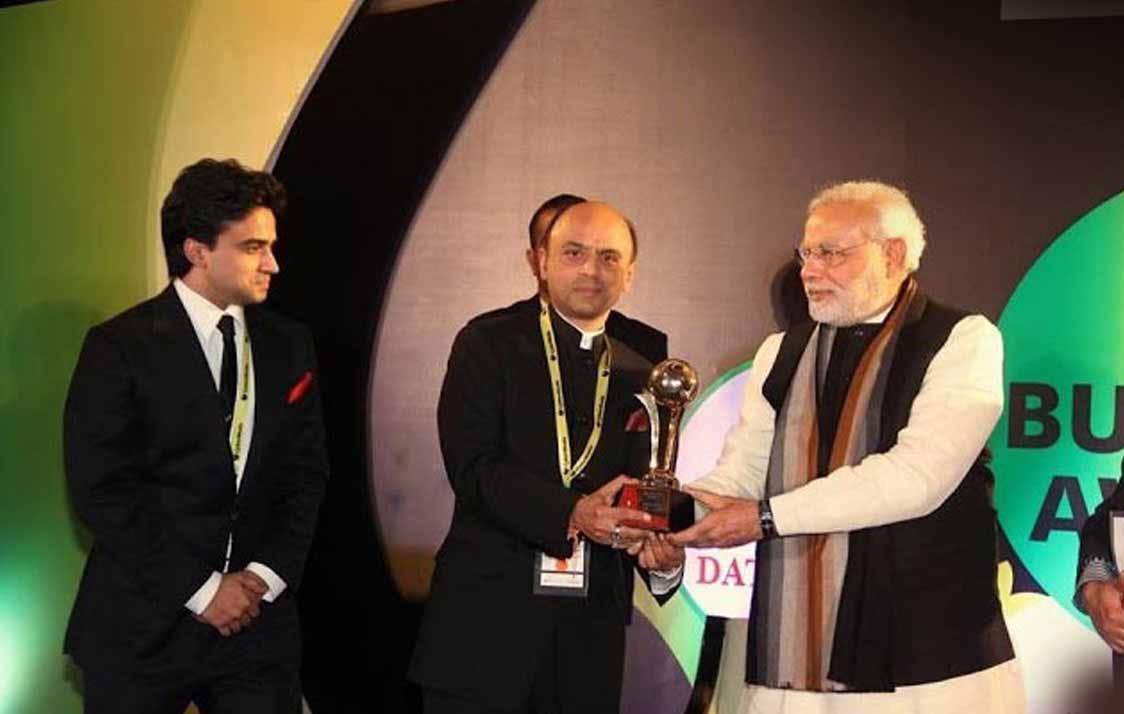
For the 2021-22 batch, there were over 4500 offers from over 450 recruiters, with 32% students getting Dream Offers, and an overall average CTC of 5.25
Lakhs Per Annum. The highest package this year was Rs. 44 LPA from Microsoft, bagged by BTech CSE student Guru Prakash Singh.
In MBA placements too, Galgotias has come out with flying colours with 850+ offers from 300+ recruiters with highest CTC being Rs. 17.55 LPA and Average CTC being Rs. 5.10 LPA.
On the admissions front too, Galgotias has been faring well, coming in as the 8th most preferred university in CUET, after majors like Delhi University and BHU. Almost all Departments of Galgotias have been faring excellently, with School of Hospitality & Tourism getting 2nd Rank in UP in GHRDC Survey; BPharm Program getting NBA accredited; School of Nursing achieving 100% placement; and School of Law getting 3rd Rank in a recent national survey. Three GU students have also been selected for this year’s prestigious Google Summer of Code program. Galgotias University has also been ranked among the top institutions worldwide in teaching and facilities by the QS star rating system.
PM SHRI NARENDRA
SEASONAL MAGAZINE 100
GALGOTIAS IS INSPIRED TO CARRY FORWARD THE VISION OF HON.
MODI JI OF MAKING INDIA A VISHWAGURU.
Typically, when universities are assessed by the public or even some of the rating agencies, what counts more is the achievements - like campus placements, highest CTC, research projects, startups incubated etc. But for all such achievements to flow sustainably from an individual, he or she needs to have emotional intelligence first. Otherwise such achievements will just be a one-off event that can’t be replicated for their own benefit and the benefit of the community around.

With this idea in mind, Galgotias University has been trying to inculcate emotional intelligence into its courses, and it achieved a breakthrough recently when it became the first private university in India to conduct a value added course on non-violent communication.
The 30-hour value added course on nonviolent communications involved a series of lectures on the theme ‘Non-Violent Communications’ designed and delivered by Gandhi Smriti and Darshan Samiti (GSDS), Ministry of Culture, Govt. of India. The lecture series was an outcome of a collaborative effort of the Department of Humanities, School of Liberal Education, Galgotias University and GSDS.
The course was made available to Galgotias’ undergraduate and postgraduate students for their allround development including academic and personal development. A pre and post survey too was

SEASONAL MAGAZINE 101
conducted and presented in the event to map out behavioral change among the youngsters. The survey indicated a positive intervention and held a future prospect of constructive impact in students’ lives. To ensure national standards for its postgraduate programs and to ensure greater transparency, Galgotias University has become one of the eight new universities that have opted for the Common University Entrance Test PG (CUET PG). Earlier, the new test was launched with the participation of 42 participating universities, dominated by 35 Central Universities and prestigious names like Jawaharlal Nehru University (JNU), New Delhi, and The English and Foreign Languages University (EFLU), Hyderabad. With the farsighted vision by Galgotias University to be a pioneer in this new program by the Central Government, it has become one among 50 internationally renowned universities and institutes of India. Administered by the National Testing Agency (NTA), the CUET PG is an online entrance exam that provides a common platform and equal opportunities for admission to these 50 prestigious universities. It will be a computer based test for admissions to various courses like MA, MSc, MCom and LLM at these participating universities and will be conducted in both English and Hindi.
Galgotias University was recently the host for the Grand Finale of Toycathon 2021-2022 (Physical Edition). Under the ‘Aatmanirbhar Bharat Abhiyan’ initiated by Prime Minister Narendra Modi, Toycathon 2021 was conceived to challenge India’s innovative minds to conceptualize novel toy and games based on Bharatiya civilization, history, culture, mythology and ethos.
Toycathon is an inter-ministerial initiative organized by the Ministry of Education’s Innovation Cell with support from All India Council for Technical Education (AICTE), Ministry of Women and Child Development, Ministry of Commerce and Industry, Ministry of MSME, Ministry of Textiles, and Ministry of Information and Broadcasting.
Galgotias University has been attracting top-notch talent to its advisory and faculty panels. The University grabbed national eyeballs when it took in Justice JR Midha who had retired as a Delhi High Court Judge in 2021 to be an Advisor and Professor Emeritus.


The unique reason behind this enrollment was that Justice Midha’s has a vision to reform legal education in India. This renowned scholar and practitioner has been exhorting for an overhaul of professional advocacy skills based on the development of rational thinking, logical processes, legal reasoning and strong communication skills.
Soon enough, Justice Midha’s vision resulted in a first initiative, when Galgotias University recently launched India’s first judicial training programme under his mentorship. Galgotias’ School of Law has collaborated with Universal Institute of Legal Studies & Law Curators for this prestigious “Advanced Course
SEASONAL MAGAZINE 102
Galgotias University follows the dream of Hon.
UP CM Shri Yogi
AdityaNath Ji of making Uttar Pradesh a truly Global Knowledge Superpower.

on Judicial Service & Professional Advocacy”.
Galgotias University has also won much appreciation for providing this Value Added Course free of cost to the students. The course will prepare students to be updated on recent case laws, and inspire in them the importance of hard work, dedication and perseverance to be an ace legal professional.
In recent years, Galgotias University has also strengthened its flagship engineering programs for which it has been most famous. Industry tie-ups are continually being forged and strengthened so that GU graduates and postgraduates in engineering are industry-ready from day one of their careers in corporates of any size or scale. Such tie-ups include guest lectures from industry experts, internships, joint curriculum development and many more such activities.
These are being pursued on a continuous basis and the major such programs at Galgotias University include Infosys-Campus Connect Programme, Cognizant Digital Nurture and Wipro Talent Next. GU students are already reaping rich dividends by way of internships and placements from such partnerships for which the management has always taken a proactive stance.
Galgotias University, despite being relatively young, has an overall placement status of 96%. Even in the recent pandemic years, when recruitments nosedived at many peer universities, Galgotias has stood its ground. The average CTC has also been on a continual
rise despite the emerging challenges across the industry sectors. Overall, Galgotias has placed over 1 lakh students in reputed companies so far.
Galgotias has also emerged as one of the first private universities in India, to attain the prestigious NBA accreditation for several of their programs at an extremely rapid pace. These accredited programmes include Computer Science & Engineering, Mechanical Engineering and Communication Engineering. GU has fared well in national rankings like NIRF and global rankings like QS and Times Higher Education. Its overall NIRF ranking is steadily moving up, while its pharmacy and management programs have received attractive positions. Galgotias’ School of Hospitality & Tourism has also recently won a coveted global certification.
Dhruv Galgotia, CEO of Galgotias University, is also pursuing a major foray into the healthcare sector with an investment of Rs. 1200 Crores in the next 3 years. The venture, Galgotias Hospitals Pvt. Ltd. plans to establish one 500 bedded hospital in Greater Noida with state of the art equipment imported from Germany and United States of America. A second hospital is also being planned for Gurgaon. The full foray over the next several years will see 10 hospitals pan India each with 500 beds.
Galgotias Hospitals is also working out tie-ups with world class research hospitals and medical centres in Singapore and USA to ensure the latest technologies and know-how are brought to India and offered to the people of India at affordable costs. Medical tourism is also being eyed, with the Greater Noida Hospital being attached to a 5 star super deluxe hotel, having a separate division for international patients and customers wanting to get world class treatments and medical care at affordable costs in India.
Some of the specialities being planned for Galgotias Hospitals are Cardiac Surgery, Electrophysiology and Pacing, Clinical and Preventive Cardiology and Interventional Cardiology, where an integrated team of cardiac surgeons and cardiologists will work together. A fully dedicated wing for cancer patients is also being planned.
Galgotias Hospitals will be backed up with the latest technology including a unique hybrid operating suite, dedicated teams of cardiac / cancer/ laparoscopic surgeons with more than 200 types of Surgeries being performed by specialized doctors. The hospitality foray is poised to make Galgotias Group’s valuation to cross Rs. 5000 crore.
SEASONAL MAGAZINE 103
PRESTIGE ESTATES FOR AN EVEN BETT
FY’22 had gone down in India’s real estate sector, with a unique change in the pecking order. Noted Bengaluru headquartered developer, Prestige Estates Projects had zoomed past sector leaders DLF, Macrotech (Lodha) & Godrej Properties by way of sales booking in the last quarter of FY ’22. If anyone thought it was a one-off or anomaly, Prestige has proved that they are wrong, in Q1 of this fiscal. Despite the significant headwinds by way of the 140 bps interest rate hikes, and unprecedented cost escalations, Prestige has shown significant momentum with Q1 sales booking jumping 310% on a year-on-year basis to over Rs 3000 crore. The overall momentum was striking as it translated to Prestige selling almost 28 homes every day of Q1, with a total of 3.63 million sq ft spanning 2560 units at an average pricing of Rs. 8500 per sq ft. Prestige seems to have clearly benefited from the market’s consolidation to the more organized and credible players post RERA implementation in the country. For Chairman & Managing Director, Irfan Razack, the emergence of Prestige into national leadership and international limelight is a matter of vision fulfilled as he has always guided the listed developer to be highest in quality and ambition, but lowest in noise. A bigger story in Prestige Estates Projects is that it is targeting to sell properties worth at

SEASONAL MAGAZINE
IS READY TER FY’23

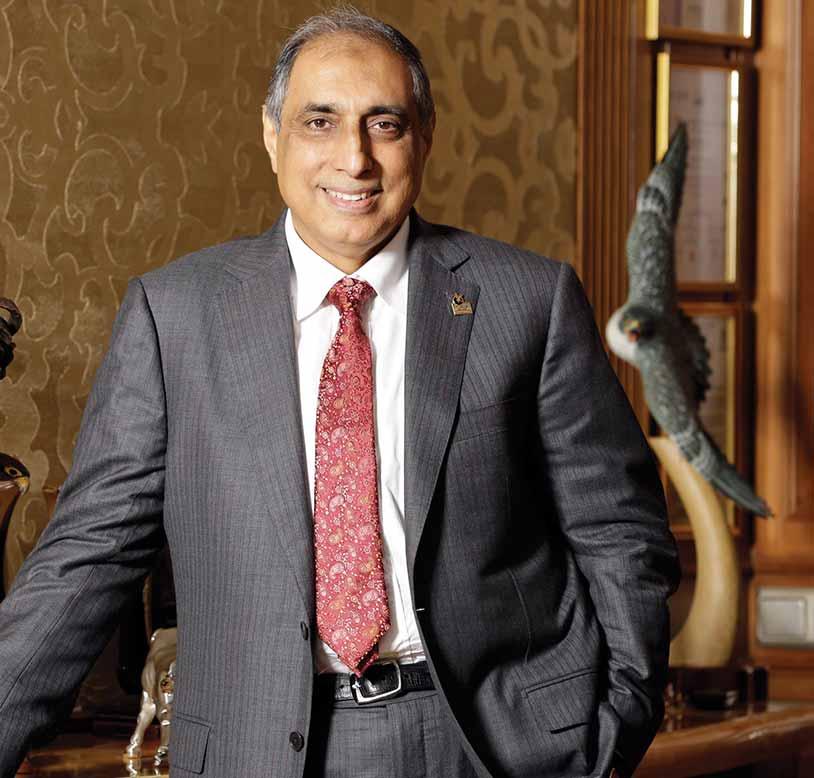
MAGAZINE
SEASONAL
least Rs 12,000 crore this fiscal, up 16% annually, with 8,500 crore coming from its core market of Bengaluru and the rest from other cities such as Mumbai and Hyderabad. Already, around Rs 750 crore of sales bookings in Q1 had come in from its new market of Mumbai. To achieve such high growth Prestige has plans to launch multiple projects, having close to about 15 million square feet of area, in the upcoming quarters of this fiscal year, apart from selling its inventories in the ongoing projects. Close on heels of its success in Mumbai, Prestige is also planning to launch a project in the Noida market this fiscal.
When it comes to capital markets, there is nothing like being a leader. From TCS to Asian Paints and from Reliance to HDFC Bank, it is a winner-takes-it-all market. Eyes of the foreign and domestic institutional investors, who basically drive the Indian equity market, are forever focused on the longstanding sector leaders, and on emerging leaders if any. That is why Prestige Estates Projects is in international limelight right now, after their FY’22 numbers were published. For, in this past fiscal, Prestige has stunned most industry watchers to emerge as the largest developer in India in terms of sales booking, ahead of traditional sector leaders including DLF, Macrotech (Lodha) & Godrej Properties. If you are stock savvy, you will now be eager to know the market cap of Prestige vis-a-vis these peers, and the answer is it is way too low - only 46% of Godrej, 34% of Macrotech and 22% of DLF. Yes, by now, you will be able to guess where Prestige is headed, and that is only one reason why Prestige Estates is in international limelight right now!

When the Q4 and annual numbers of India’s top four listed developers came in, there were many interesting trends to detect. For one, all were in serious sales upswings. But Prestige squarely beat all the other threeDLF, Lodha & Godrej - in absolute sales bookings during the past fiscal, and also on percentage terms, except for DLF.

Against Lodha’s sales bookings of Rs. 9024 crore, DLF’s Rs. 7273 crore, and Godrej’s Rs. 7861 crore, Prestige recorded a sales booking of Rs. 10,382 crore, beating them all by a wide margin. Needless to say, it is Prestige’s largest sales booking ever too. In percentage terms, while Lodha witnessed a
51% growth in sales bookings and Godrej saw a 17% growth, Prestige grew by 90%, second only to DLF’s 135% growth which was however from a low base last year. There was more to this performance by Prestige than which meets the eye. Firstly, all the other three developers were headquartered in either Mumbai or in DelhiNCR, and their primary development activities concentrated in these two regions, which are the most expensive two realty markets in India. In contrast, Prestige is headquartered in Bengaluru, with its primary developments there, and has only recently entered Mumbai and NCR-Delhi,
which means its highest-value sales are yet to kick in, on a massive scale!
And when it comes to market capitalization, Prestige is much smaller than these three peers that it decisively overtook in sales bookings! And when you go into the internals of this market-cap riddle, you realize that it is indeed a matter of lower valuation, with Prestige’s Trailing Twelve Months (TTM) Price/Earnings (P/E) multiple being at just 15 times, as against 53 times accorded to DLF, 46 times to Lodha and 105 times given to Godrej! Now, with Prestige emerging as the sales leader, expect a big shakeout in the realty sector valuations!
No wonder then that international heavyweights like Morgan Stanley and JP Morgan are both having ‘Overweight’ stance on the Prestige stock with targets of Rs. 612 and Rs. 635 respectively as against the scrip’s price of around Rs. 425 now. One reason why Prestige has been able to do quite well in FY’22 is its unwavering focus so far on the Bengaluru market. The Silicon Valley of India performed quite well in Q4 of FY’22, both in terms of housing sales and new launches. As per ANAROCK Research, Bengaluru saw housing sales of nearly 13,450 units in this quarter, which is an yearly growth of over 55%, while new launches stood at 13,210 units, an increase of 72%.
As the de facto leader of Bengaluru, Prestige reaped rich dividends from this post pandemic trend. There was robust demand for its sprawling Prestige City project in Bengaluru as well as for its new launches in Hyderabad and elsewhere in the country. But the future game changer for Prestige is expected to be its recent foray into India’s economic capital of Mumbai, and arguably the country’s most expensive realty market.

Prestige had launched its first residential projects in Mumbai Metropolitan Region (MMR), including Prestige City at Mulund, Prestige Daffodils at Pali Hill, and Prestige Jasdan Classic at Central Mumbai. The response to these three projects at the launch event itself has been extremely good, attesting to the well-thought of nature of these offerings. Prestige has a stated aim of achieving Rs. 3,000 crore in annual sales from these and upcoming MMR projects. Total launches by Prestige in FY22 stood at 16.77 million square feet. For this ongoing financial year, the company has set a sales guidance of more than Rs. 10,000 crore, which it expects to achieve through a strong pipeline of projects in Bengaluru and other markets like Mumbai. Going forward, more than 50% of the new launches are slated outside of its core Bengaluru market. Prestige has long been pursuing a goal of debt reduction, and it has a stated objective of maintaining net debt/equity ratio at around 0.5x in the medium term. In Q4 of FY’22, the success of this plan was visible with its net debt to equity ratio standing at

0.35x. Net debt fell sequentially or QoQ from Rs. 4,170 crore in Q3 of FY’22 to Rs. 3,360 crore in Q4 of FY’22. The company has achieved this through some extraordinary and well-structured deals during the last two years.
In 2021, Prestige had announced the sale of some of its commercial and residential assets in two phases to the US based Blackstone Group, for reducing its debt. The deal had a total enterprise value of around Rs. 9,160 crore. The second phase of the Blackstone deal has also concluded in FY’22, with the remaining payment of Rs. 250 crore to Prestige expected soon.
During the last three years, Prestige has been witnessing a dramatic period of turnaround. Under Chairman & Managing Director Irfan Razack’s visionary leadership, FY’21 saw Prestige’s profits and RoE nearly tripling, and debt-to-equity diving to one-third of the previous year thanks to the $1.5 billion Blackstone deal.
Unlike many of its southern peers, Prestige has a significant portfolio under lease. Prestige has 29 million sq ft of office space and 5 million sq ft of retail space in various stages of implementation now. The residential sales and commercial leasing activity act as twin engines of growth for Prestige, and are complementary in nature. While sales momentum in the residential segment generates free cash, timely execution in the leasing segment contributes to the further value generation.
Prestige also enjoys significant pricing power in the market, and this has come in handy during this inflationary period that has driven up input and construction costs. To offset this, Prestige has raised prices recently.
But what really matters for Prestige now is the impressive diversifications it is undertaking in warehousing, hospitality, retail and its impressive geographic diversification into Mumbai.
One huge advantage a brand like Prestige Estates holds in India’s realty market is that, having made a name for itself in high quality residential and commercial projects, it can extend that expertise and goodwill to new buzzing segments as they emerge. The firm had some time back made such a silent foray into large Grade A warehouses. For testing the waters, it built two such warehouses in a 15 acre land it held in Malur near Bengaluru.
As in every Prestige project, keen attention went into every detail, especially as it was a learning experience for the company too, as it was doing Grade A warehouses for the first time. But it came out with flying colours with one of the buildings attracting e-com major Flipkart as the tenant and the other being taken by Dhoot Transmission.
Now, having proved itself in this domain with such a pilot project, Prestige Estates is going all out to develop this domain, especially as there is a huge demand from e-commerce companies like Flipkart, Amazon, and several of their smaller peers. Towards this, the company has acquired multiple land parcels in and around Bengaluru as a first step.
Being a Bengaluru headquartered developer, the company has unparalleled expertise in the city, and the city being the e-commerce hub of India also augurs well for it. Later on, Prestige plans to take this vertical to other regions of the country too. But unlike some of its peers,

it is not making a big splash for attracting investors at this stage, despite the warehousing sector attracting $900 million investments in 2021 alone.
Like in everything it does, Prestige wants to differentiate itself in this sector with premium offerings, and it also wants to undertake significant growth and value addition in this vertical, before considering to on-board investors into this. This has been a strategy it did quite successfully in its retail & office space vertical, as seen in the Blackstone deal.
In Grade A warehousing, it is eyeing a unique opportunity, as large organized players like itself with expertise in everything from conceptualization to land acquisition to design to execution to leasing, is rare in this field. That is why Prestige is confident of differentiating its upcoming warehouses from the rest of the pack. By investing significant funds into this vertical on its own, Prestige wants to build one of
the largest Grade A warehousing portfolios in the country.
With its foray into warehousing, Prestige is also closing a gap in its portfolio in retail. Already, it was a noted player in brick n’ mortar retailing, having developed several malls and running them too. Even though it sold off significant retail properties to Blackstone, it remains bullish on physical retailing as it believes that going forward retailing will follow a hybrid model of ecom and brick n’ mortar.
This can be seen from the changing strategies of e-com companies like Flipkart, Amazon, Jiomart etc, all of whom are planning to leverage the tens of thousands of multi-brand and single-brand physical stores owned by individual retailers in malls and high streets for wider reach and rapid delivery to their growing customer base. This means significantly more business for such shops and malls, and Prestige is gearing up for this
future with two new malls under construction and six more malls in the planning stage. When these are complete, Prestige will have double the retail properties compared to the retail assets it sold to Blackstone last year.
With large IT and ITES players starting to bring back their huge workforces back to their offices, Prestige is also eyeing an uptick in the demand for office space. Sensing the green shoots of recovery in office space demand, it is building several such office space projects in multiple cities including India’s economic capital of Mumbai.

Another segment that is witnessing a renewed surge post the pandemic is revenge travel, among both business and leisure travellers, and hospitality properties stand to gain the best benefits out of this. Prestige, which already has a strong foothold in hospitality, is all set to cement it further by a major tie-up with US hospitality major Marriott International for two new hospitality projects in New Delhi. Prestige and its 50:50 joint venture partner DB Realty will develop two Marriott hotels and a convention centre in a 7.7 acre land in Aerocity.
The two projects - New Delhi Marriott Marquis & Convention Centre and The St. Regis Aerocity – are unique in the Indian market. While the former will be the first Marriott Marquis & Convention Centre in India, the latter will be a tribute to Marriot’s flagship hotel in US, The St. Regis New York, and will feature its renowned New York Deli. Together these two properties will bring 779 rooms to the New Delhi hospitality market, and 85,000 sq ft of premium meeting spaces. For the convenience of business and leisure travellers visiting and staying in New Delhi, the two properties are coming up quite near to Indira Gandhi International Airport. And it is not only expansion into such buzzing verticals that Prestige is handling currently. It is in the midst of doing what is historically its greatest expansion ever – a geographic expansion – into Mumbai, arguably the hottest property market in the country for long.
Traditionally, most non Mumbai based developers have however not fared well in the city which is home to stock market titans and Bollywood celebrities, due to multiple reasons. One factor has been the exorbitant cost of land, which has resulted in either super expensive apartments that few
SEASONAL MAGAZINE
developers can market effectively, or the super small apartments for the masses which witness intense competition between almost all kinds of developers. Into such a scenario has Prestige entered boldly with some unique projects.
Prestige’s very first project in Mumbai, Jasdan Classic in Central Mumbai speaks volumes about their strategy for the city. Even when some of the largest Mumbai based developers prefer far away suburbs for premium projects, Prestige has chosen an inside city land at Byculla West for this flagship project. Jasdan Classic consists of two skyscrapers with 233 ultra luxury homes. They are relatively large sized apartments with configurations of 2,3,4-BHK and priced between Rs. 3.69 crore and Rs. 9.44 crore.
Jasdan Classic is spread over 2.2 acres of land, with each tower of 45 storeys. Nine levels of podium parking, three levels of clubhouse and plush amenities like an infinity swimming pool, gym, spa, squash court, & multi-purpose hall are available inside the sprawling project.
All the apartments here are designed in spacious layouts with ultra-modern living areas, large windows for cross ventilation and balconies featuring breath-taking views of the South Mumbai cityscape. The Arabian Sea on the West and the Eastern Harbor on the East sets the perfect tone of style and class for the prospective homebuyers here.
The message from Prestige is loud and clear – they are not compromising on location, or space offered or on ultra-premium amenities. While marketing such a project is a tough call for many developers, Prestige is confident of handling it comfortably, and besides that, since there are only 233 homes to sell, this flagship project from Prestige is likely to be a sure and steady sell-out.
The selection of a hot and expensive location like Byculla West in Central Mumbai for their flagship project, is not a one off strategy either. Upcoming residential projects from Prestige in Mumbai would be at similar hot locations like Pali Hill at Bandra and Marine Lines. Prestige has boldly entered such super premium micromarkets, with a keen insight that for a change many high net worth
families would prefer luxury homes in such prime locations rather than in the outskirts or suburbs of the city.
That is, if such projects were available. For long now, such homes from tier 1 branded developers were rare. In its upcoming commercial developments in Mumbai too, Prestige wants to develop in the best addresses, like it has always done in Bengaluru. This has led to it choosing land parcels in prime locations like Mahalaxmi and Bandra Kurla Complex for its first two commercial projects in the city.
However, this doesn’t mean that Prestige would be shying away from the other end of the housing spectrum in Mumbai, the relatively affordable segment. The listed developer has carefully chosen the buzzing suburb of Mulund for its foray into this segment. Interestingly, this is its largest land parcel so far in Mumbai, and given the intense competition there among most of the large players, expect Prestige to offer a significantly differentiated range of homes.

SEASONAL MAGAZINE































 FIFTH PROGRESSIVE PUNJAB INVESTORS SUMMIT
FIFTH PROGRESSIVE PUNJAB INVESTORS SUMMIT



































































































 ICFAI Law School Hyderabad
ICFAI Law School Hyderabad



 Prof. (Dr.) C.S. Shylajan , Dean, IBS, Hyderabad
Dr. C. Rangarajan, Chancellor IFHEProf. (Dr.) J. Mahender Reddy Vice Chancellor Prof. (Dr.) Bidyut K. Bhattacharyya Pro VC.
Prof. (Dr.) C.S. Shylajan , Dean, IBS, Hyderabad
Dr. C. Rangarajan, Chancellor IFHEProf. (Dr.) J. Mahender Reddy Vice Chancellor Prof. (Dr.) Bidyut K. Bhattacharyya Pro VC.



 Dr. AVN Rao, Director, ICFAI Law School, Hyderabad
Dr. AVN Rao, Director, ICFAI Law School, Hyderabad





















 Justice K S Hegde Institute of Management
Justice K S Hegde Institute of Management

































